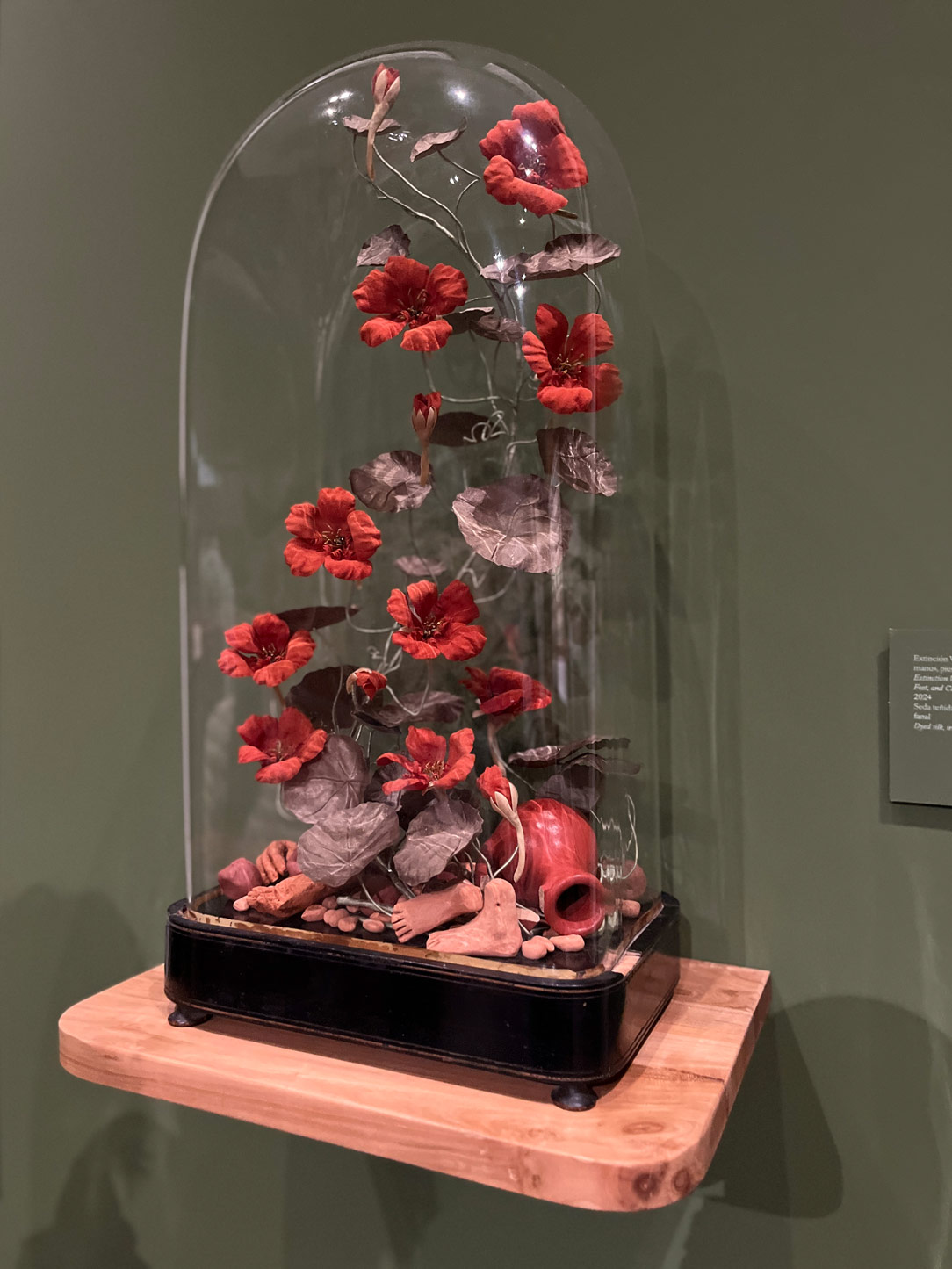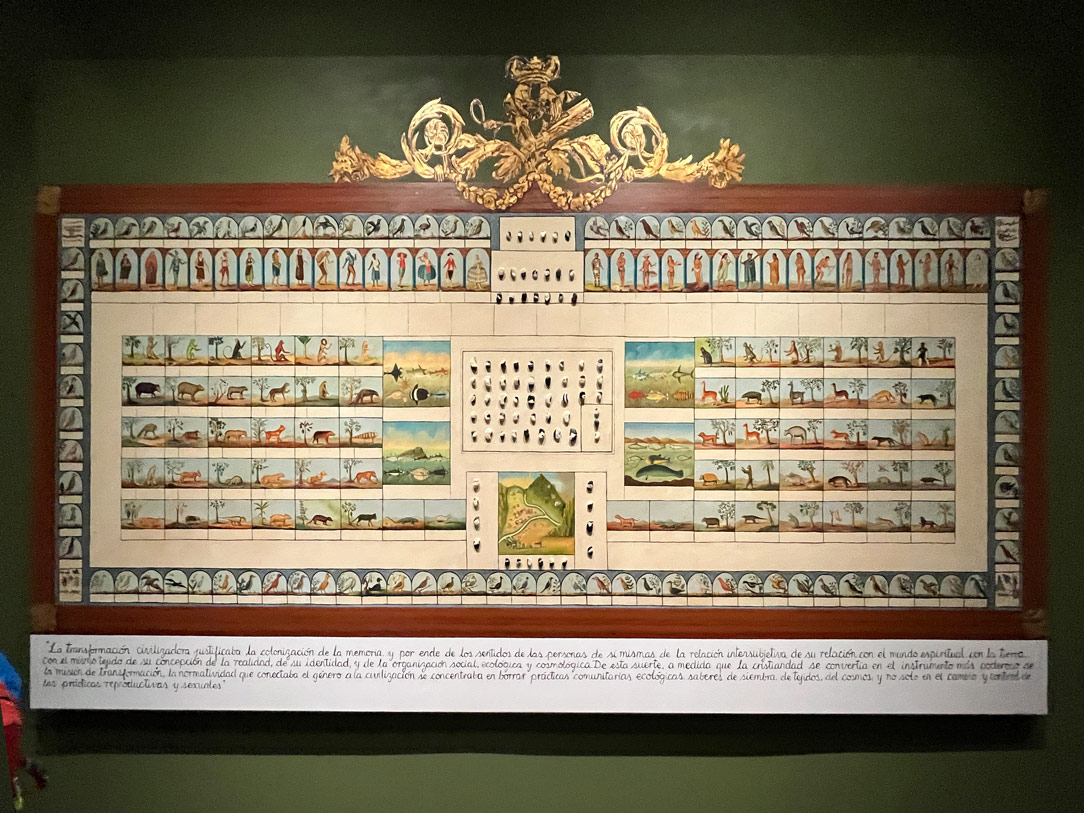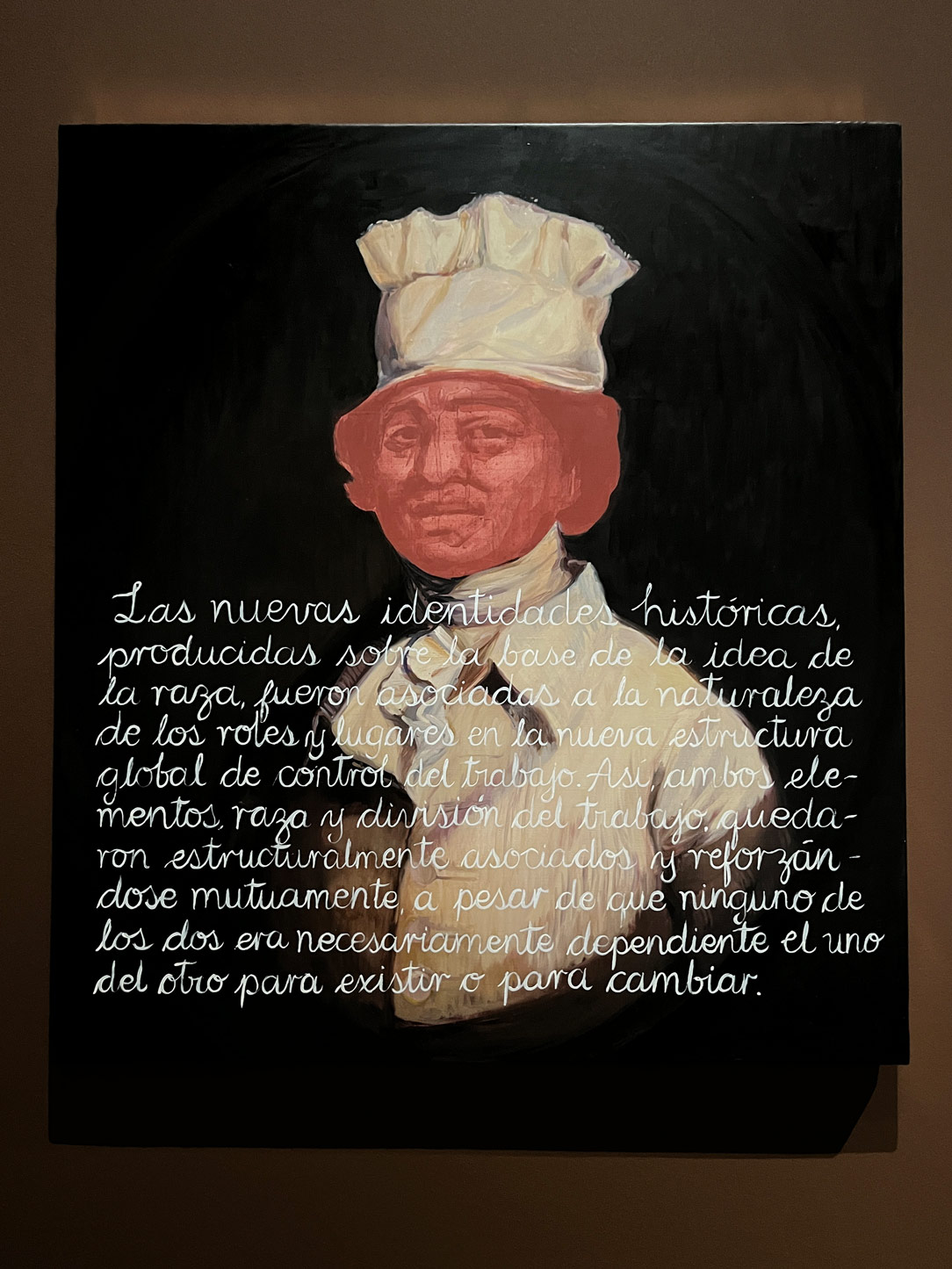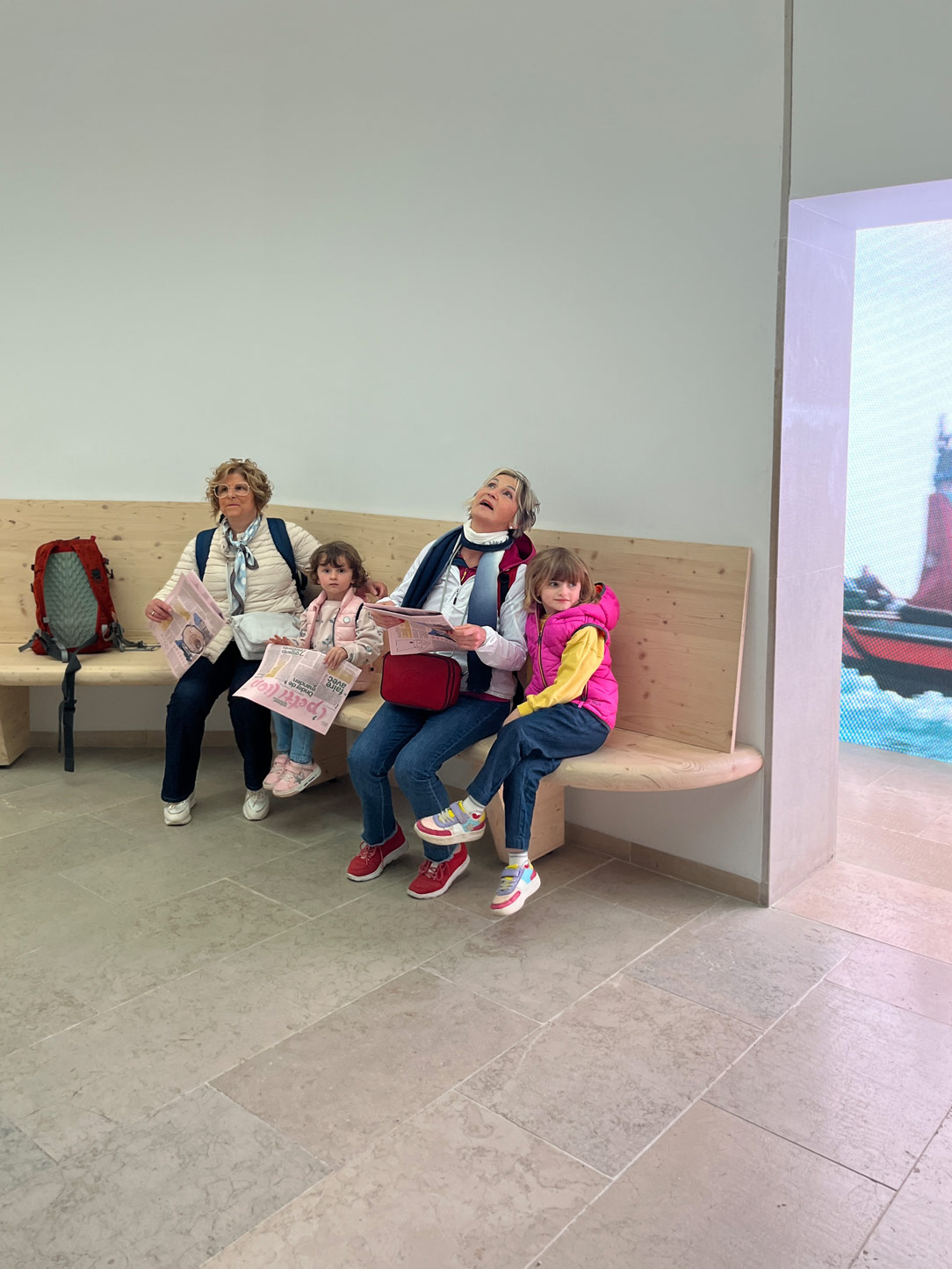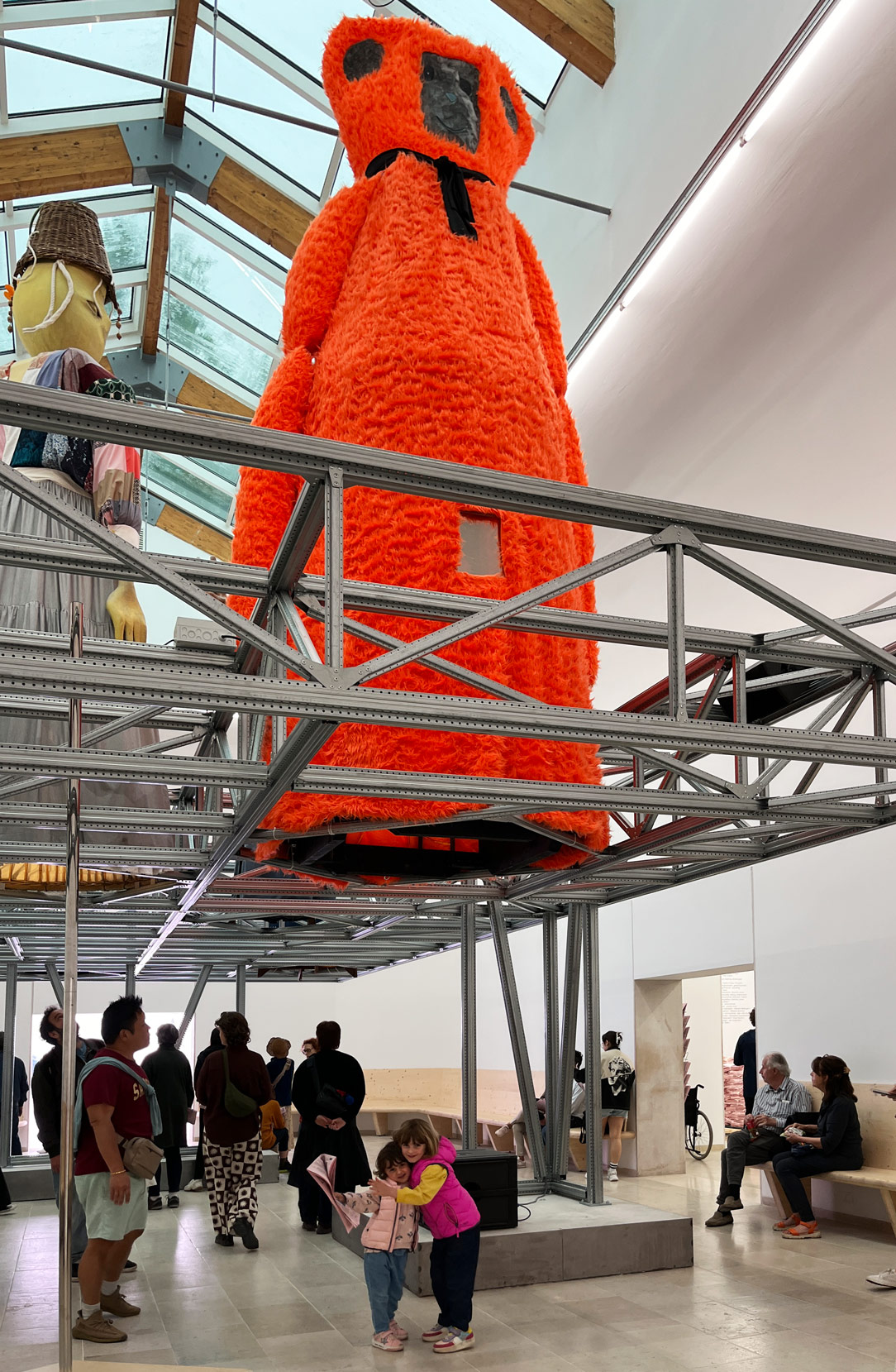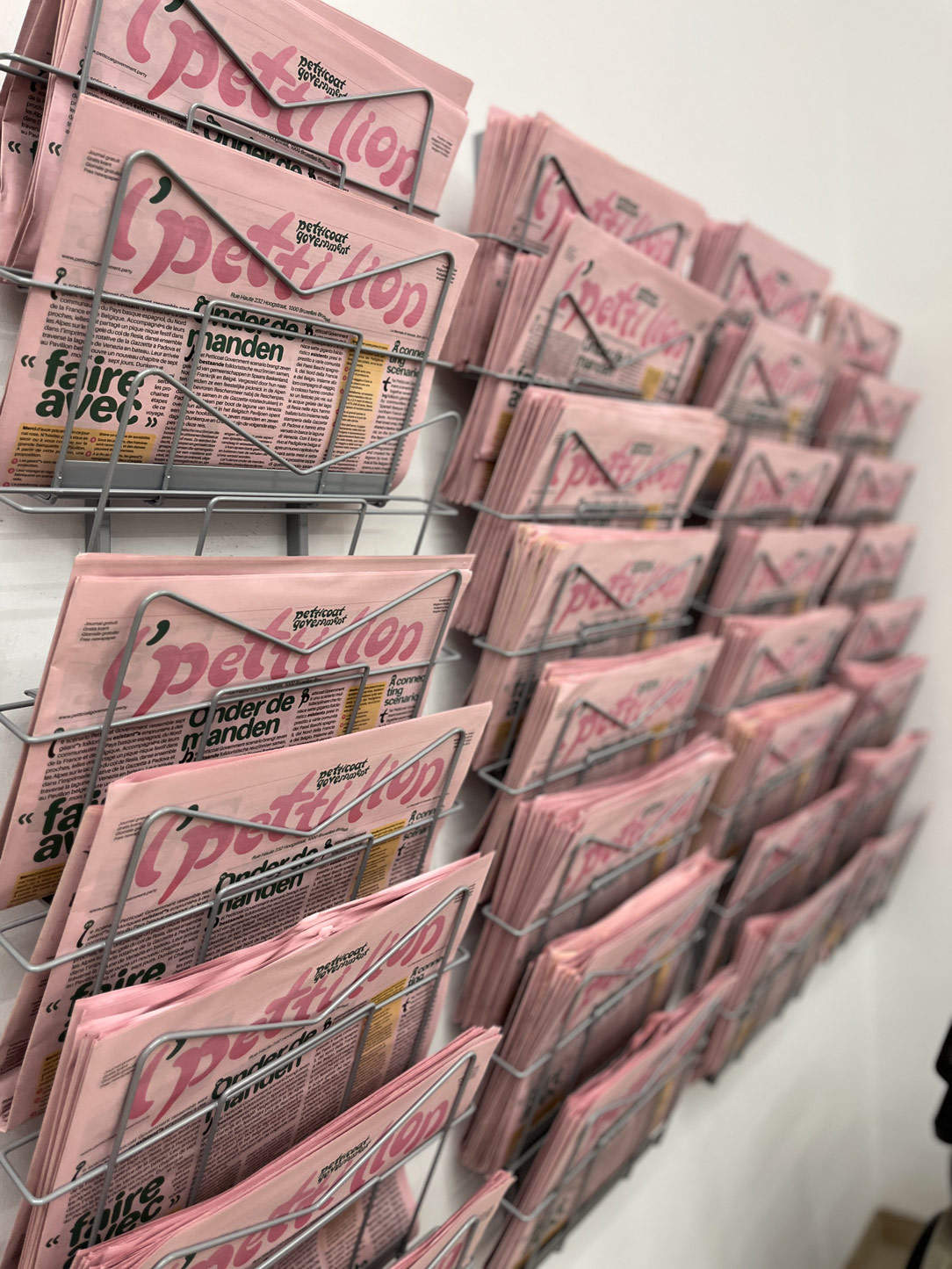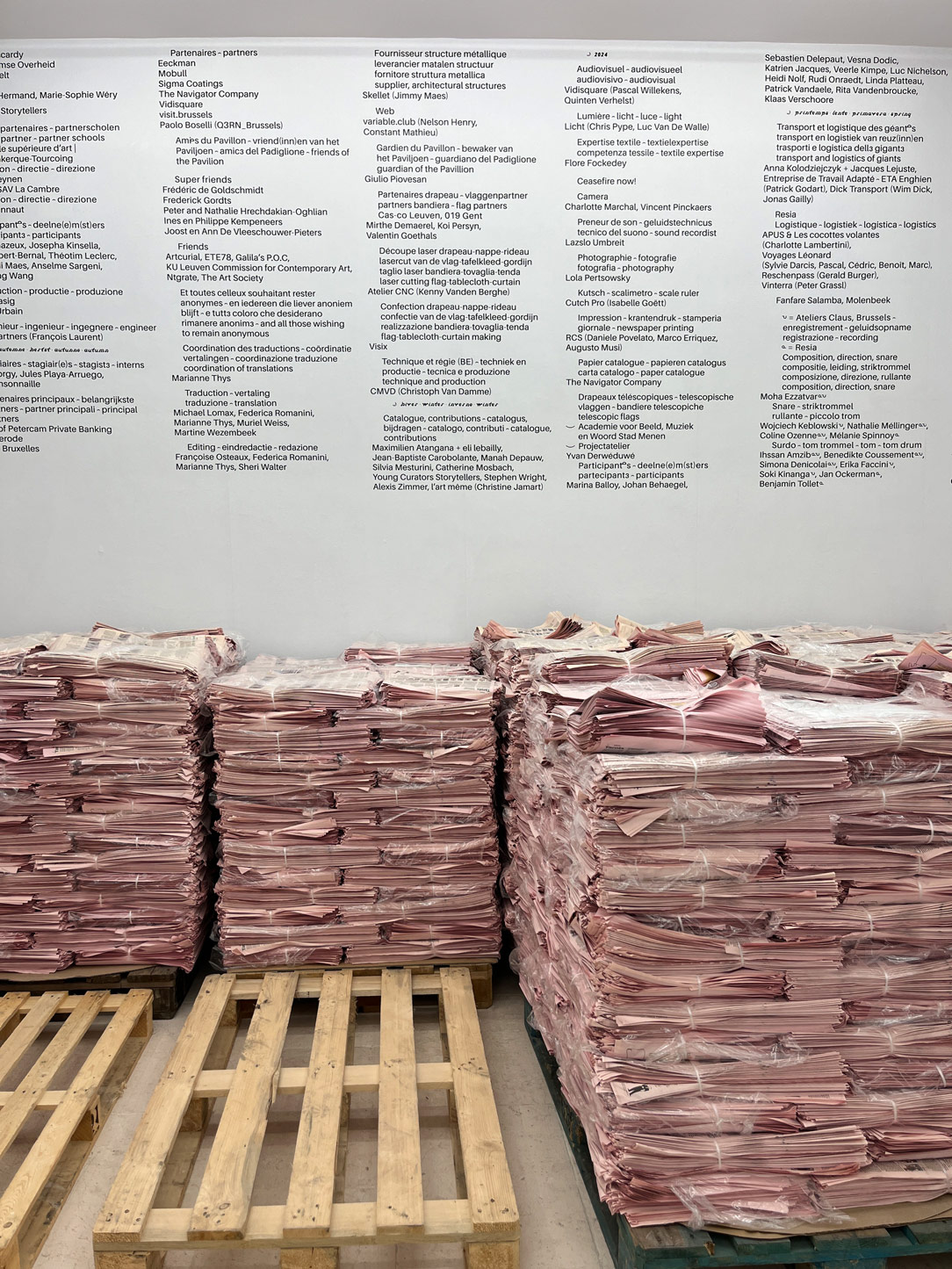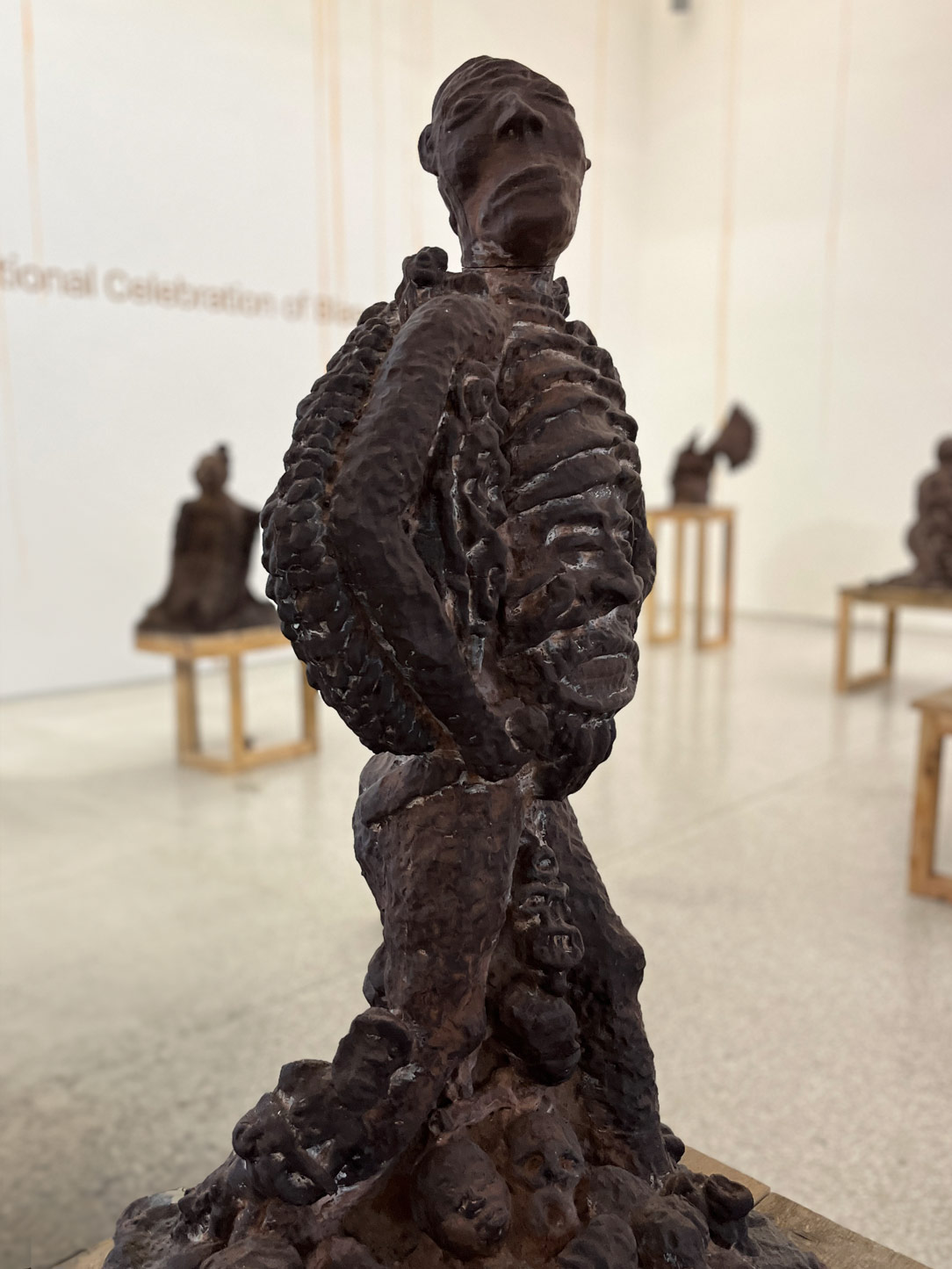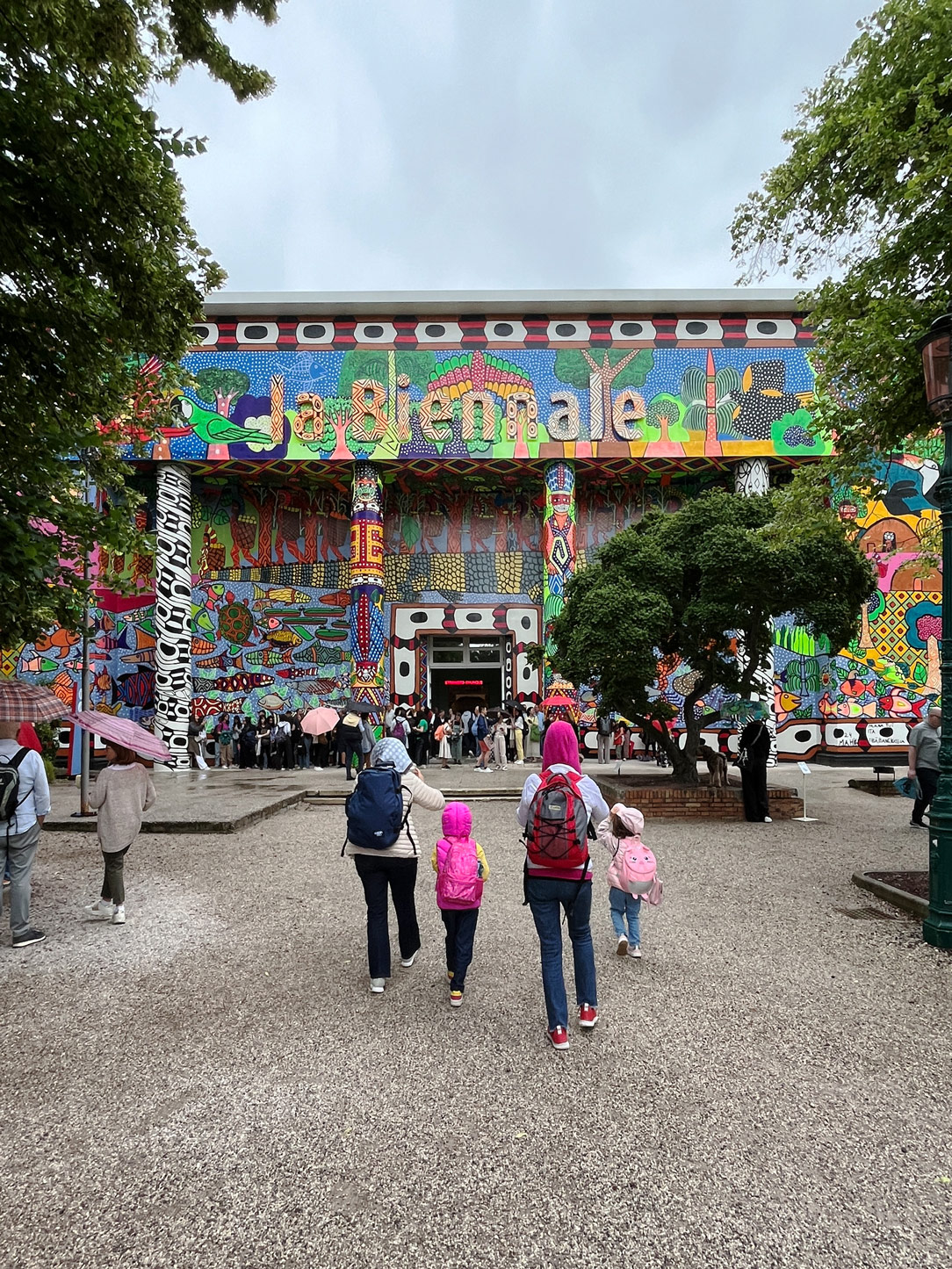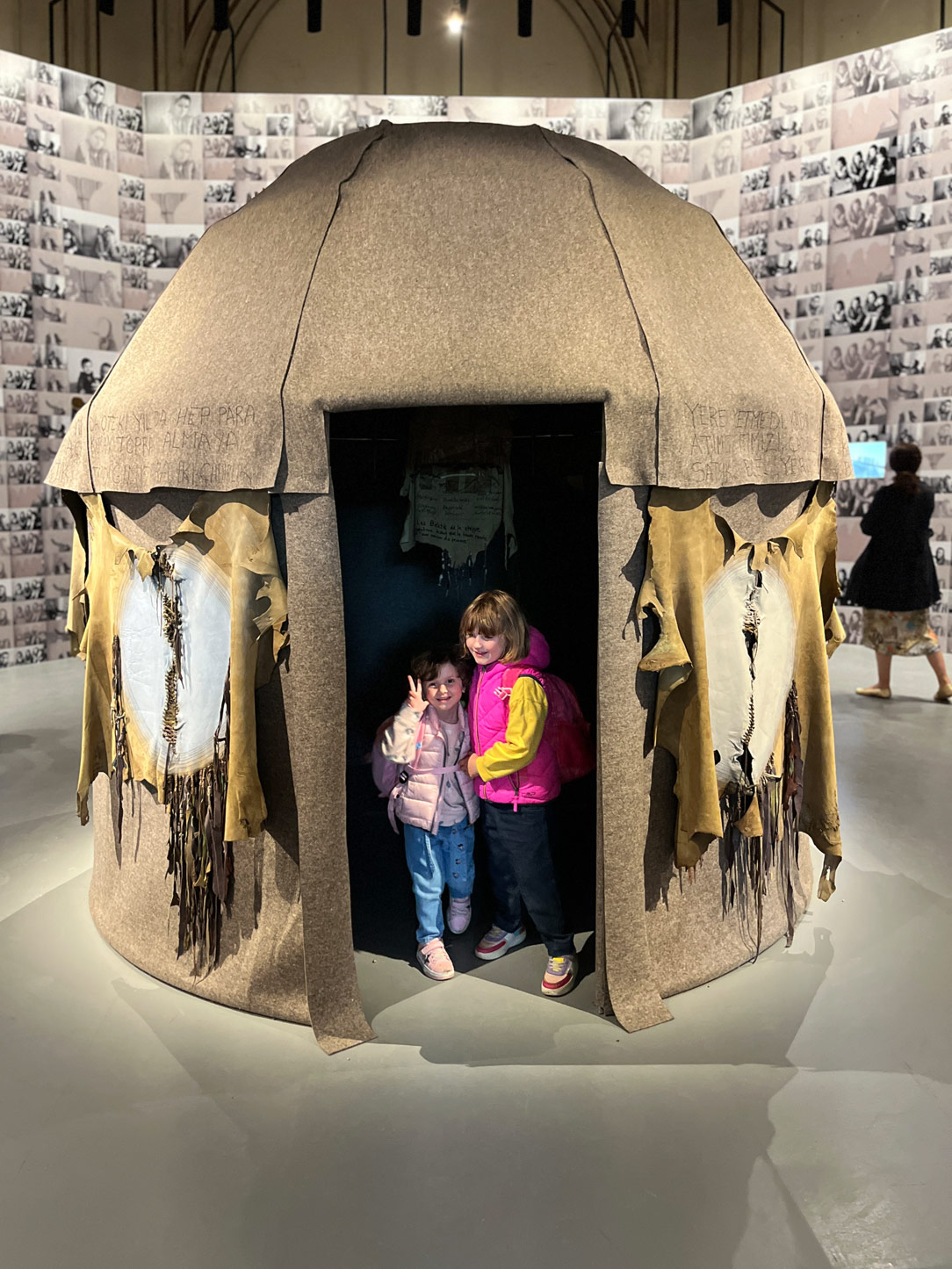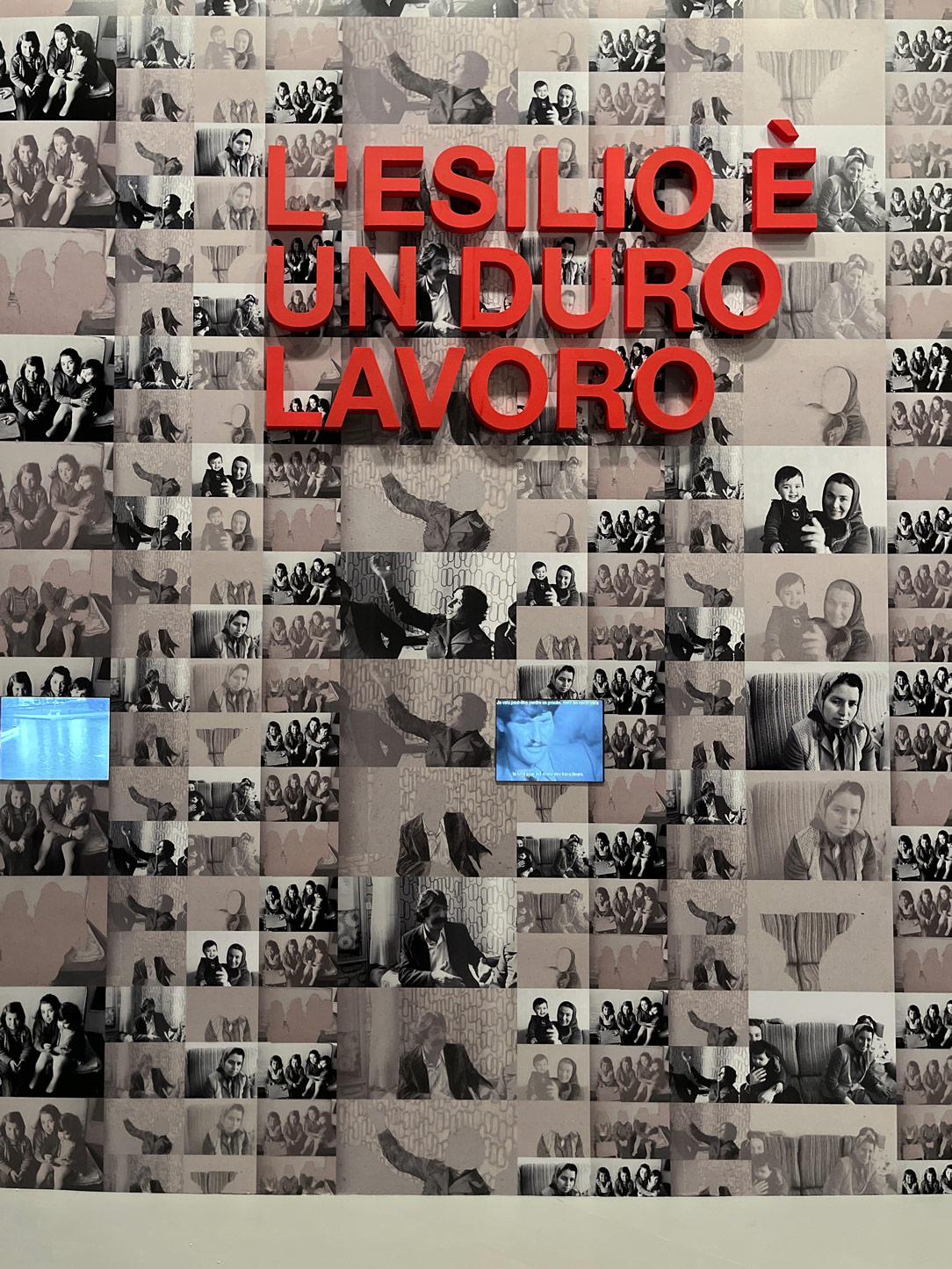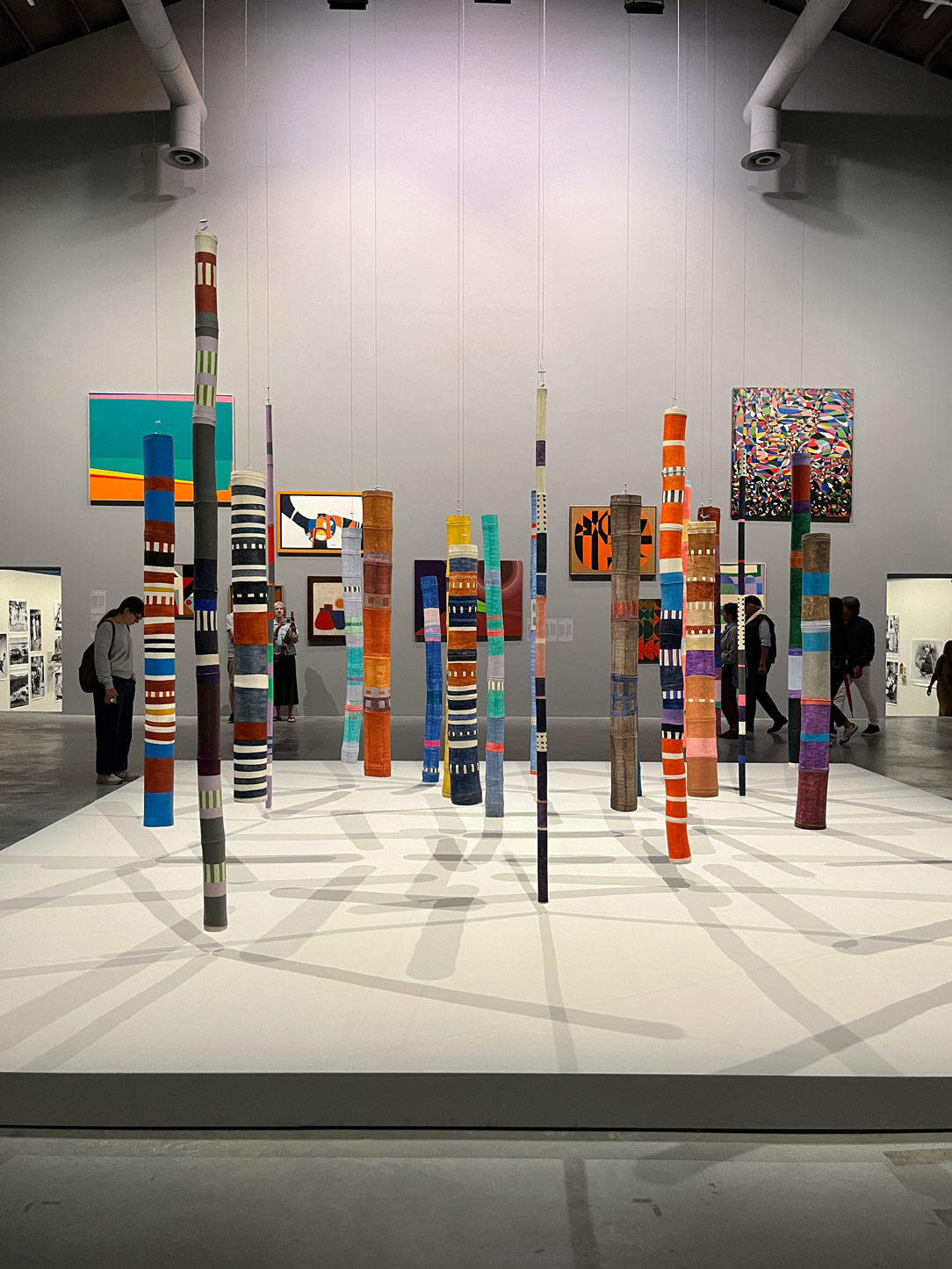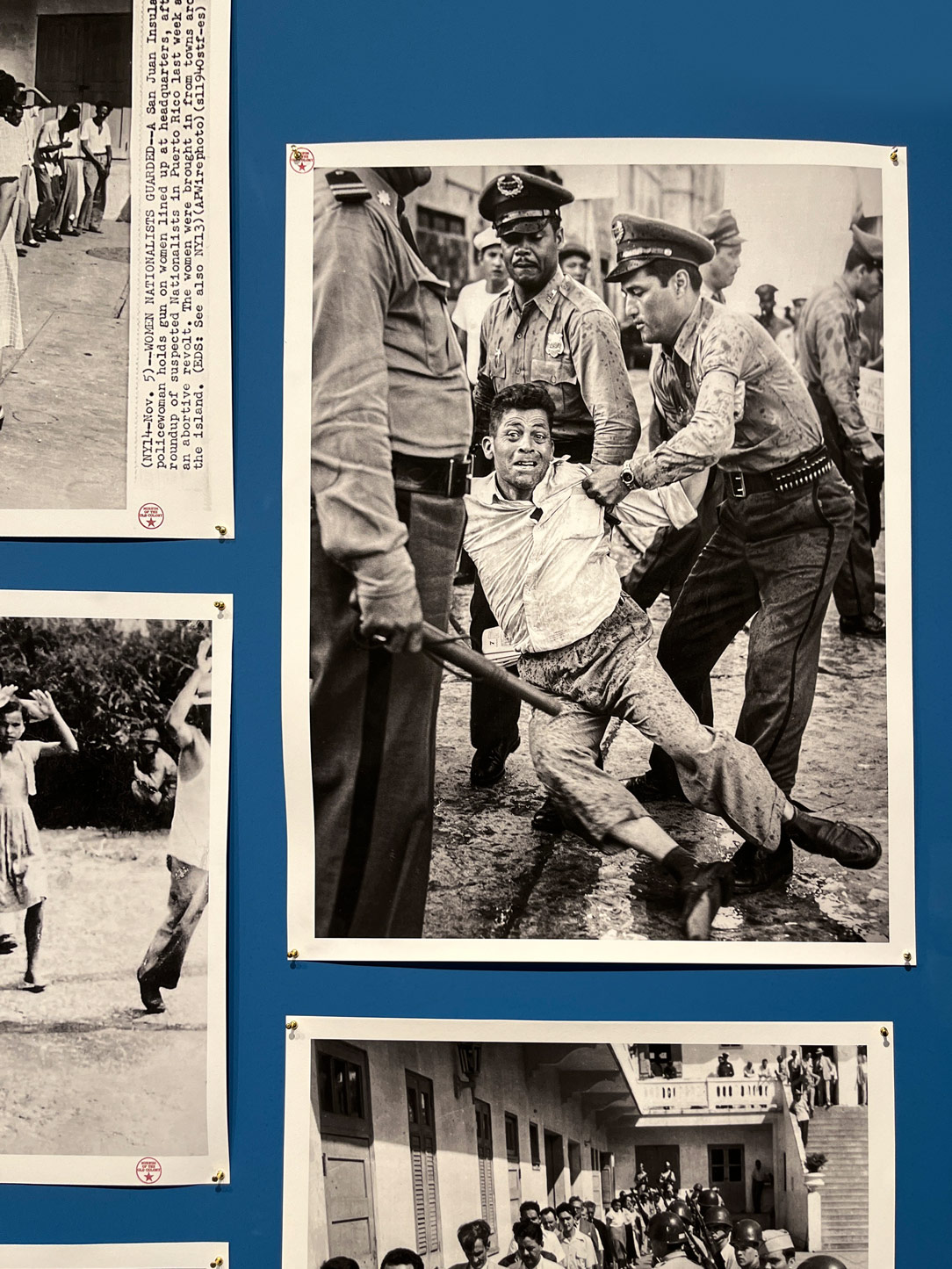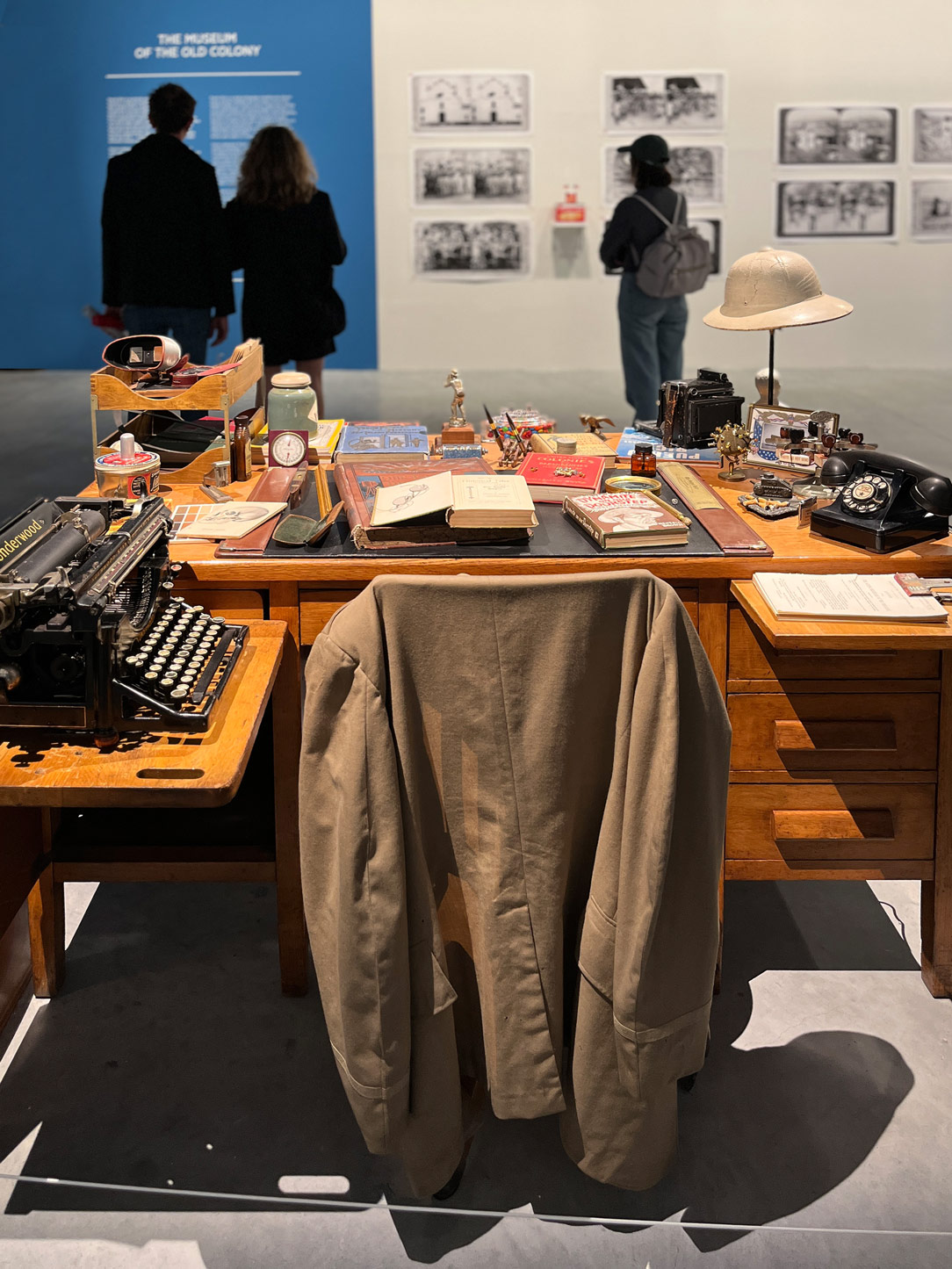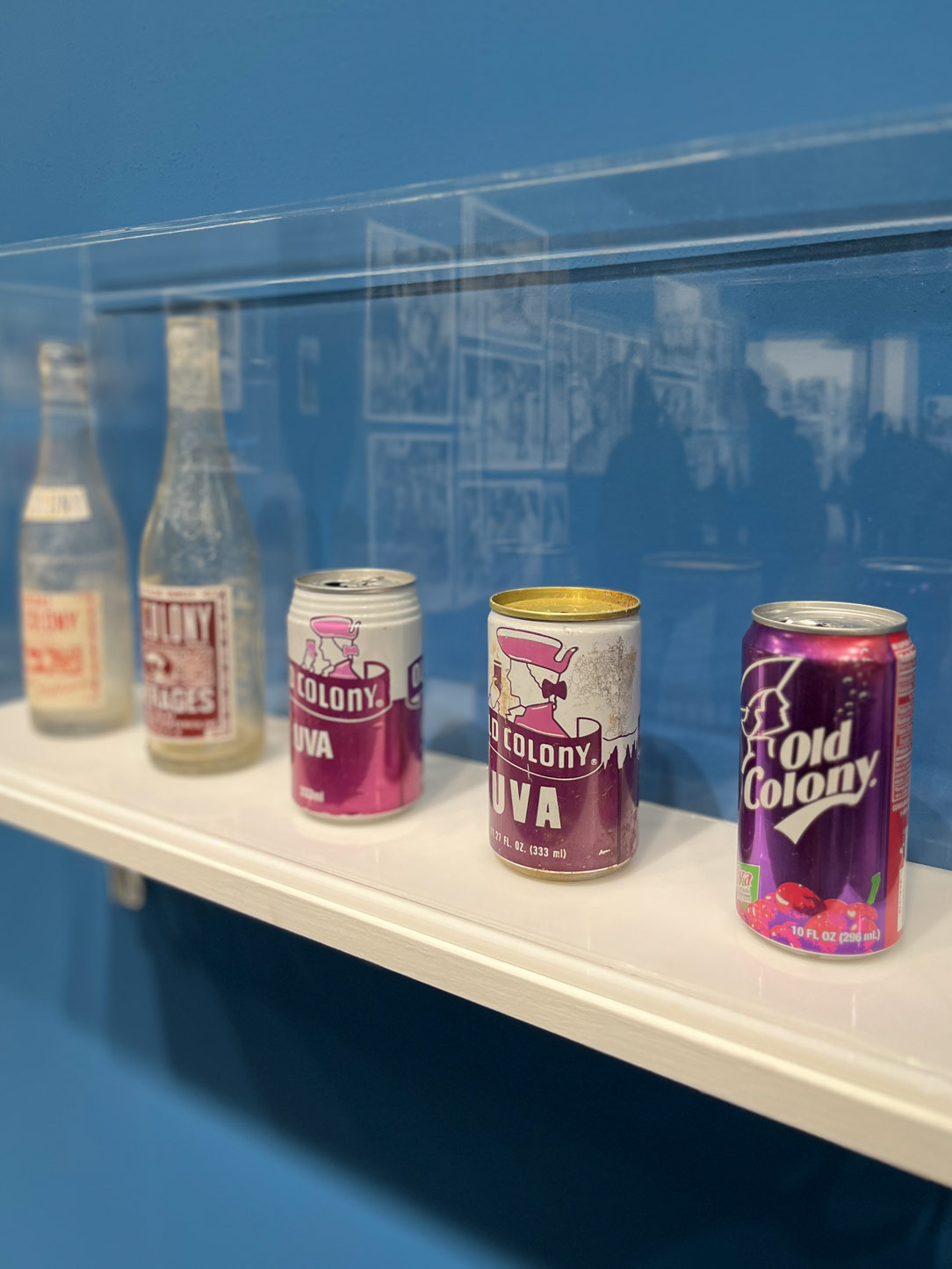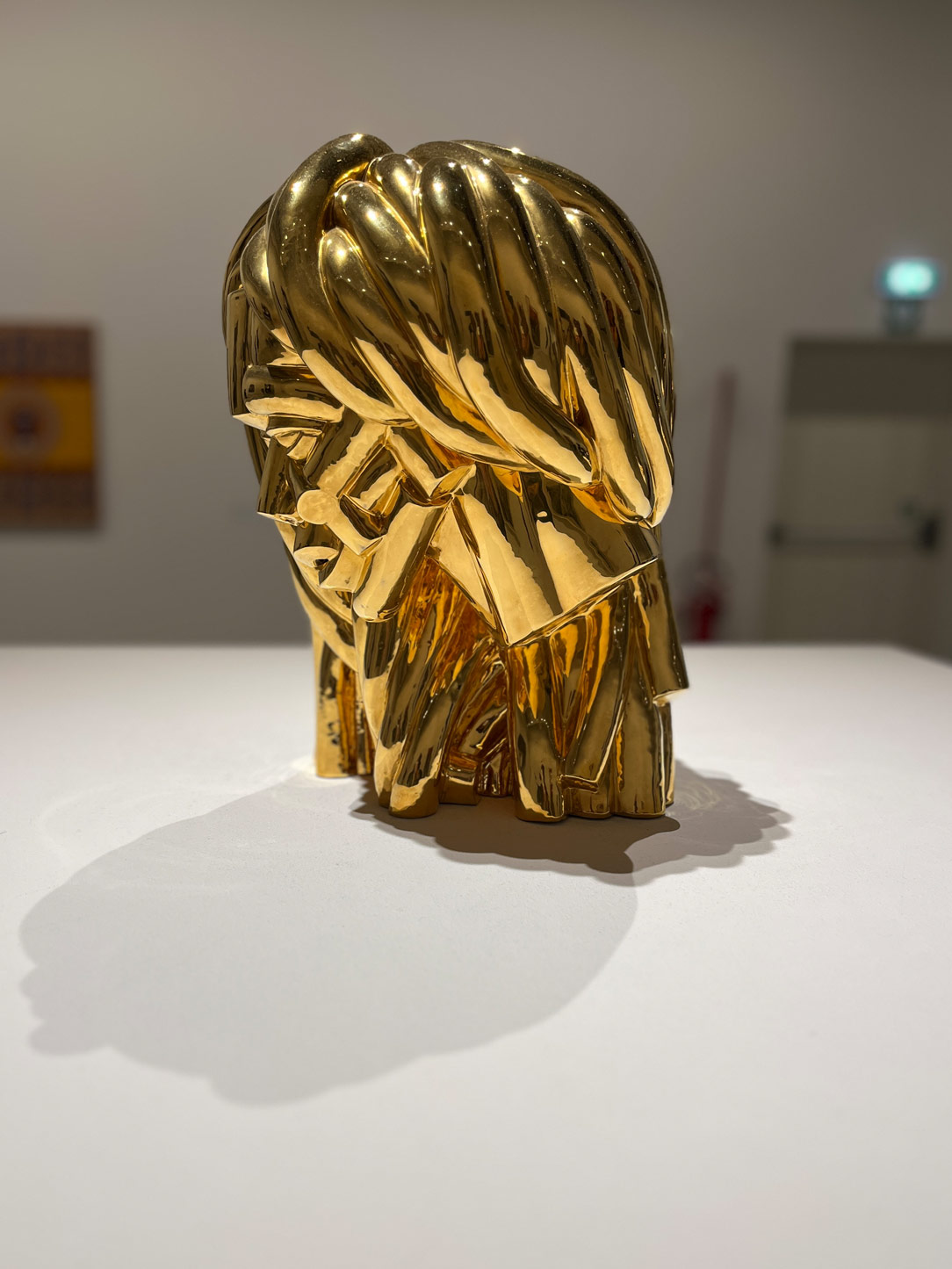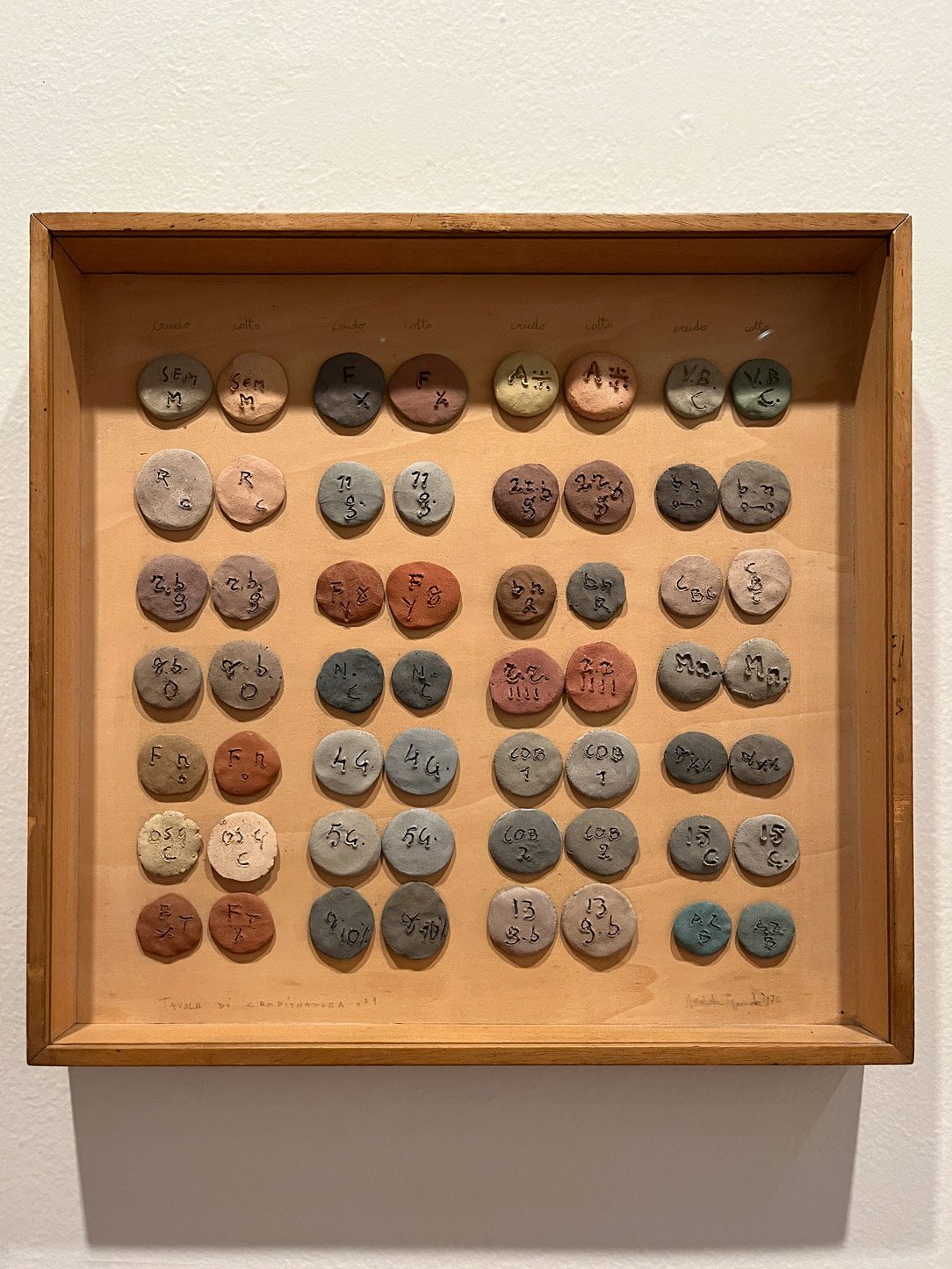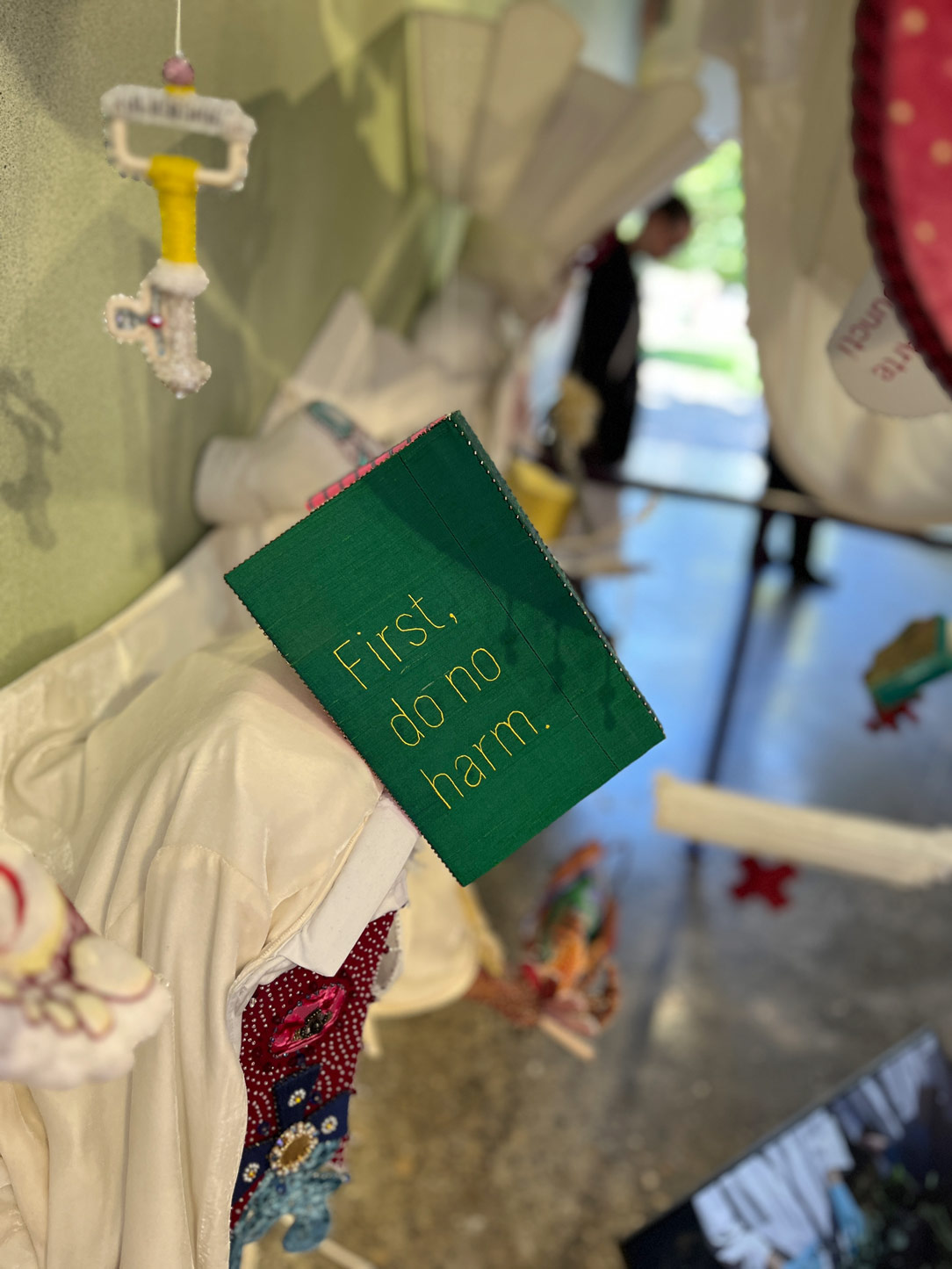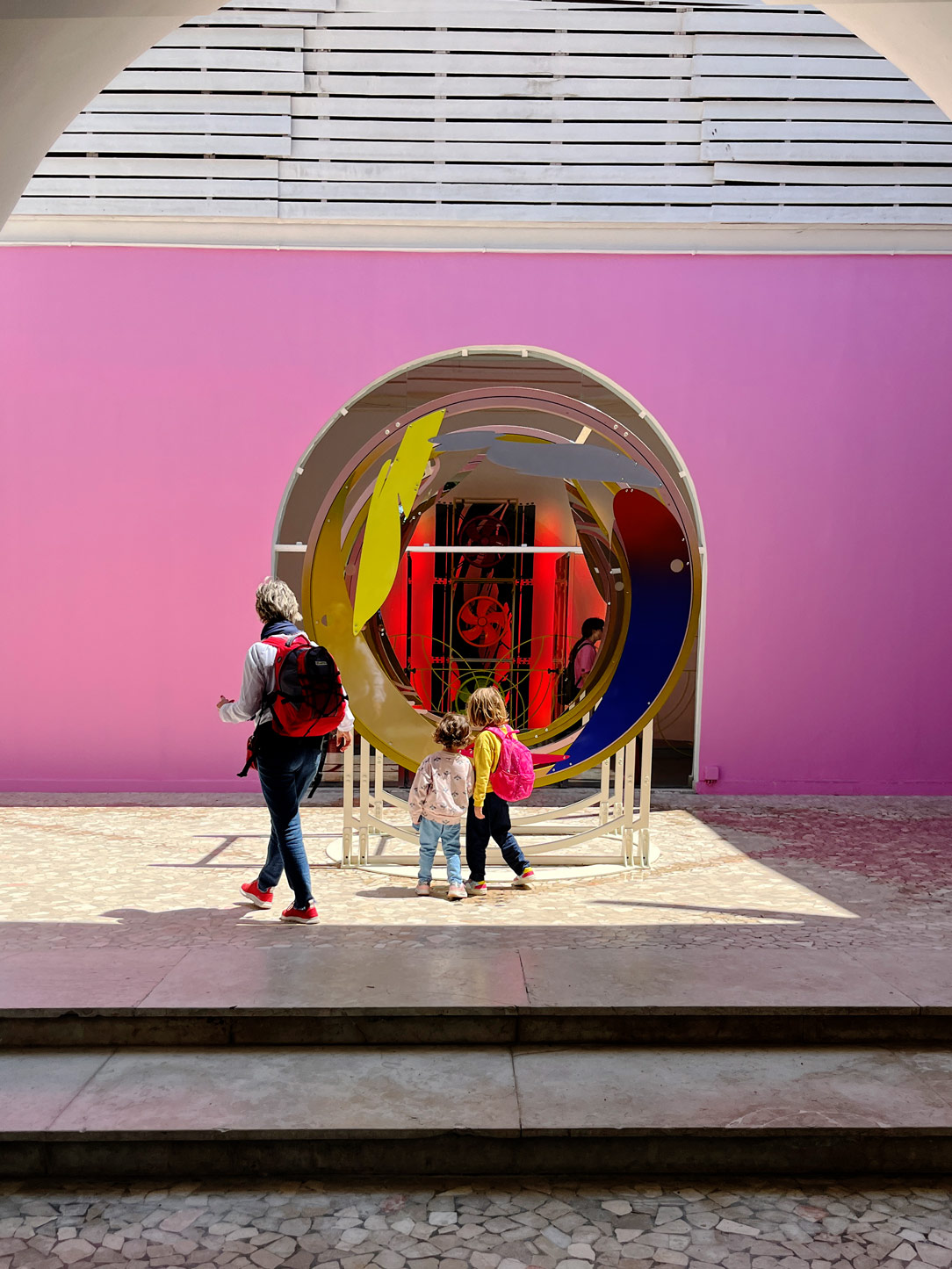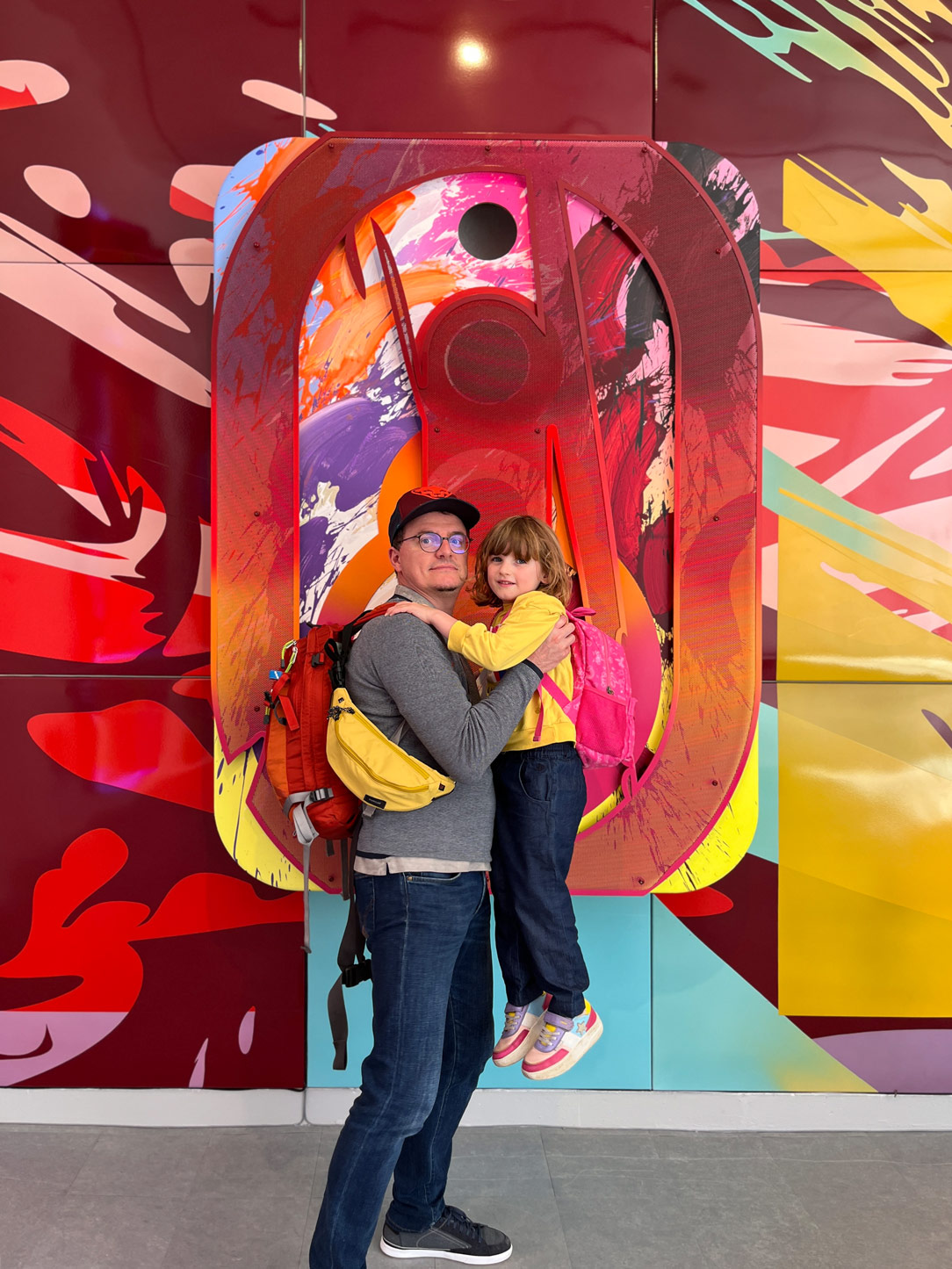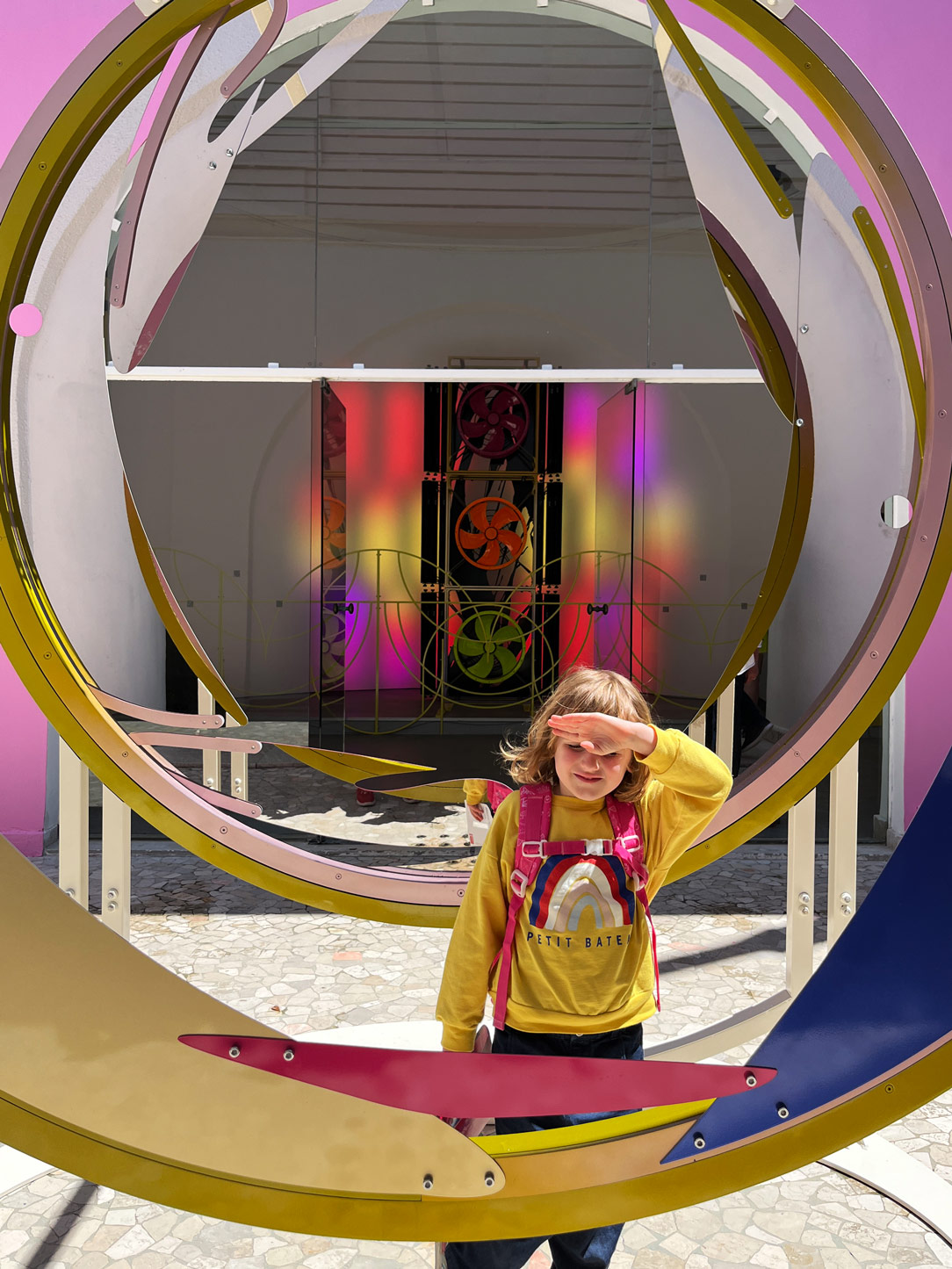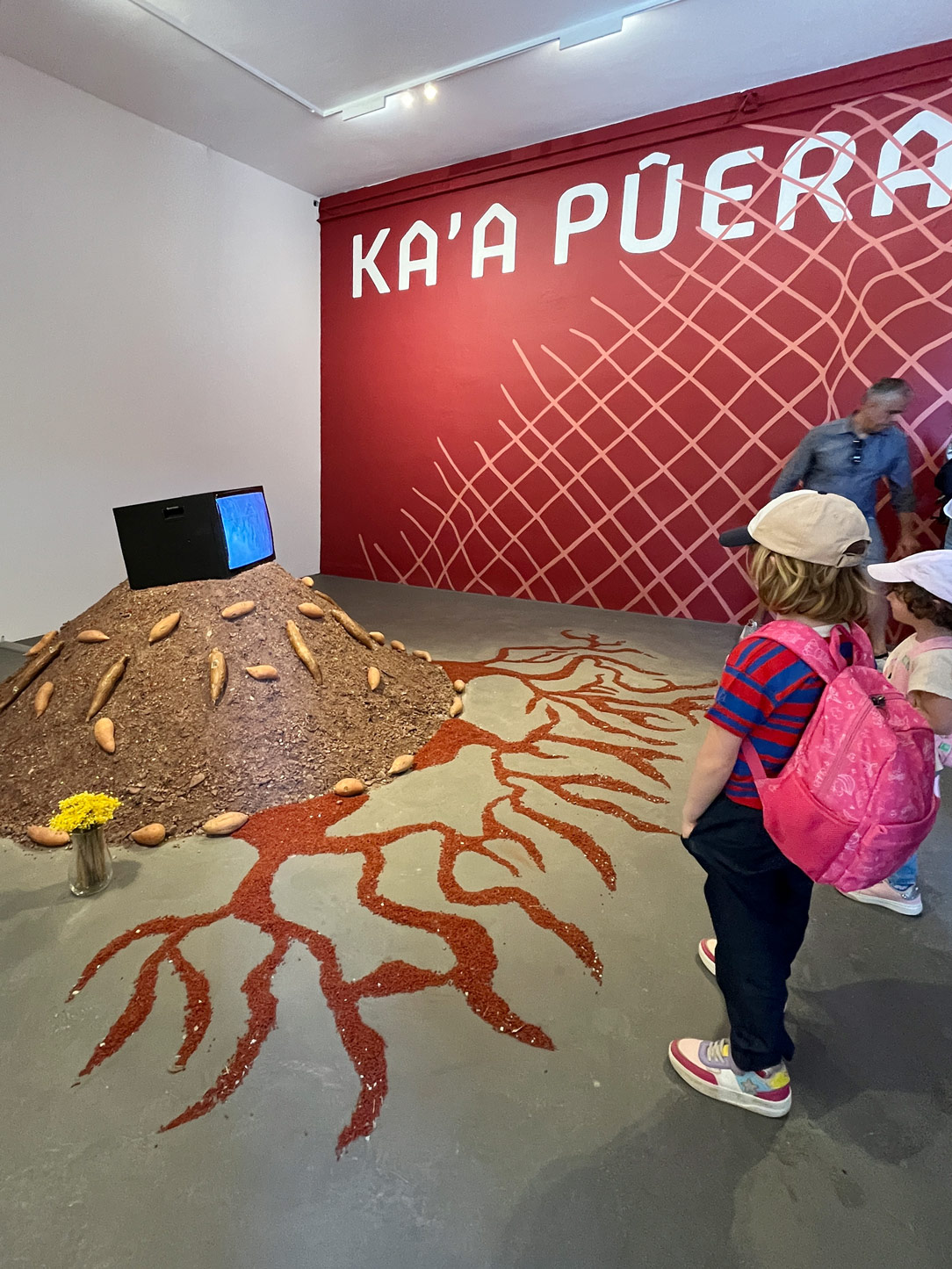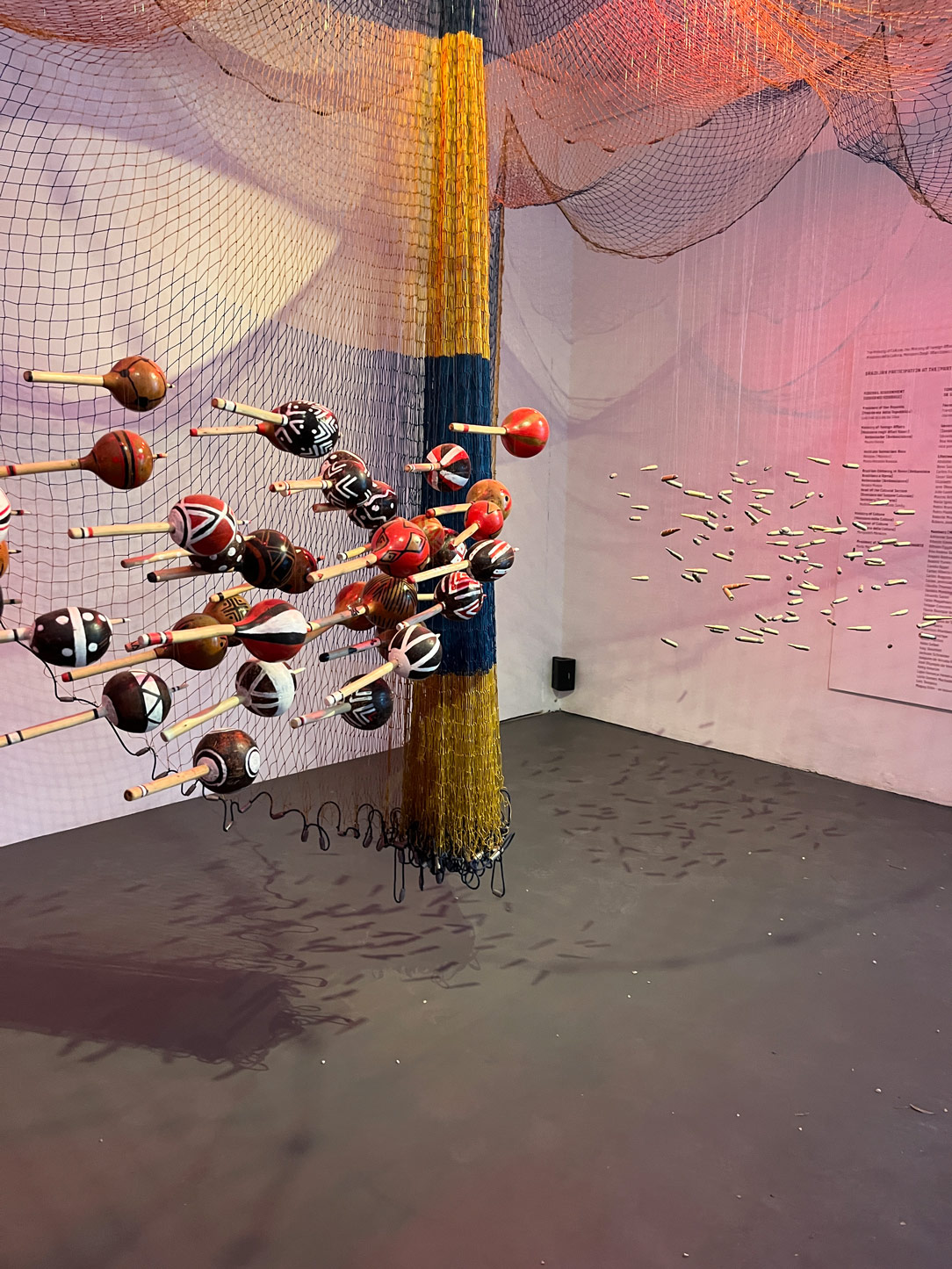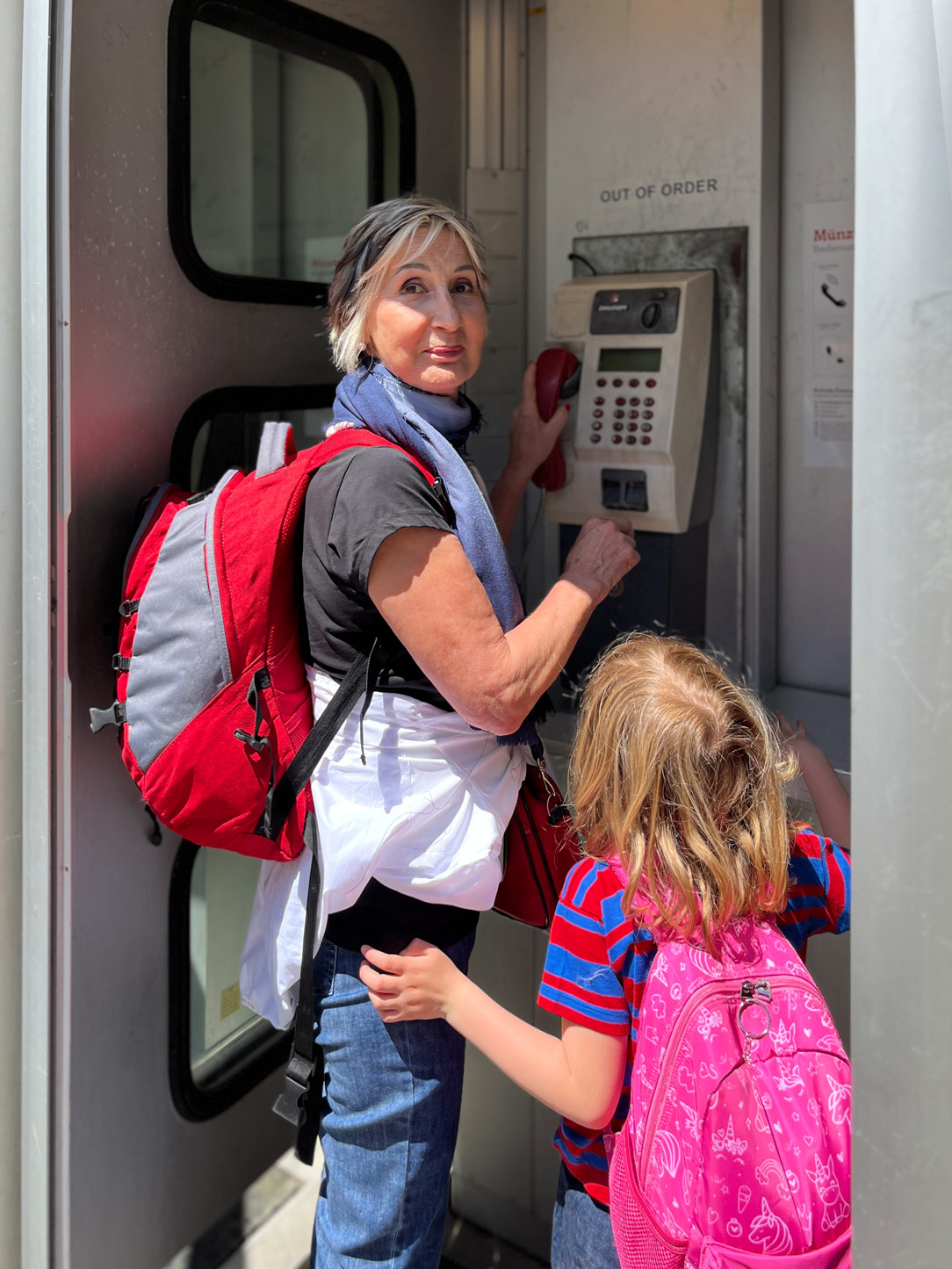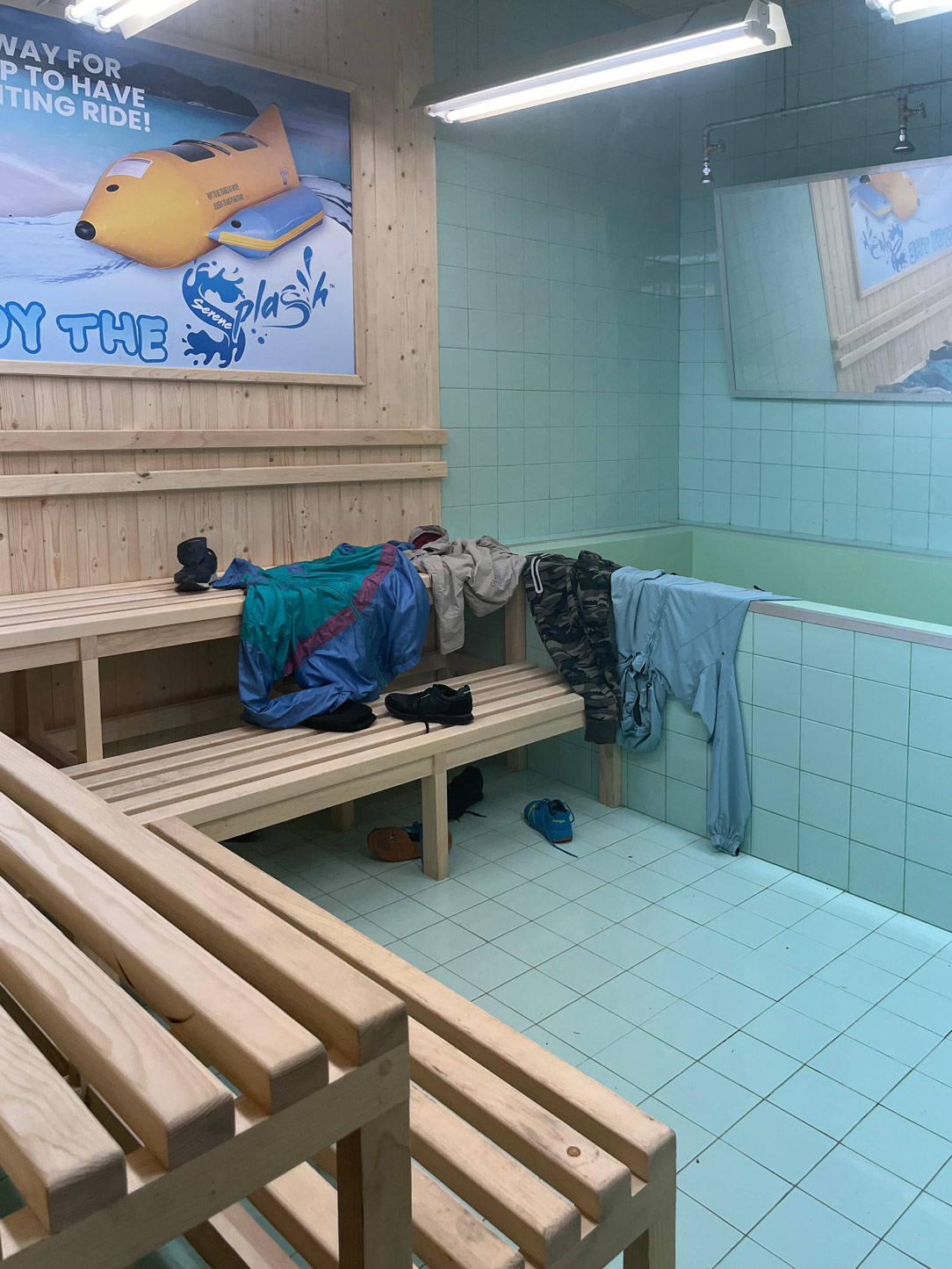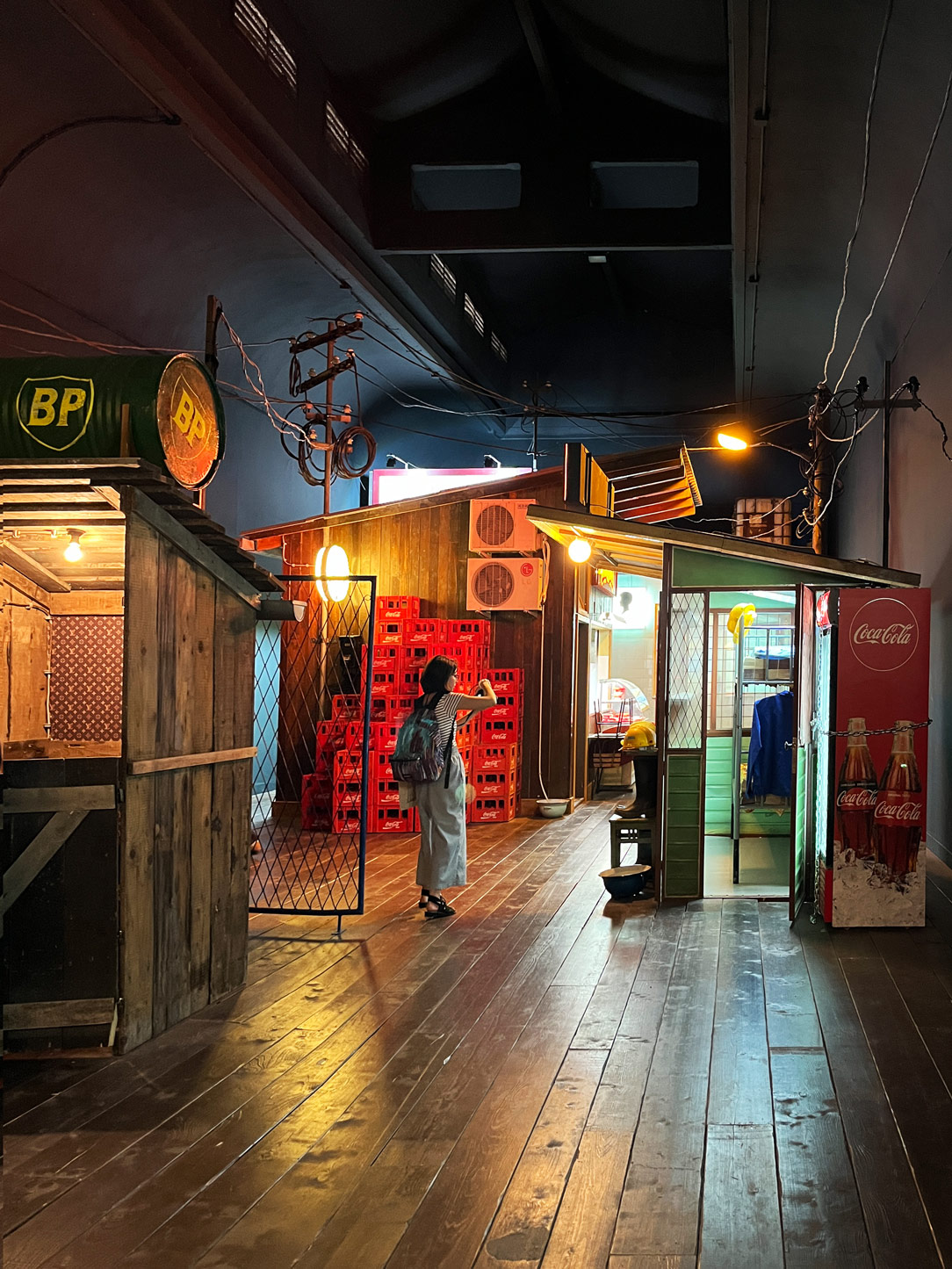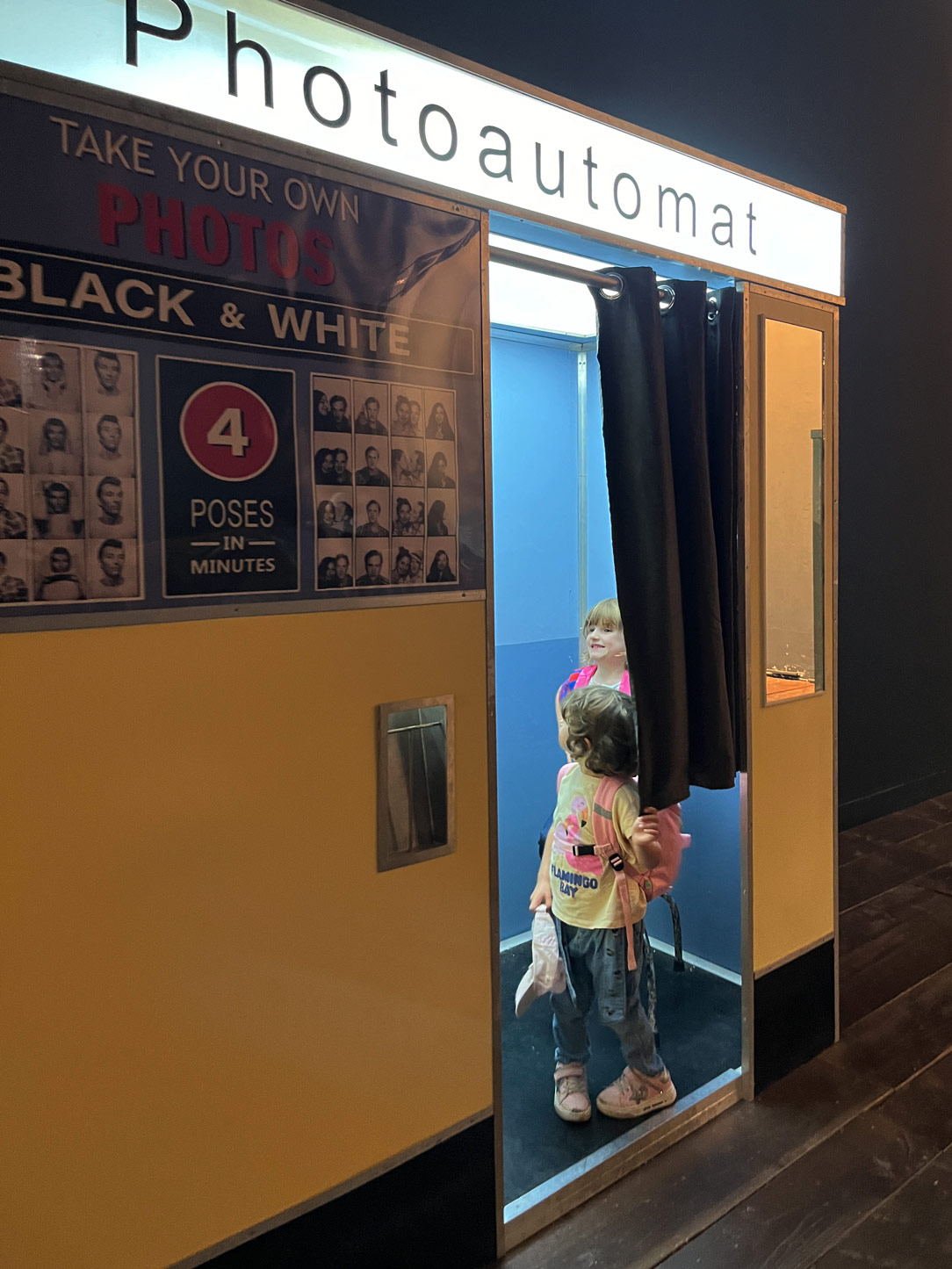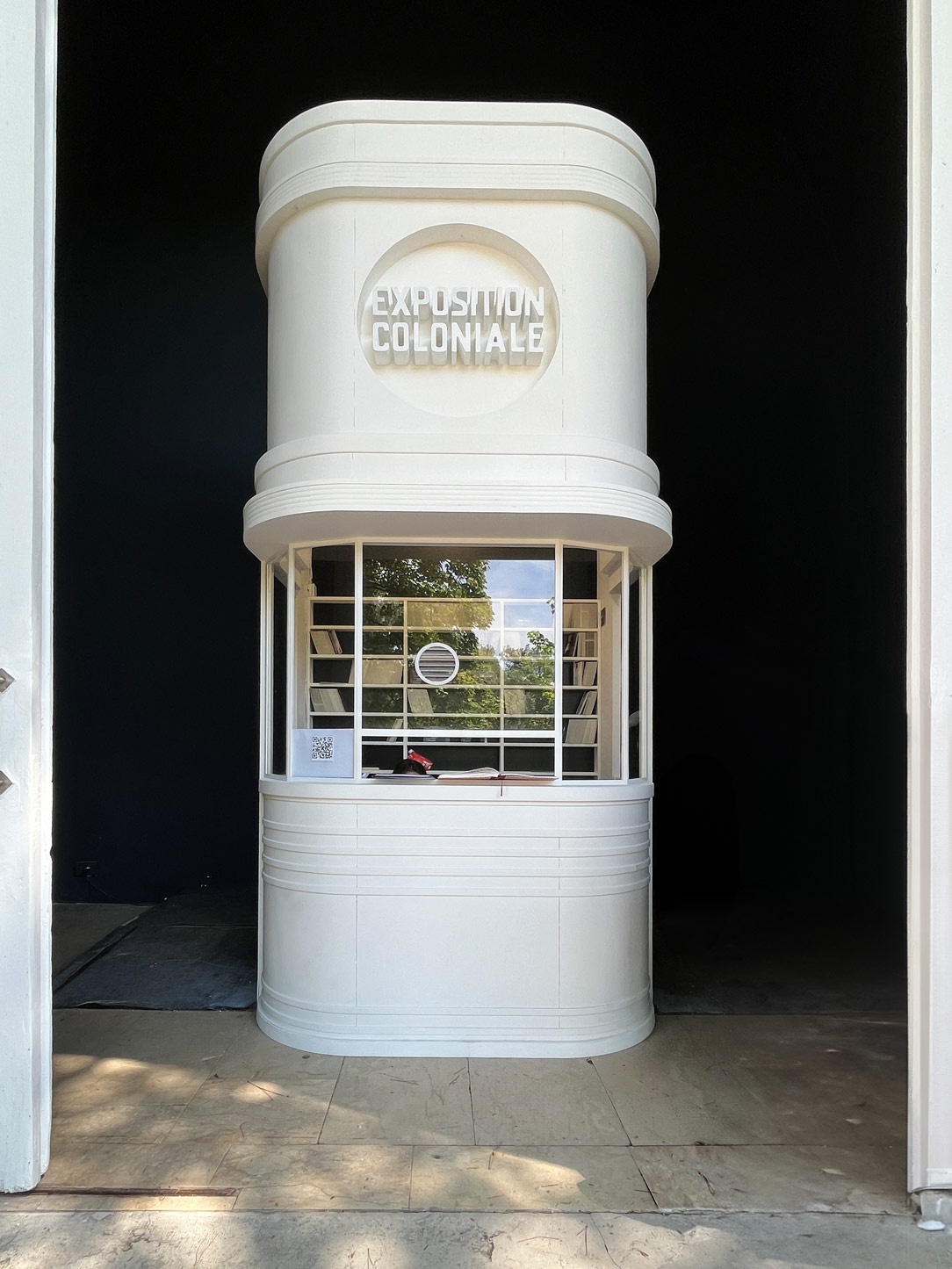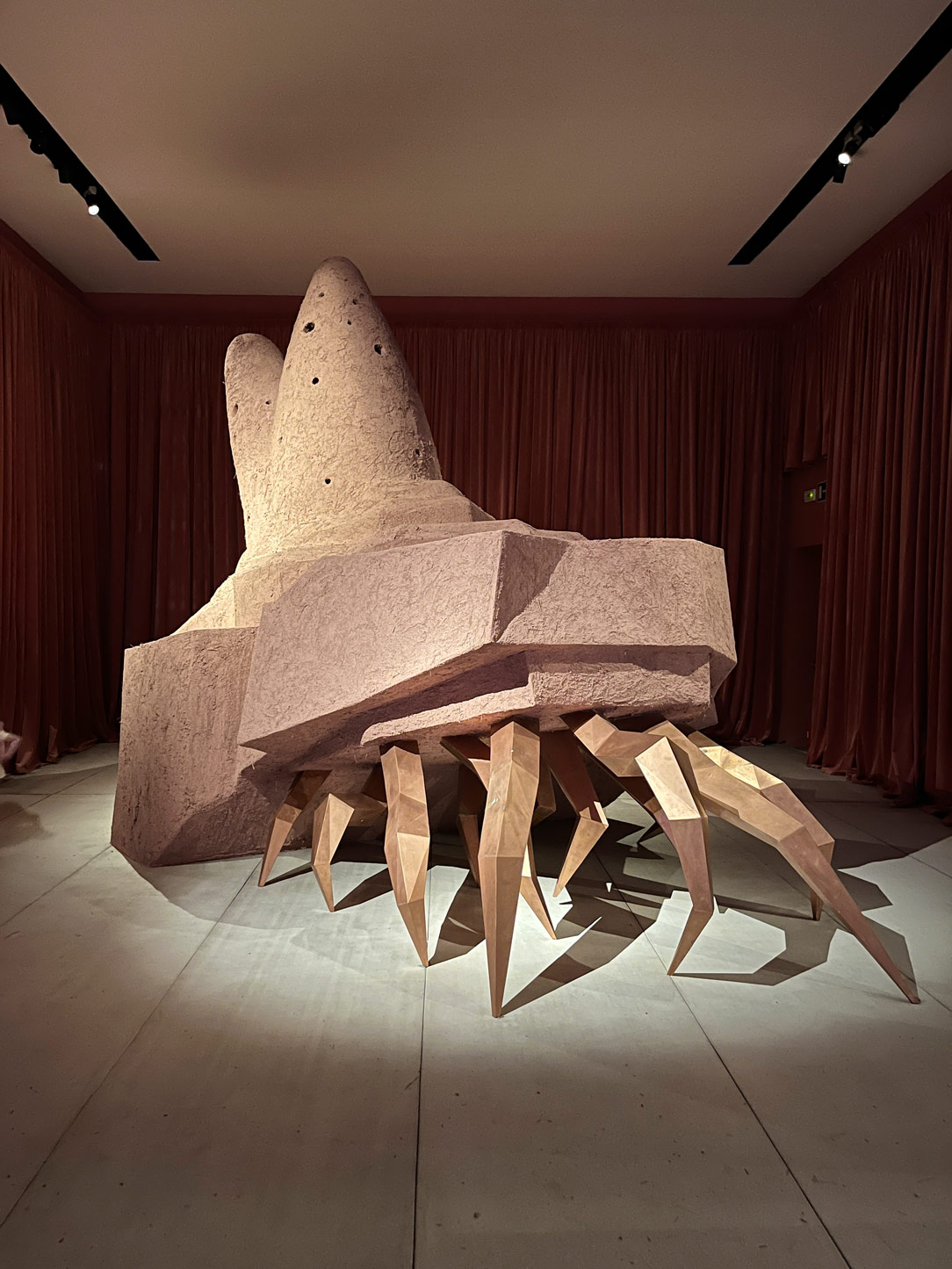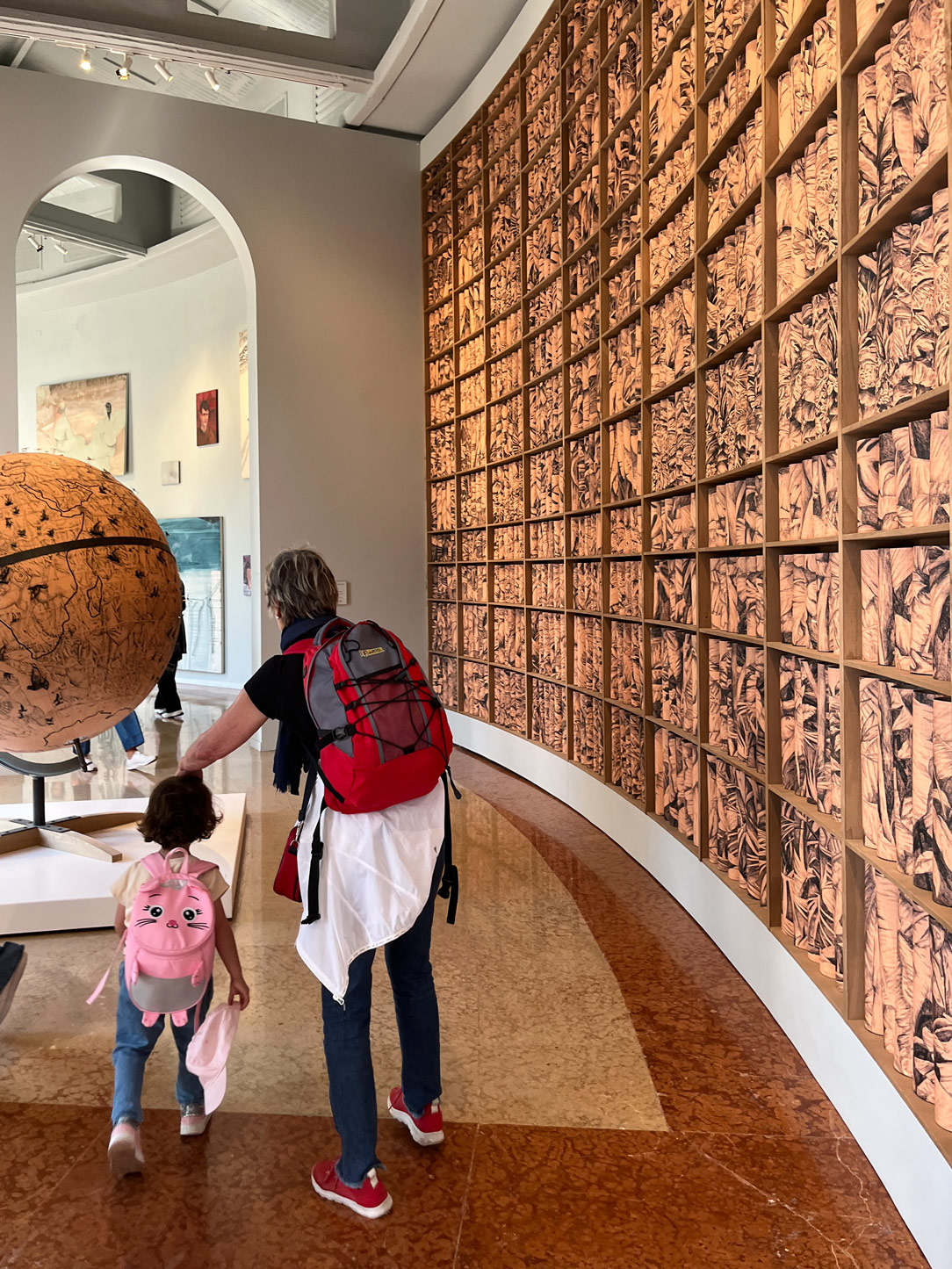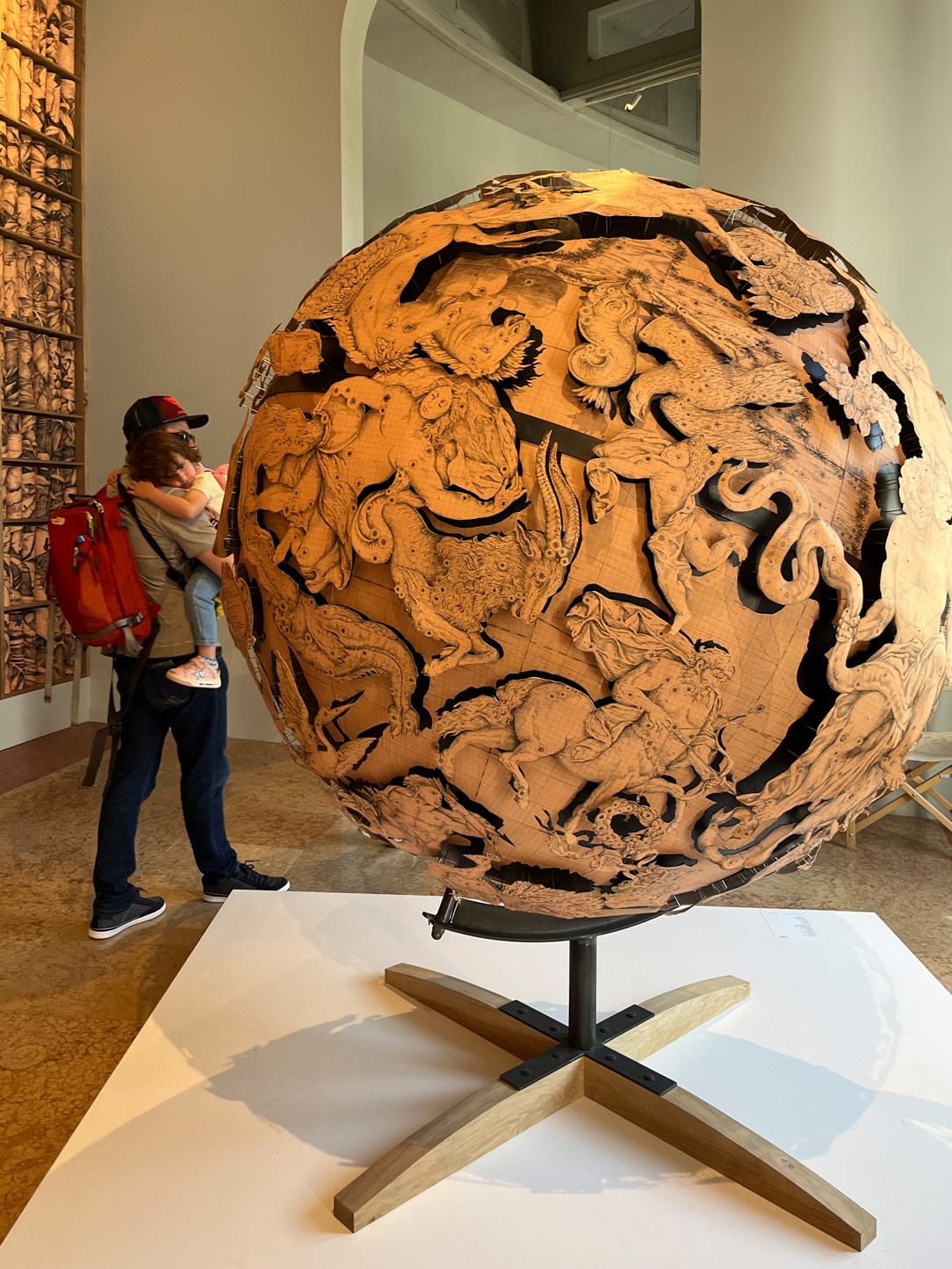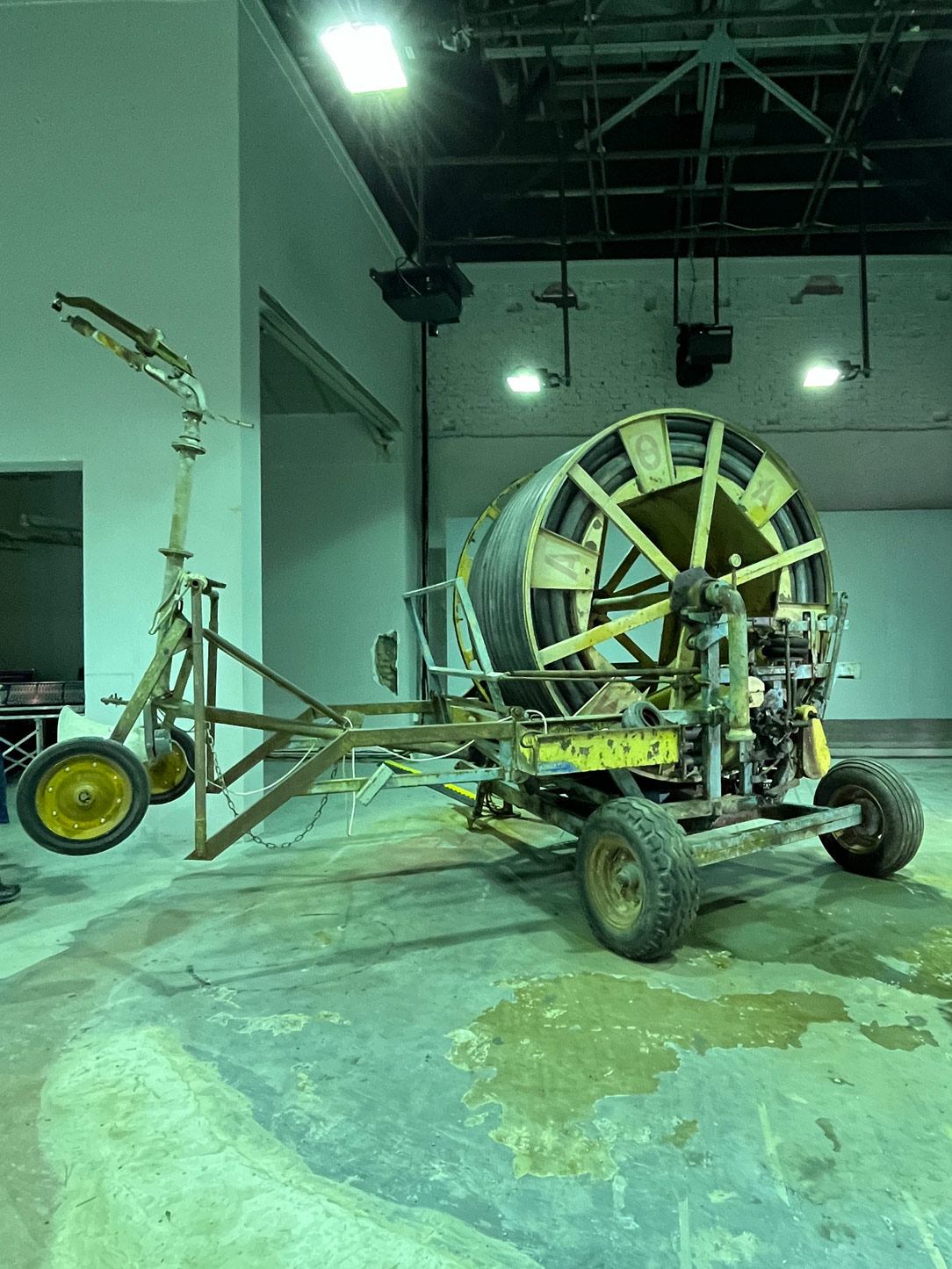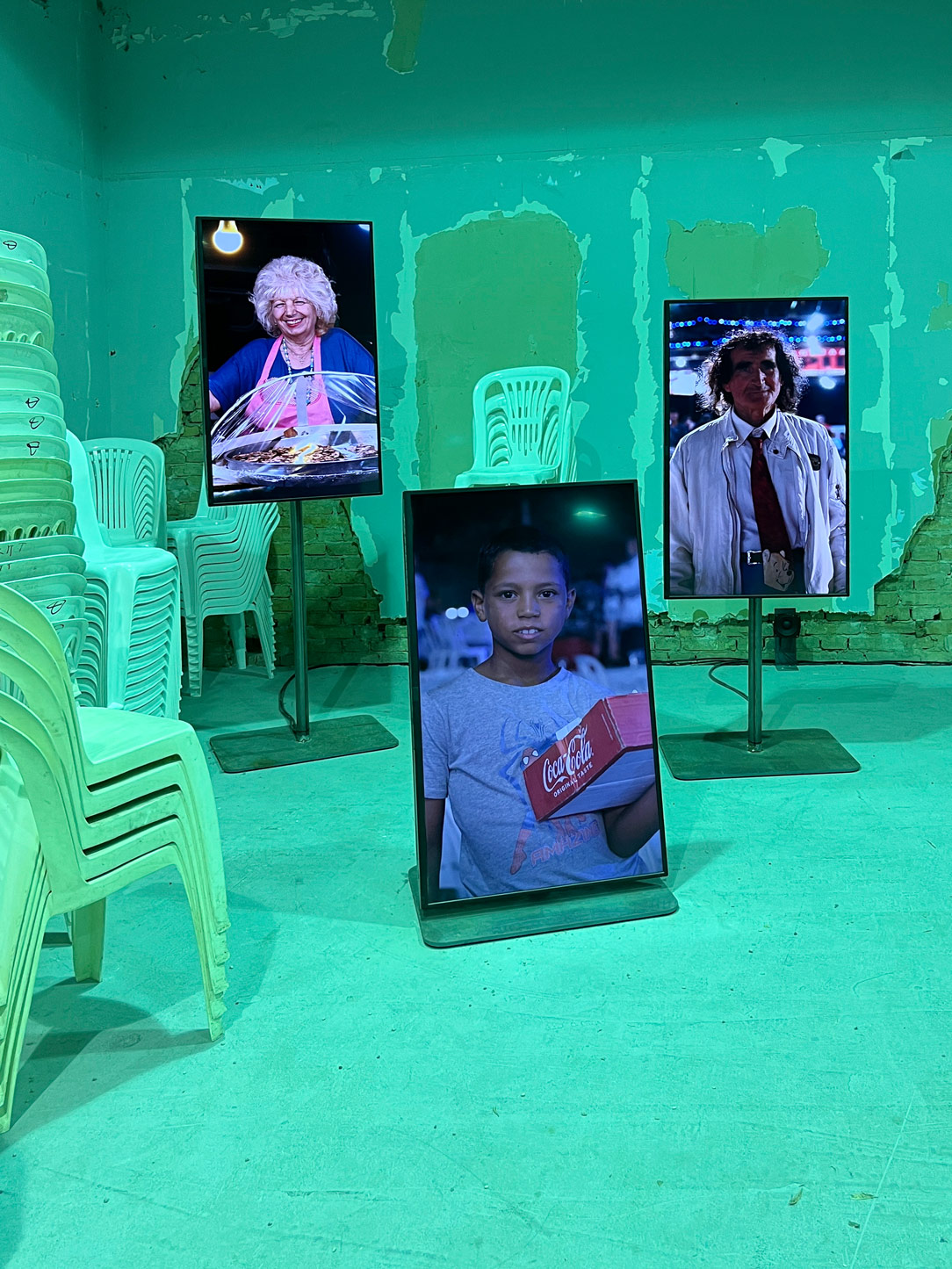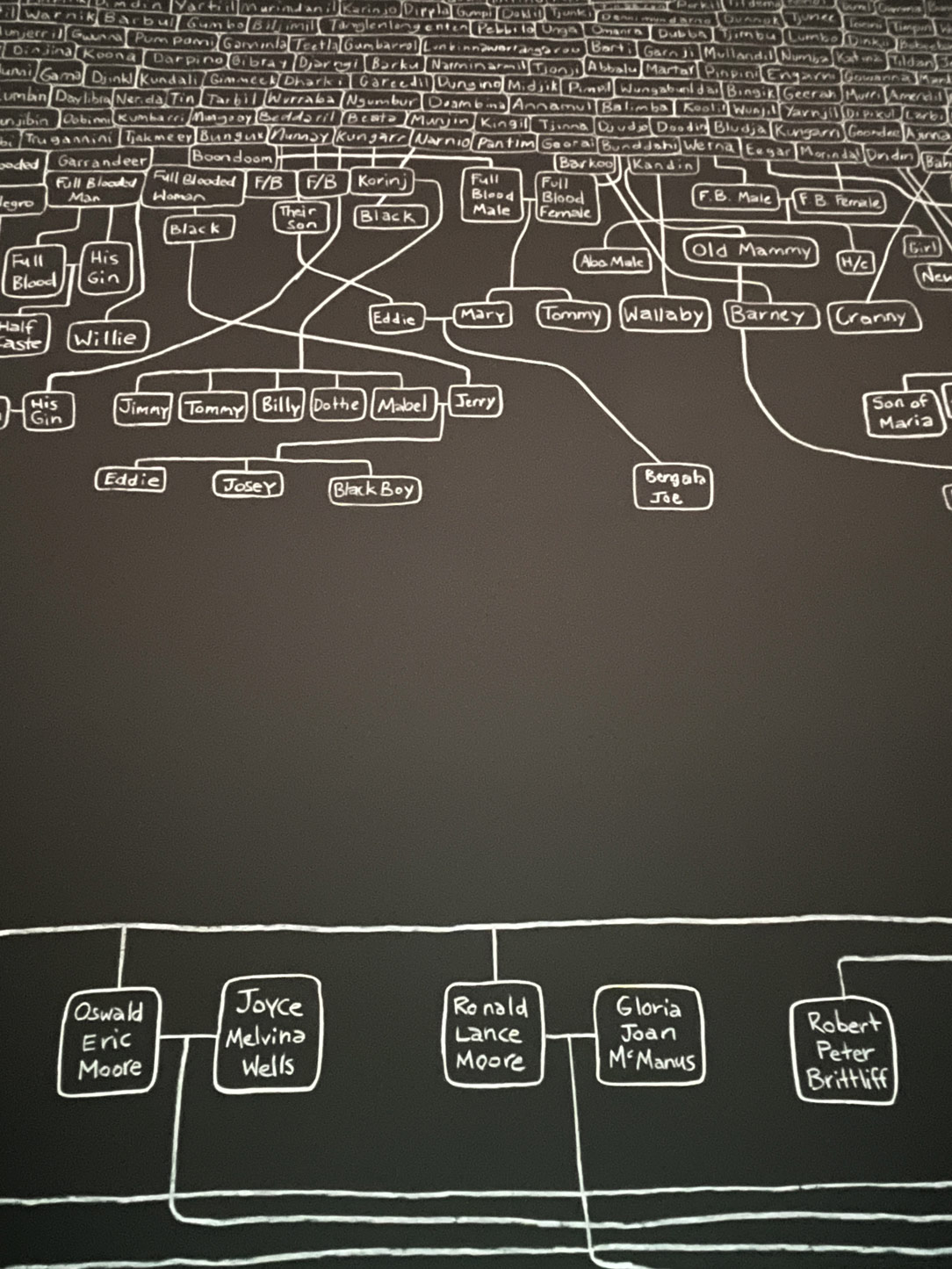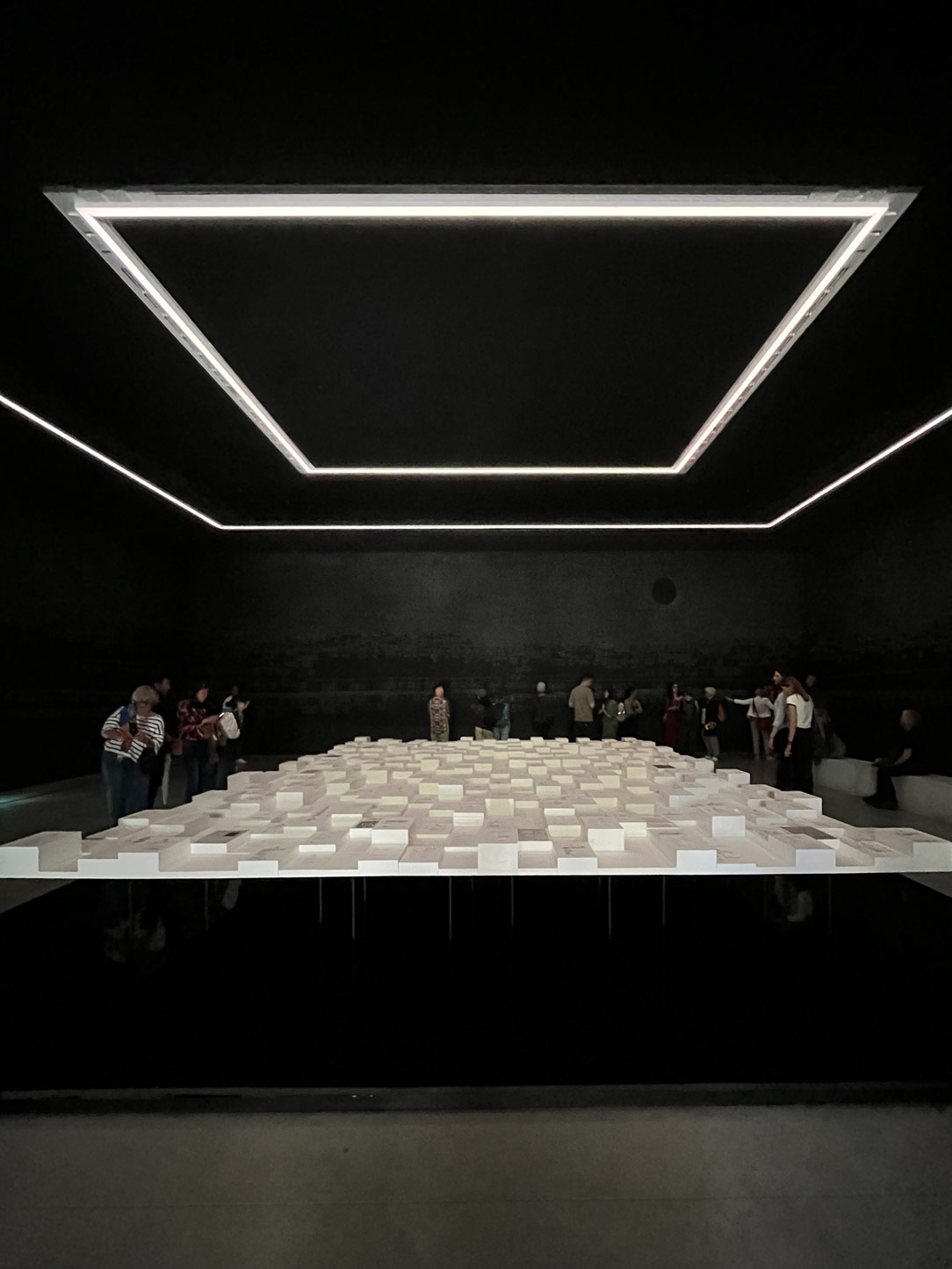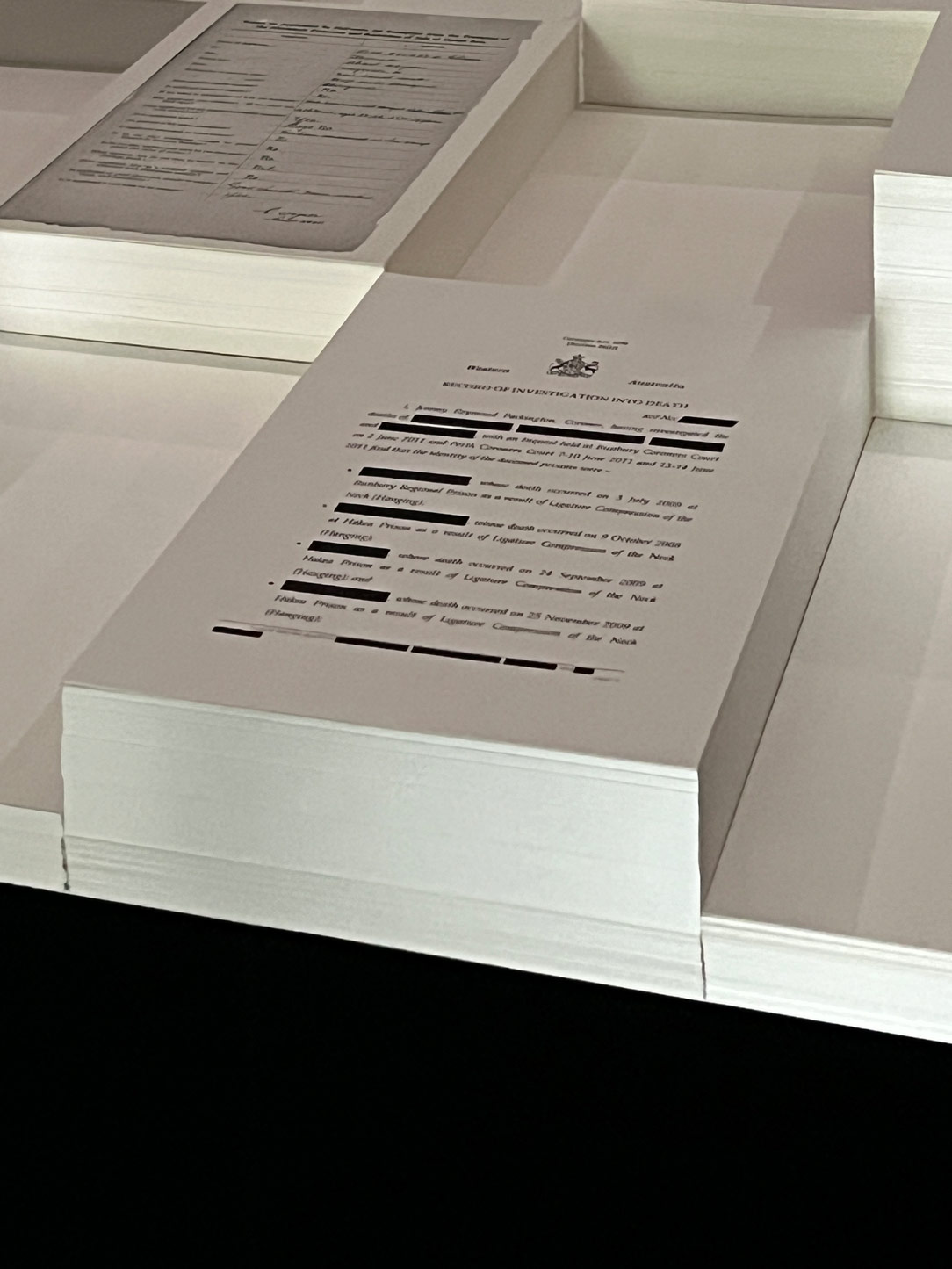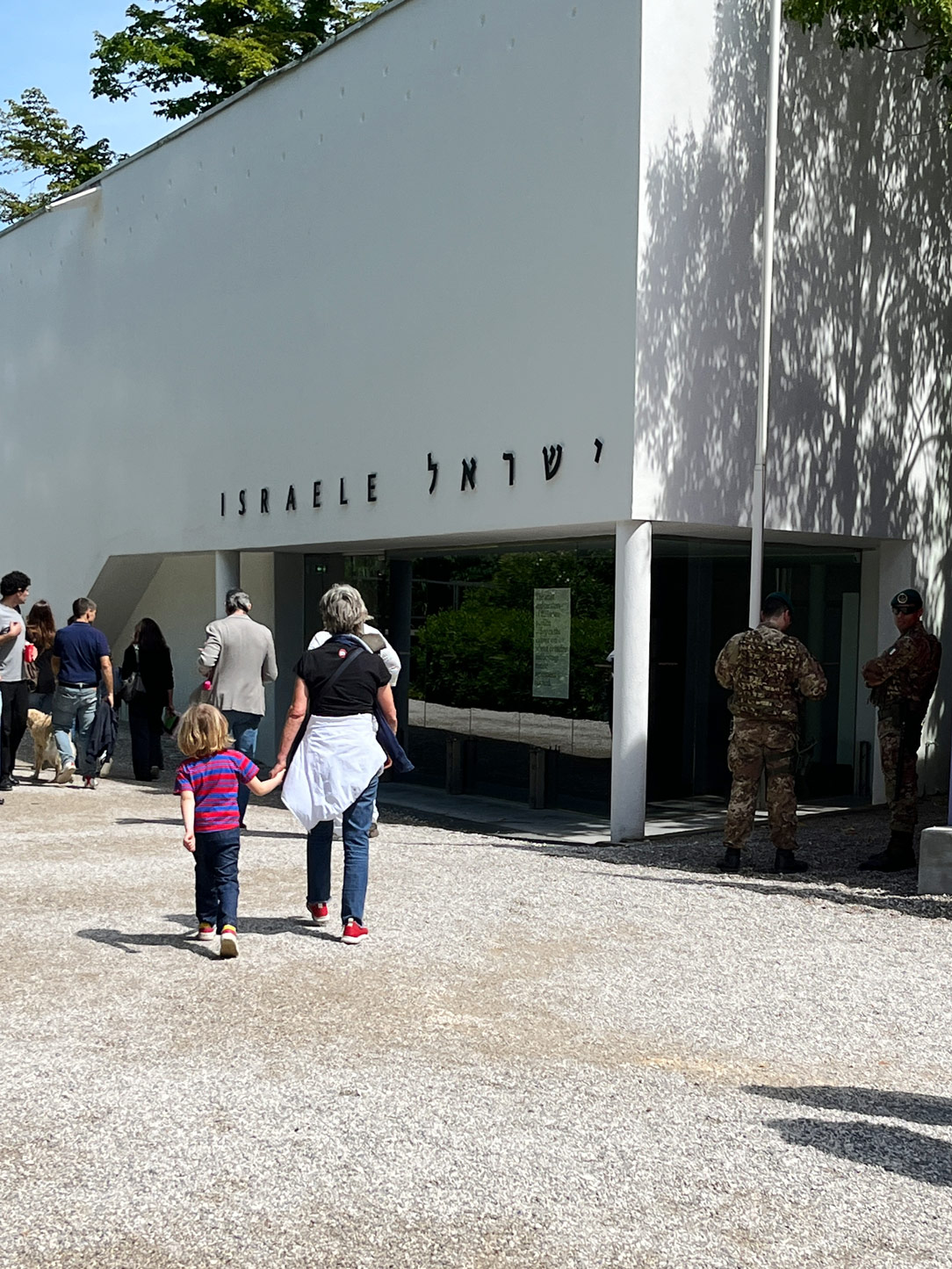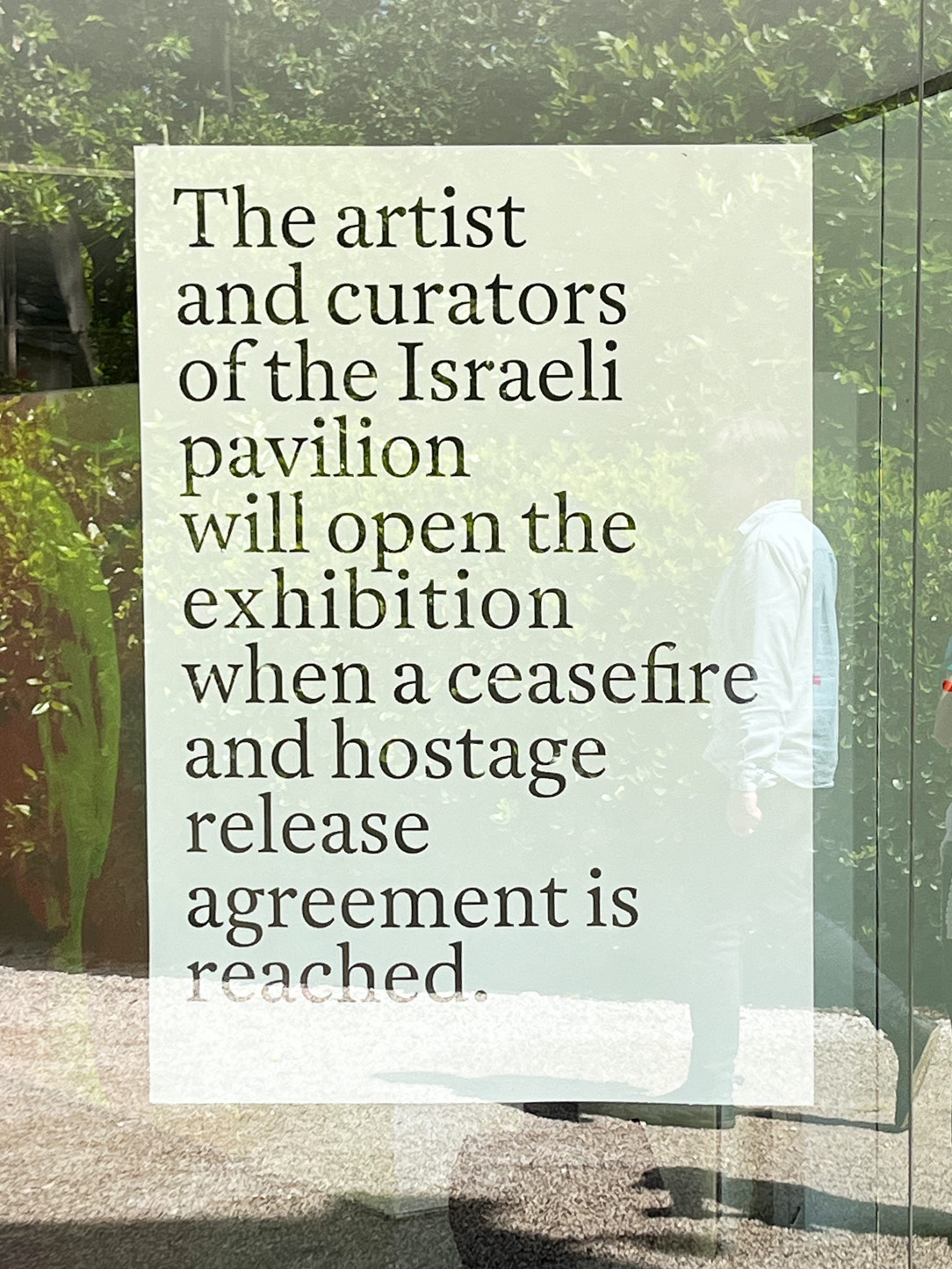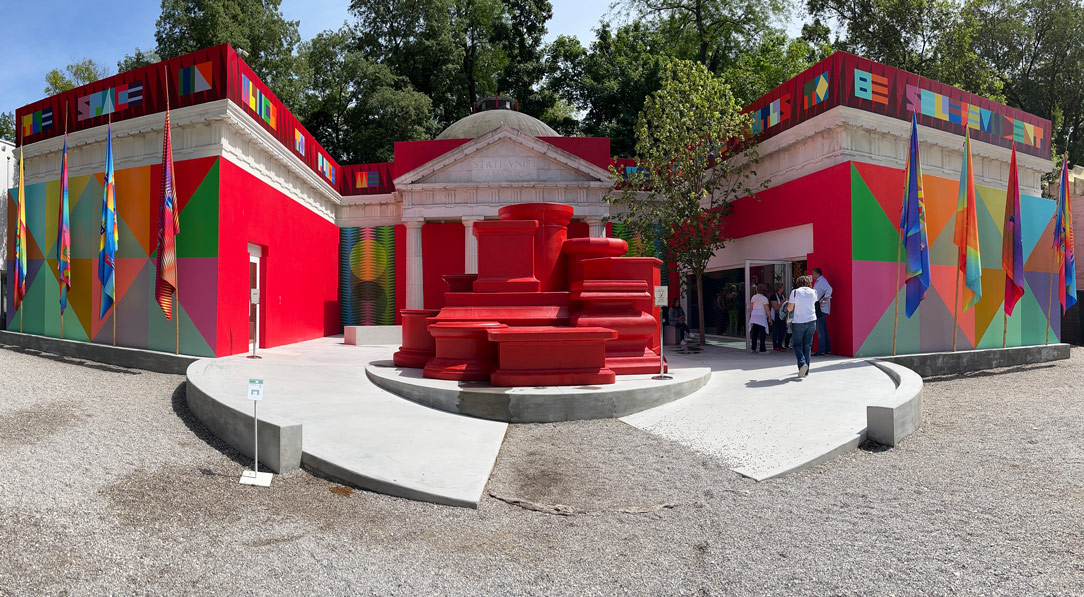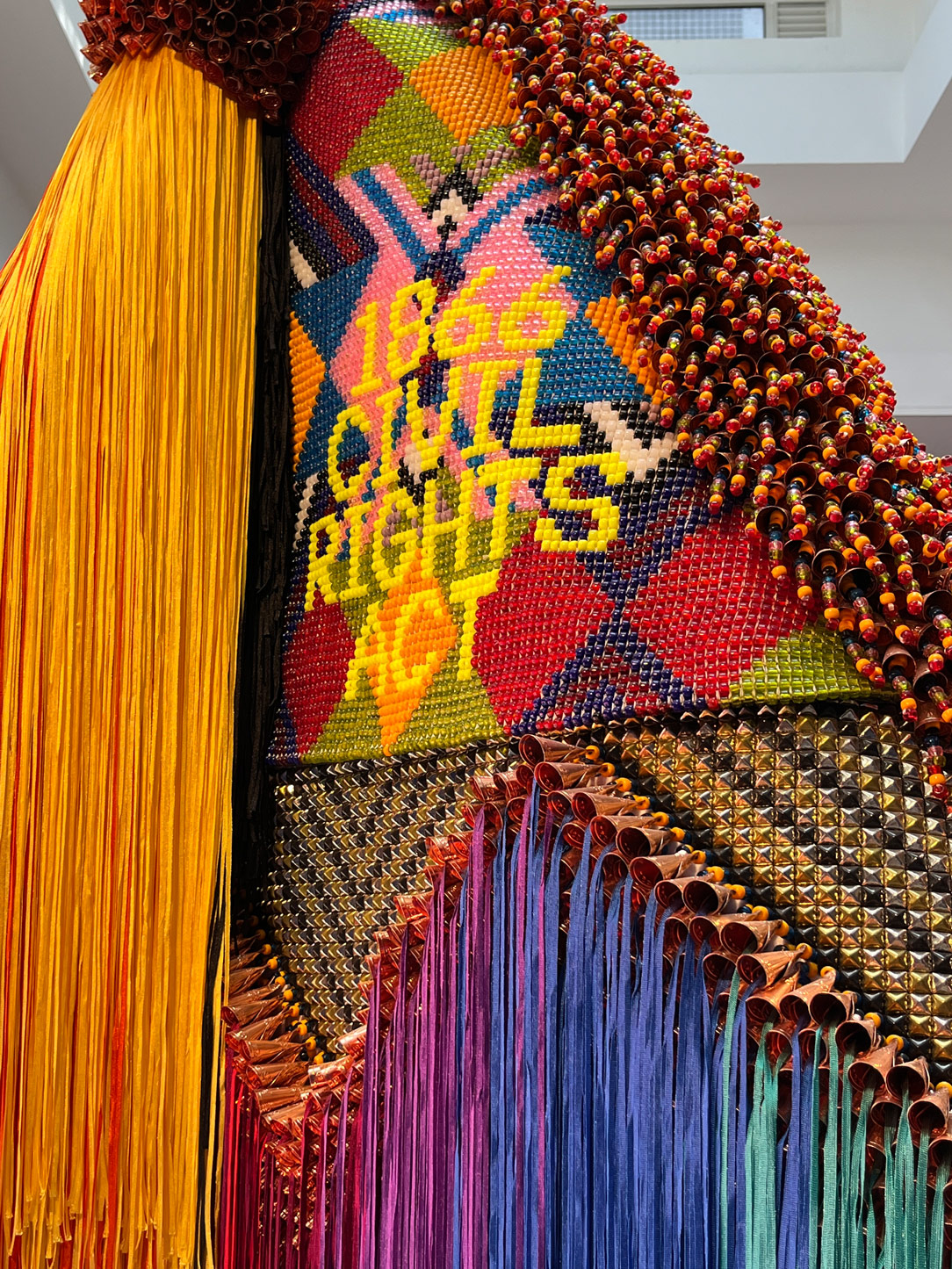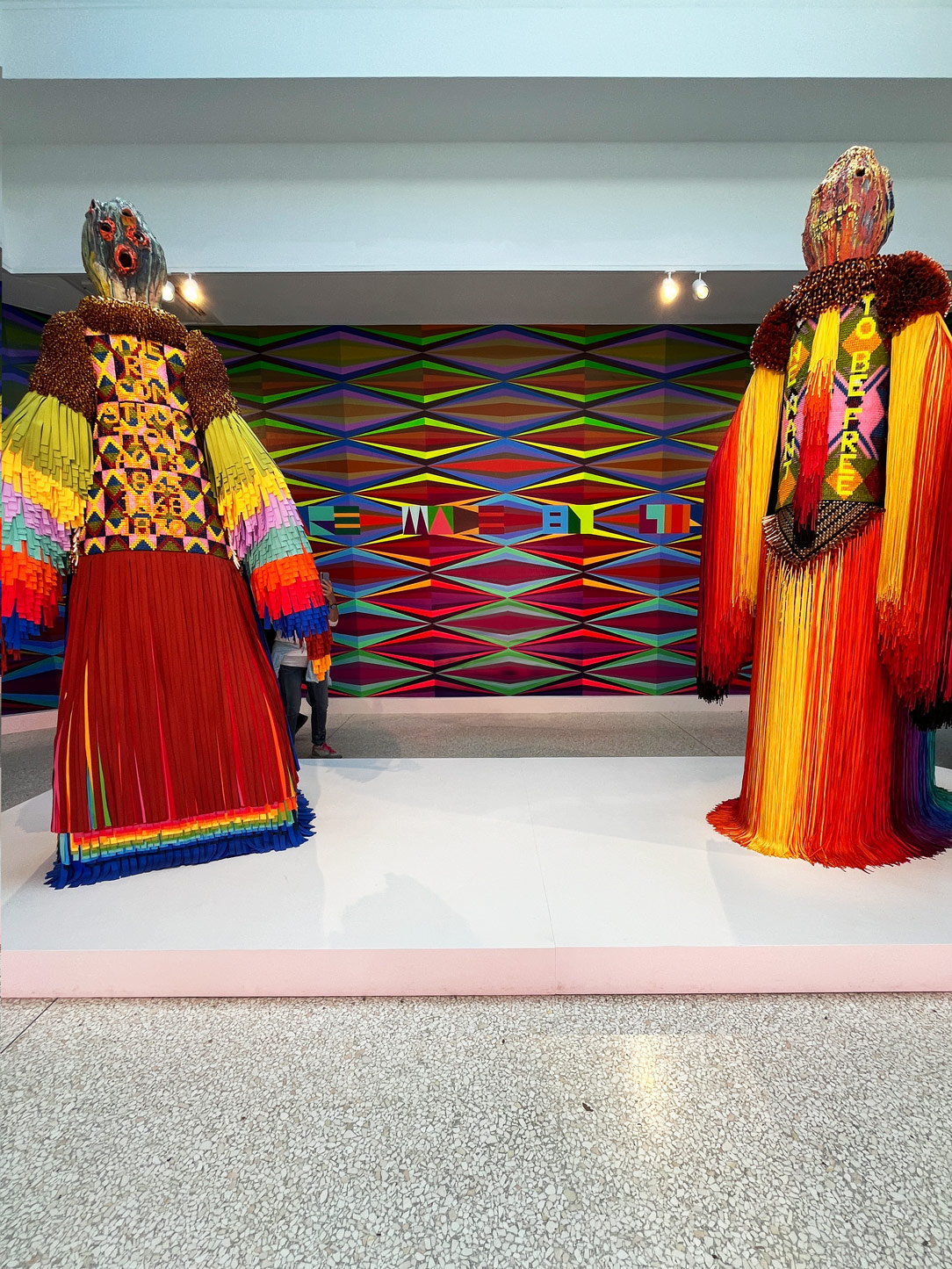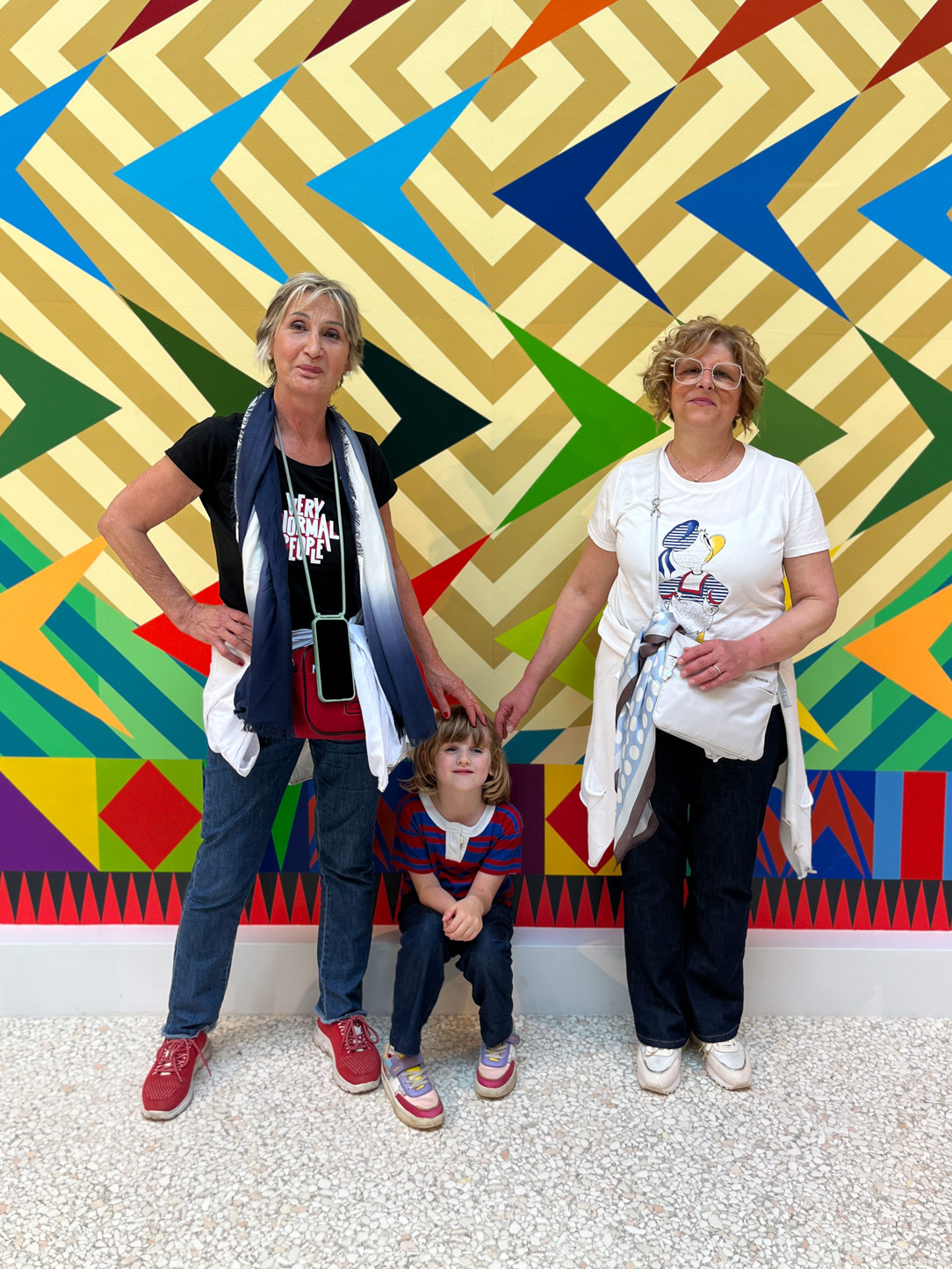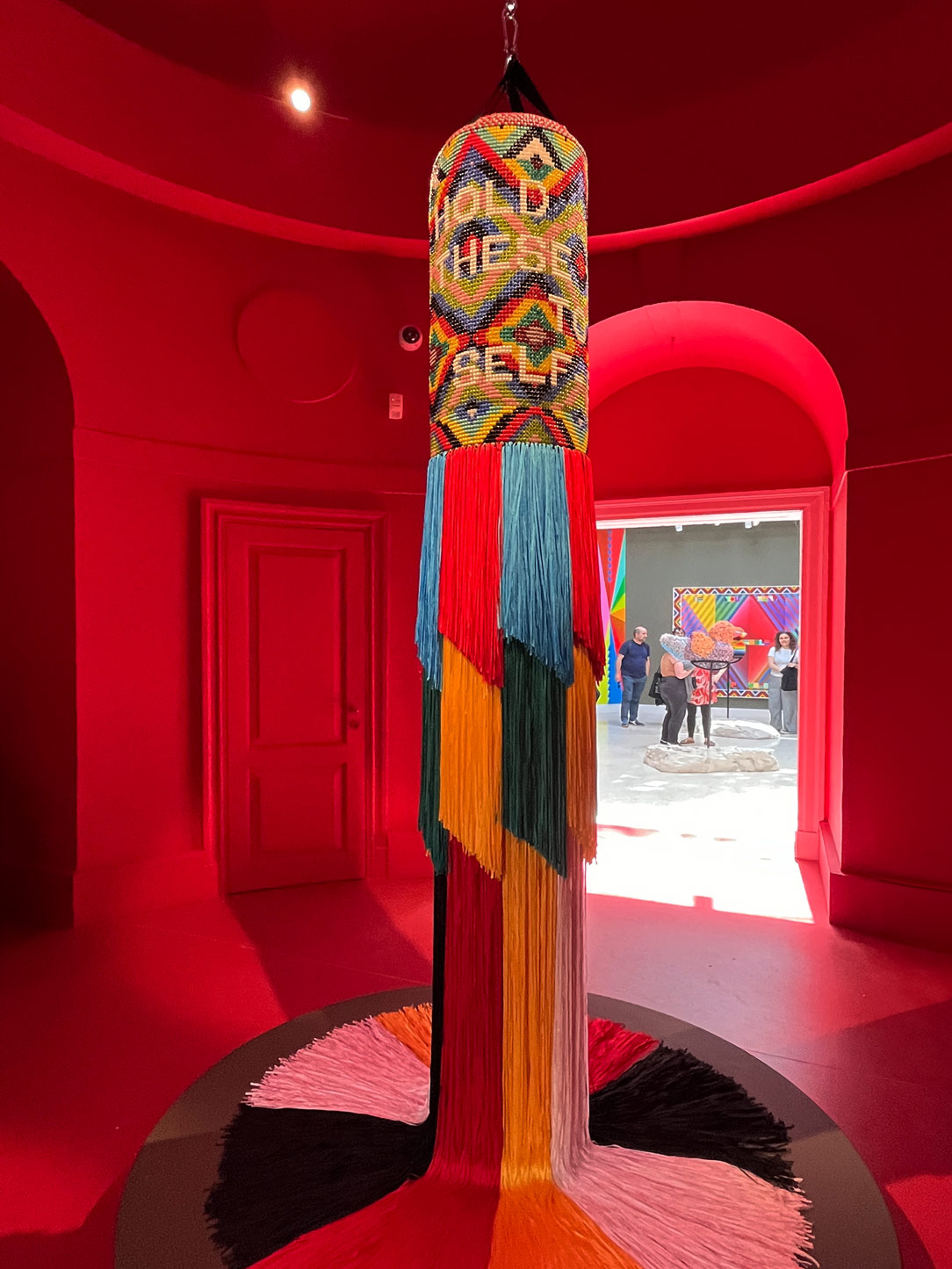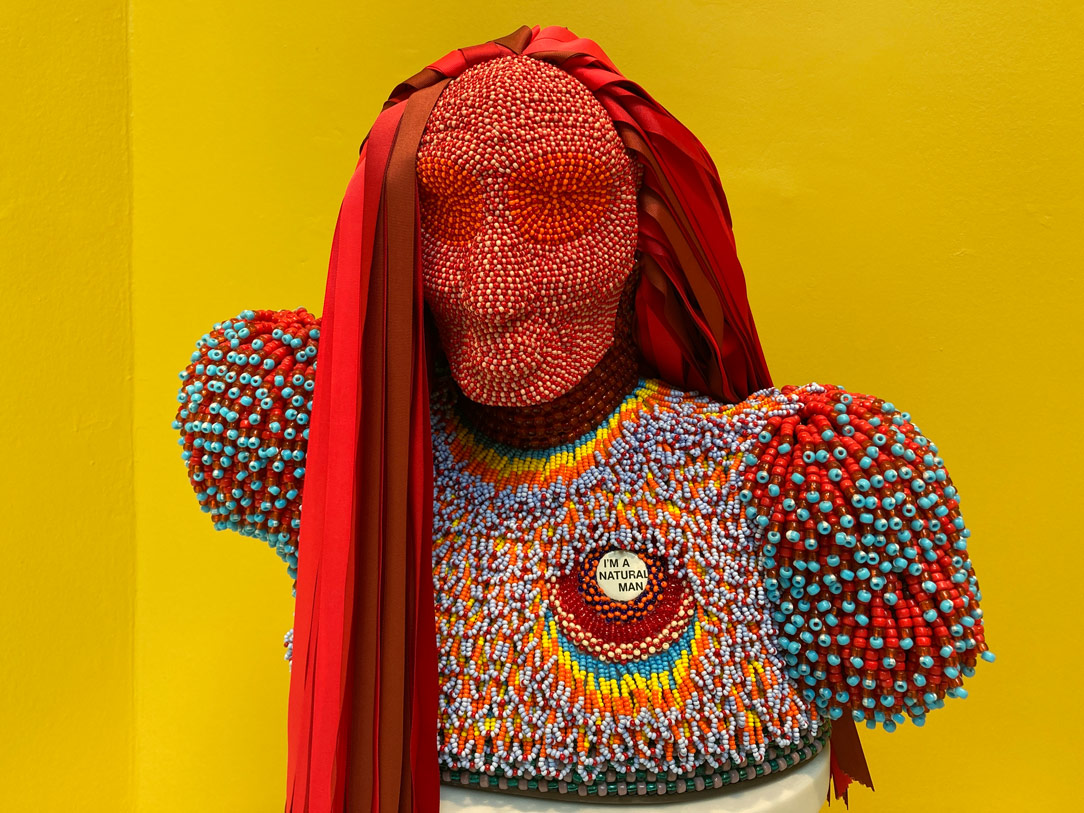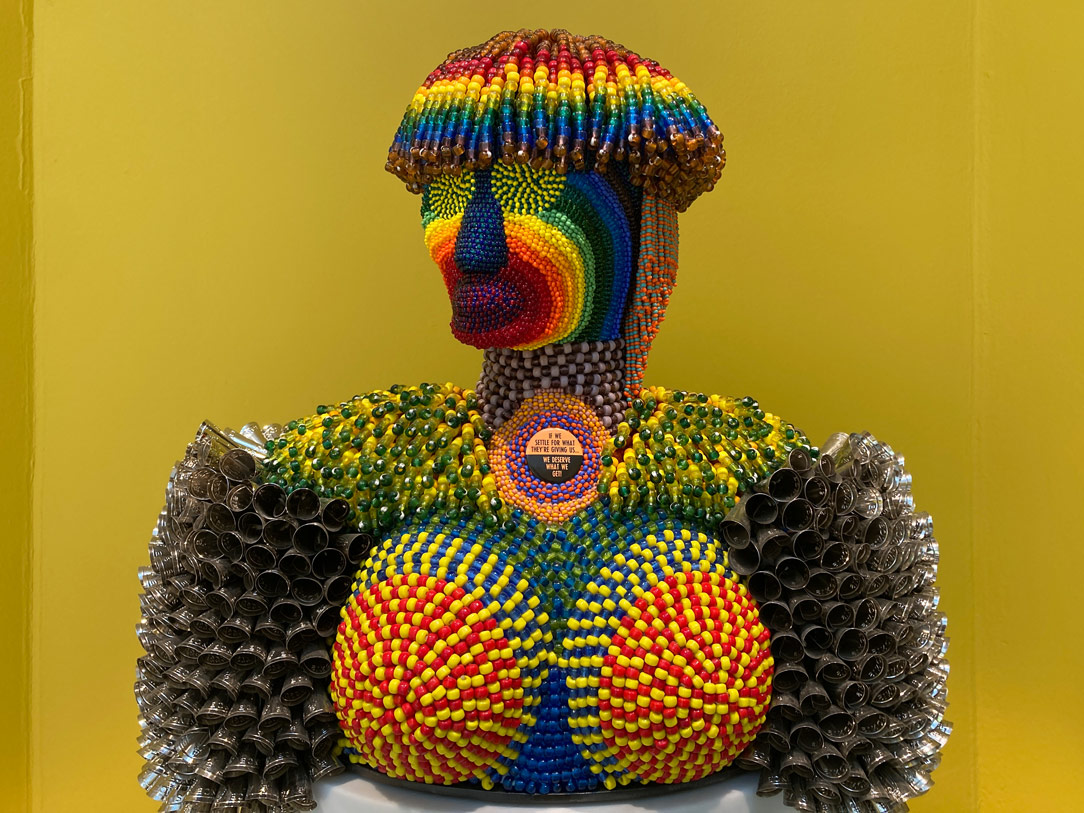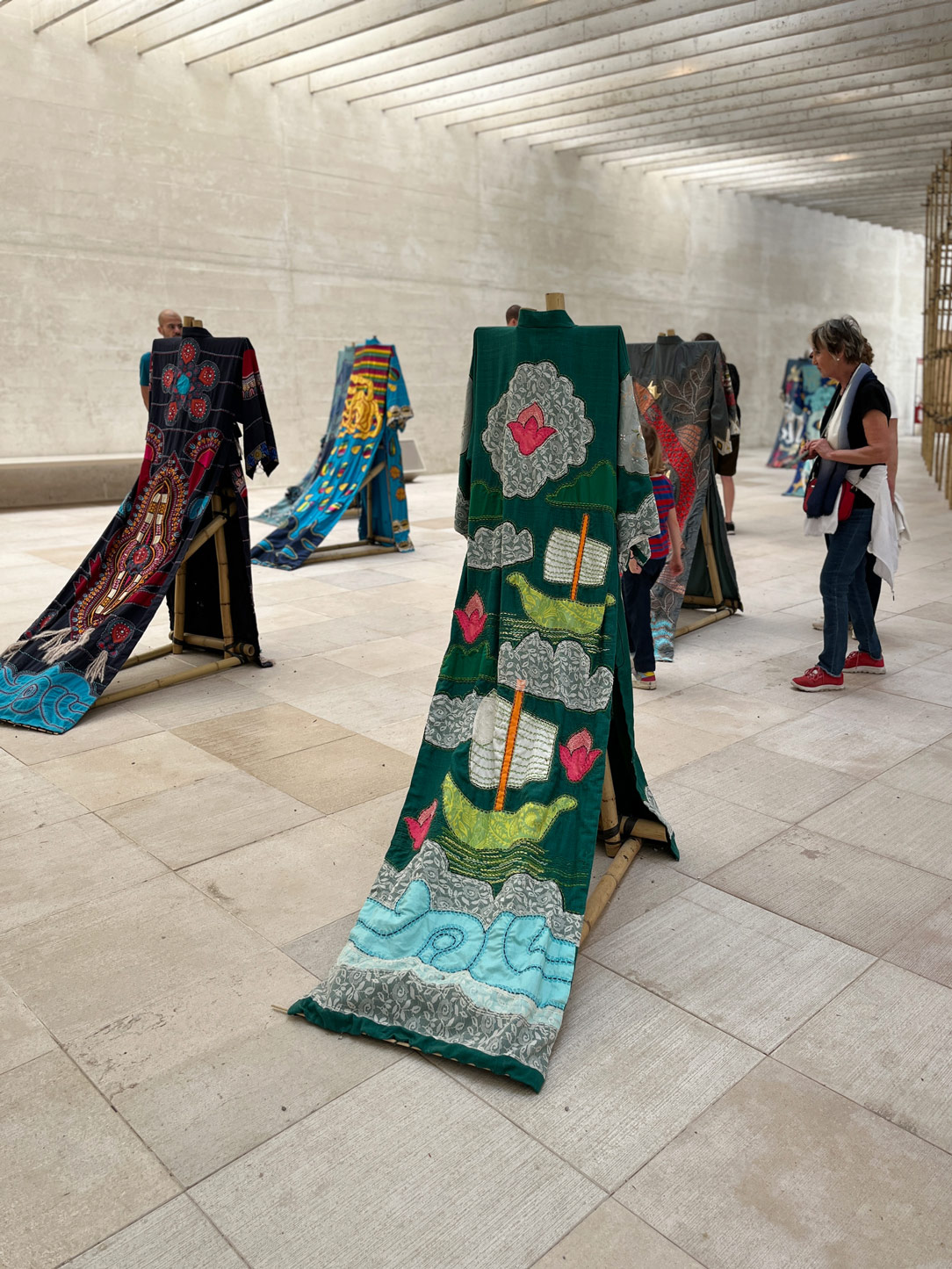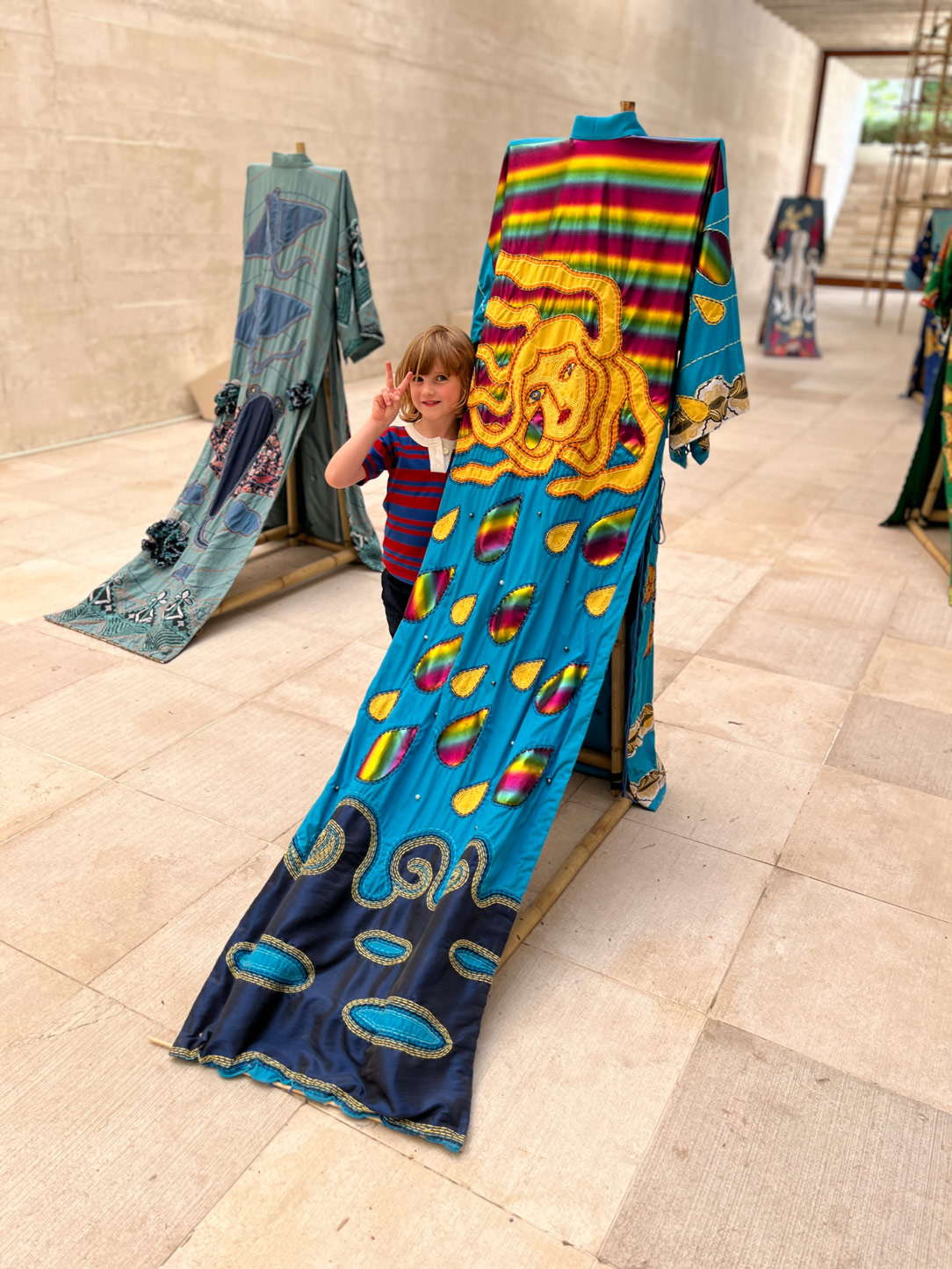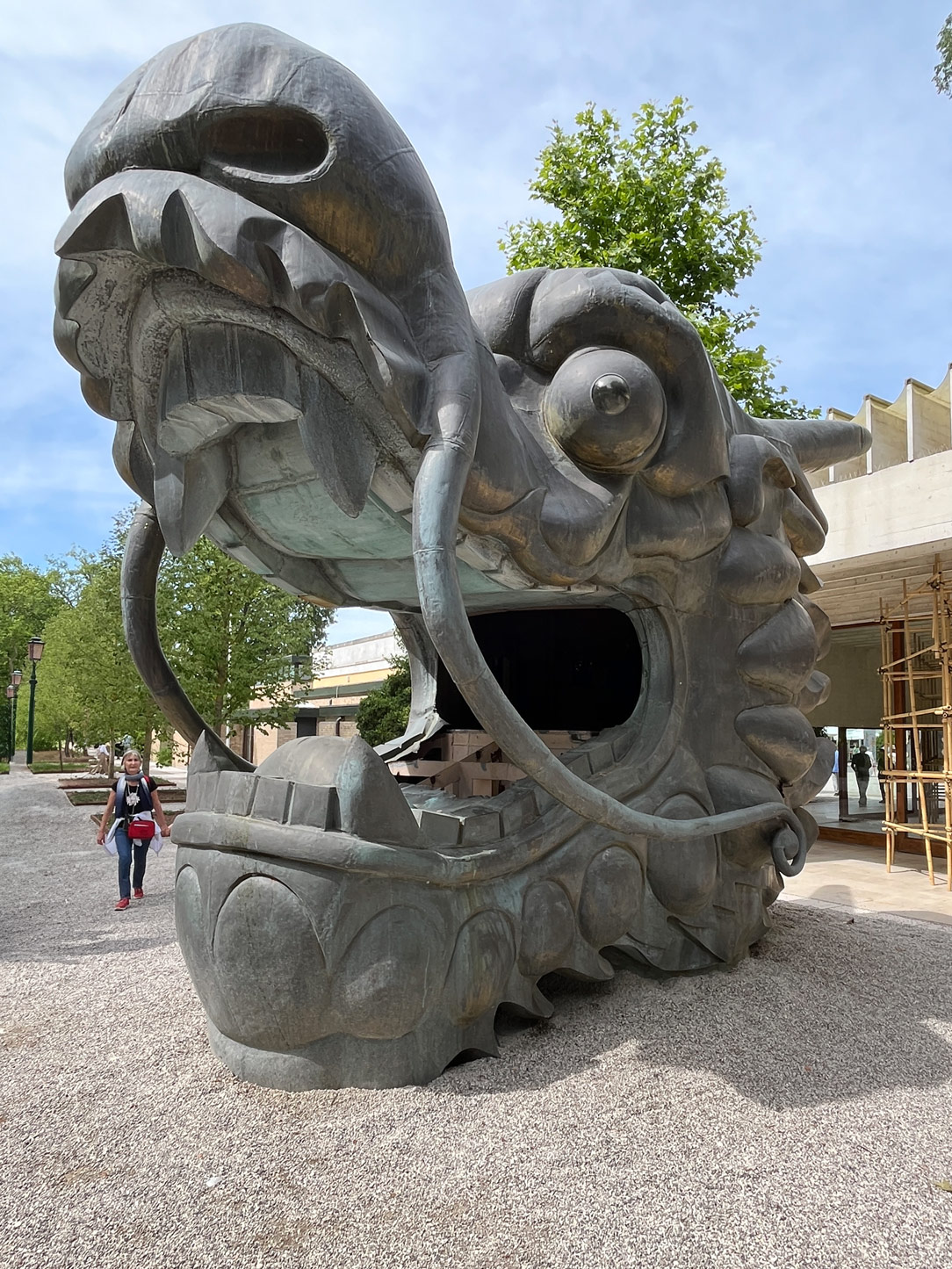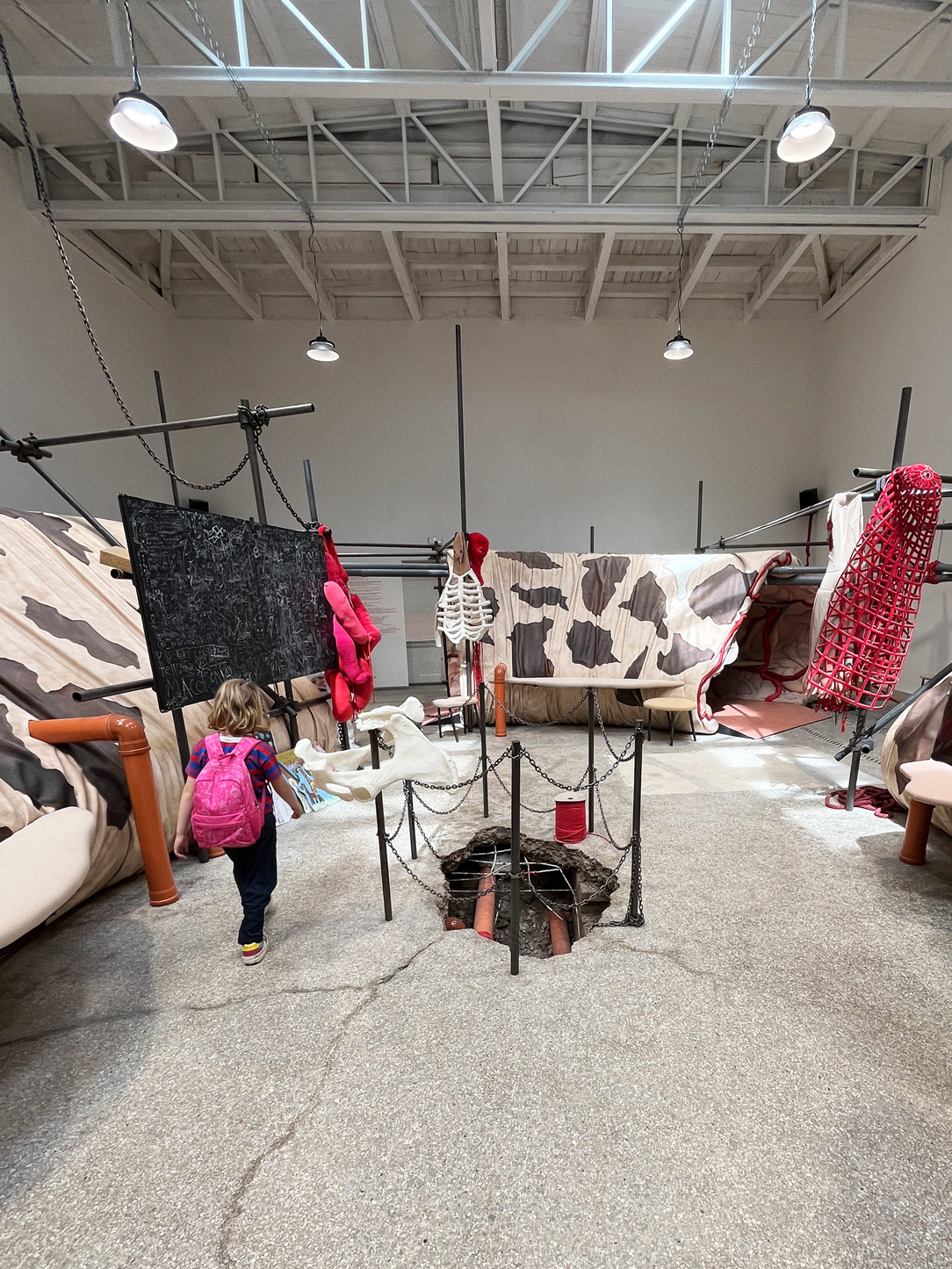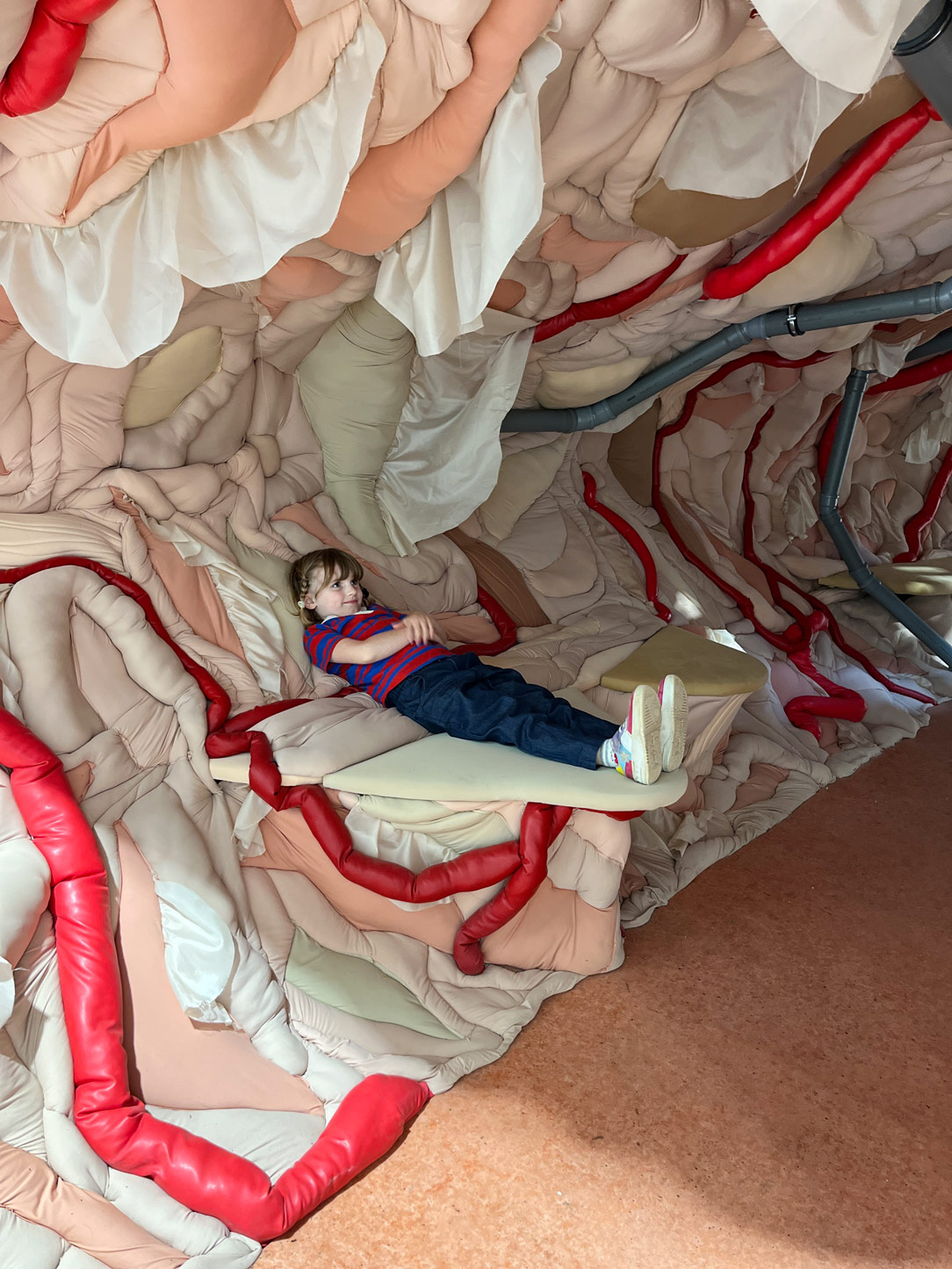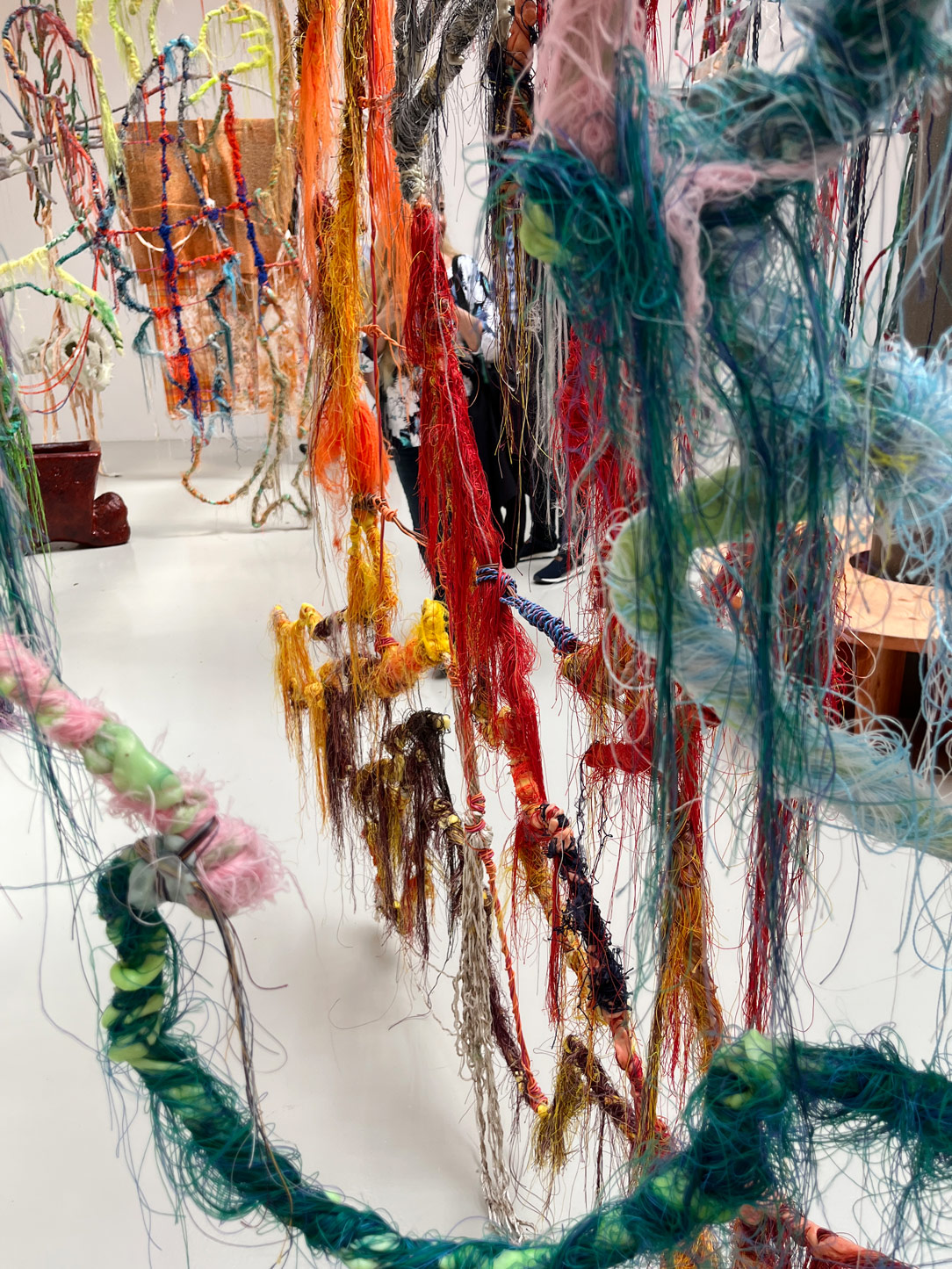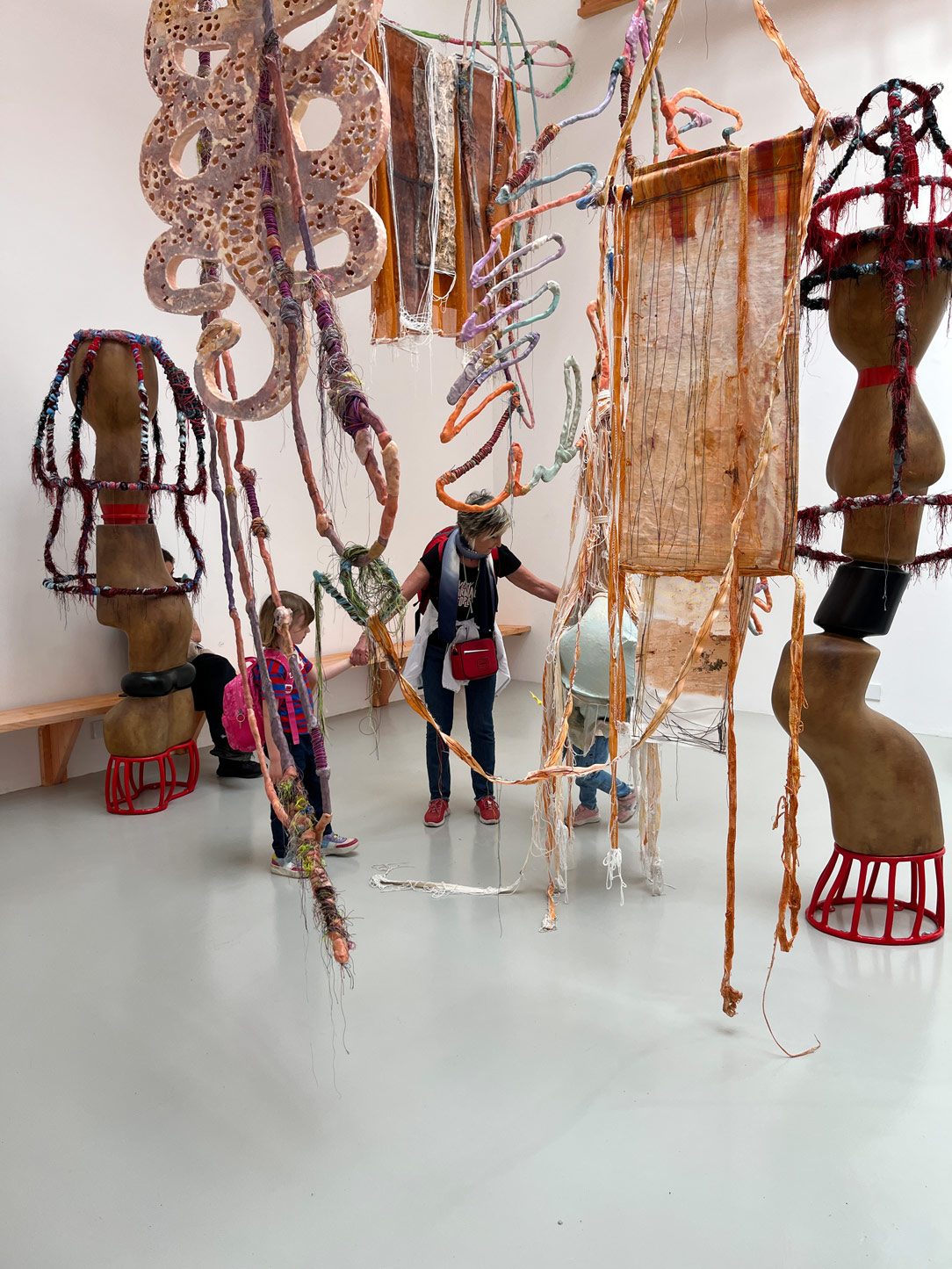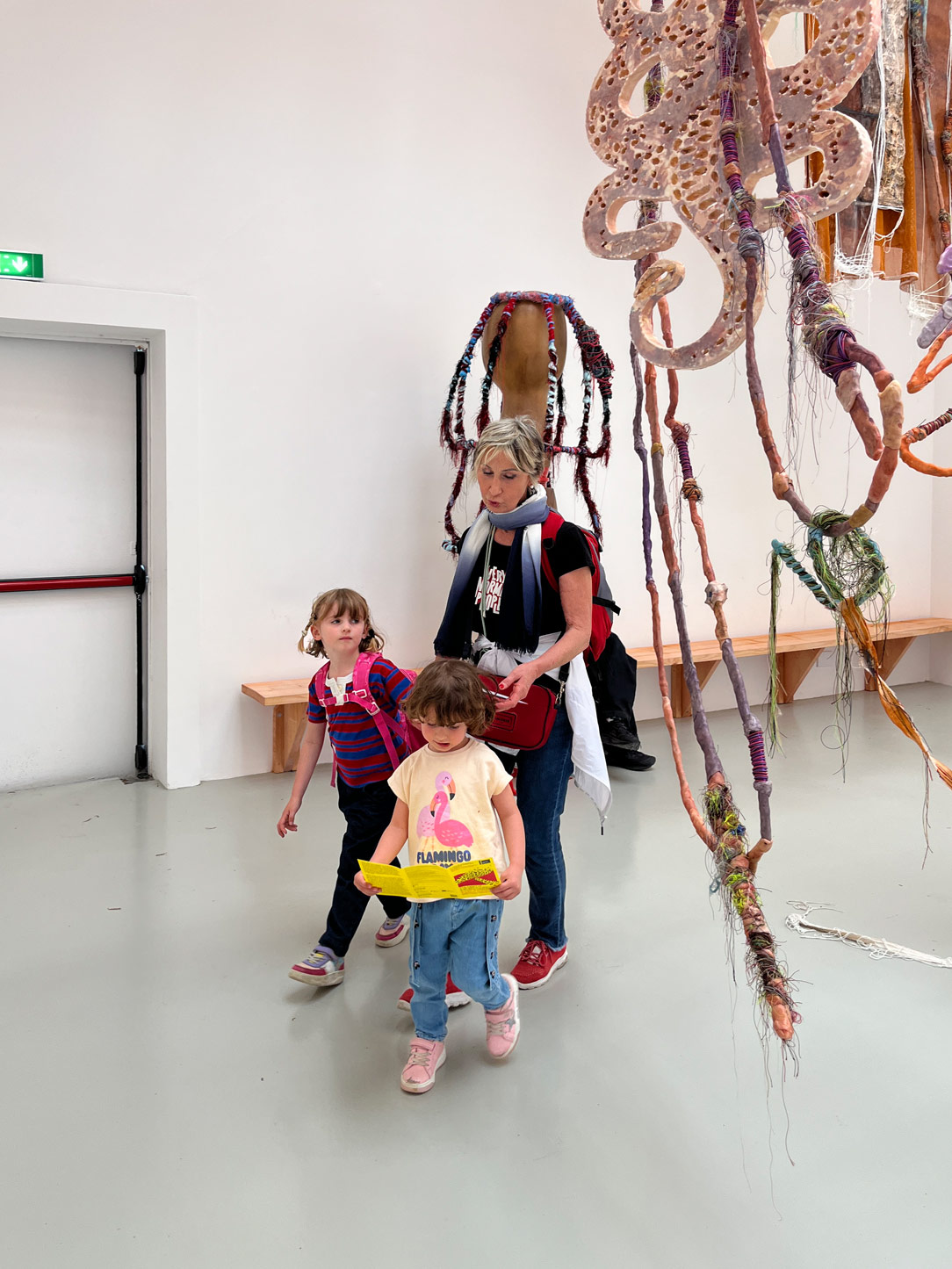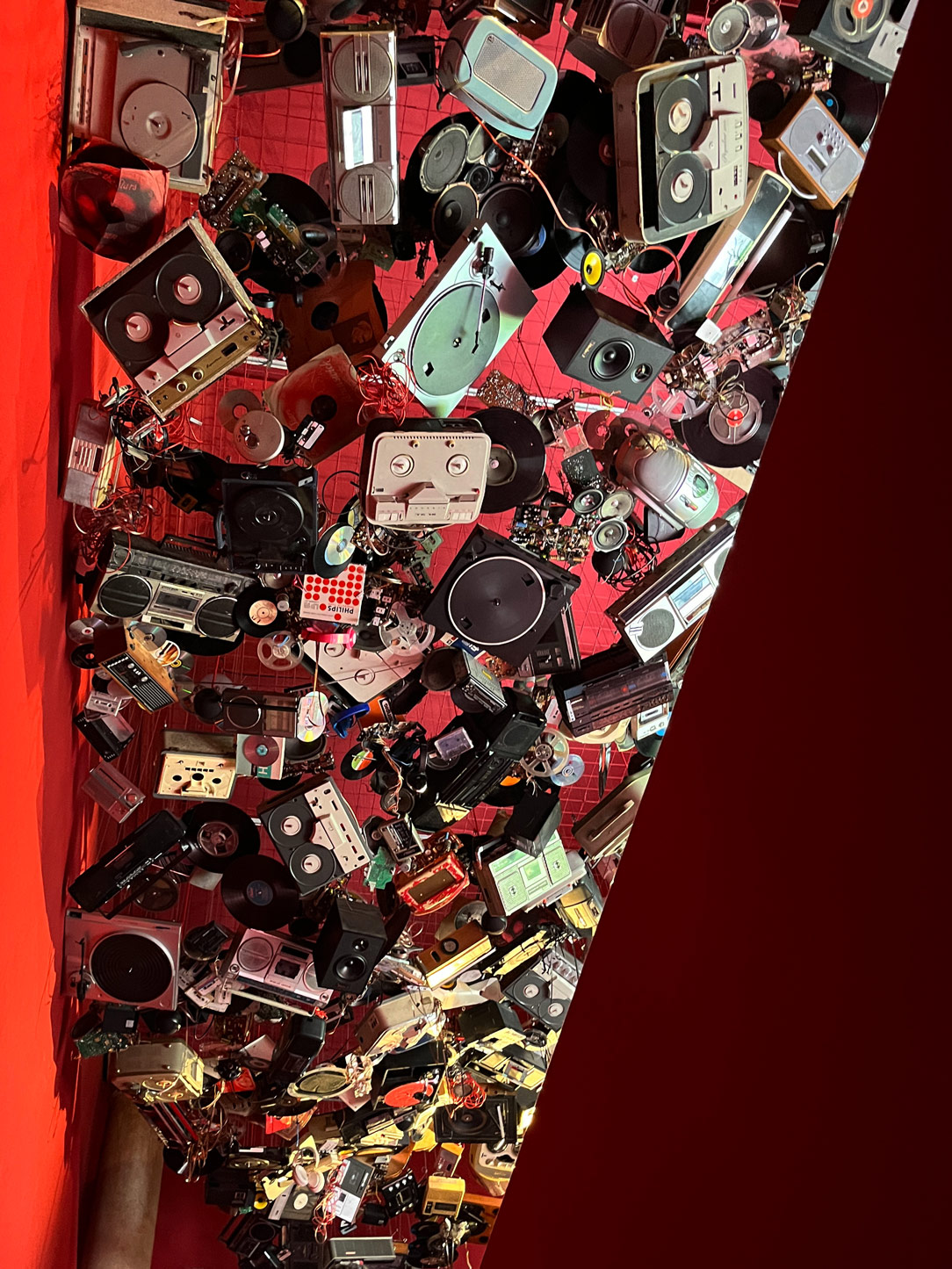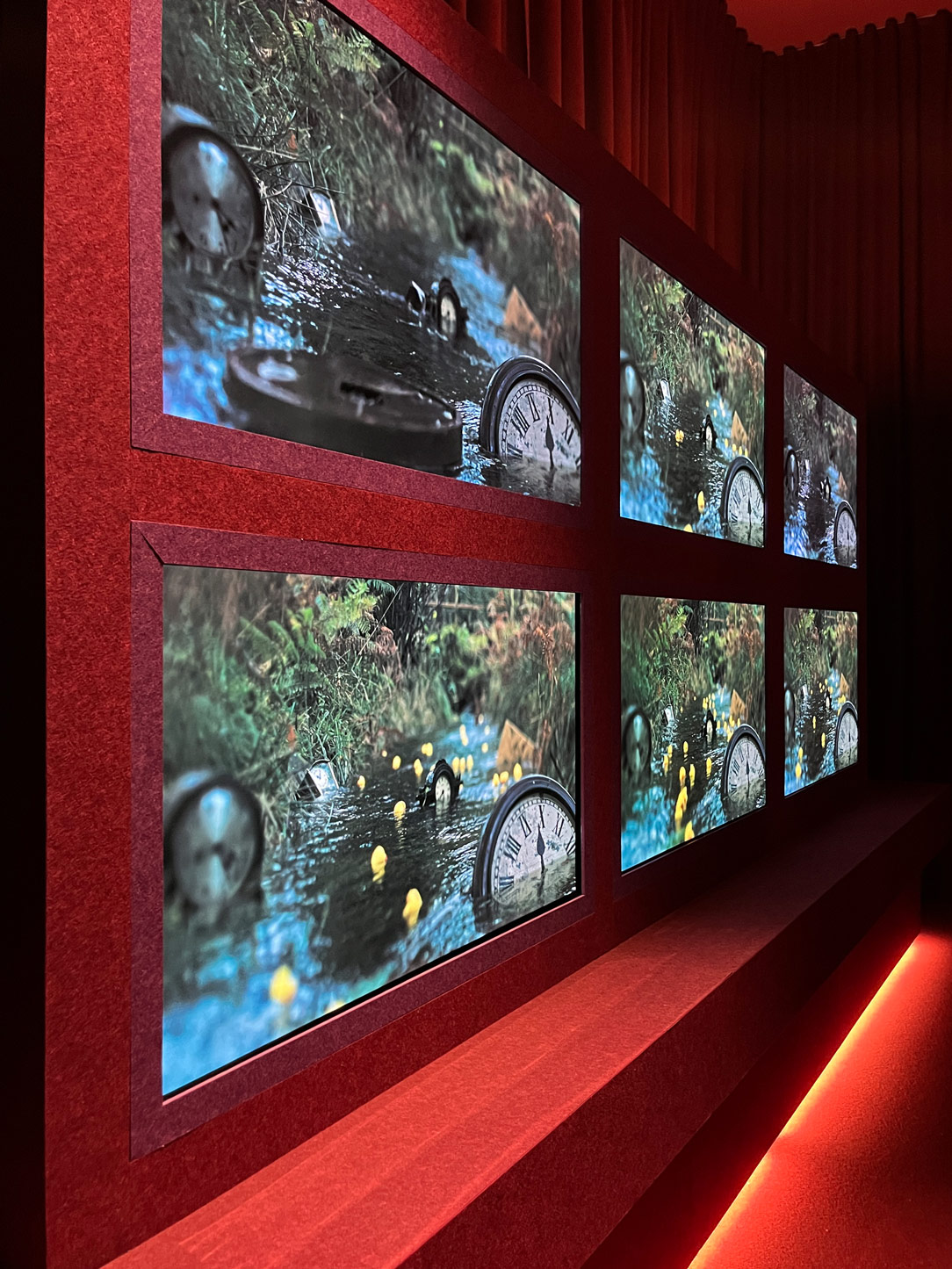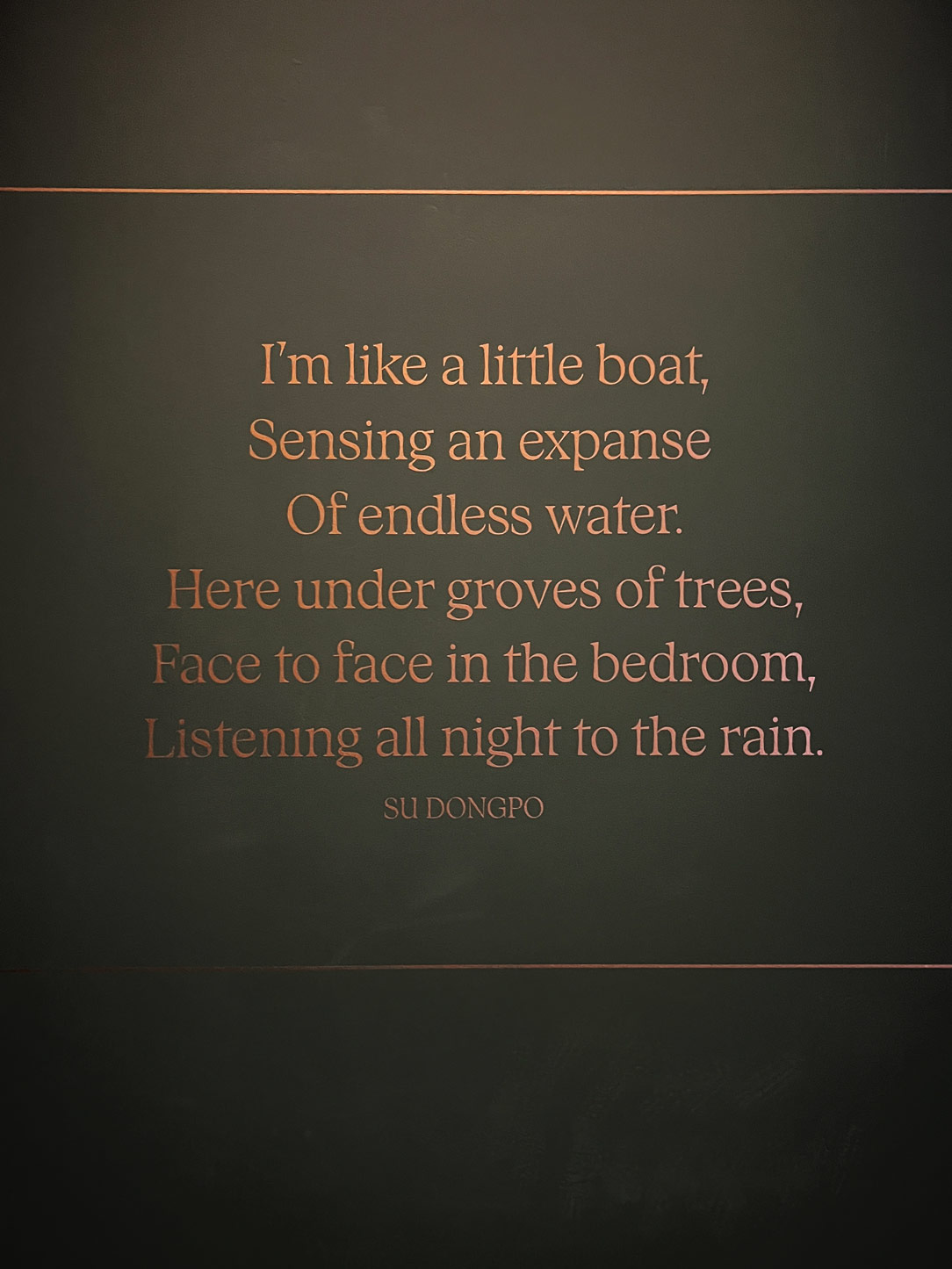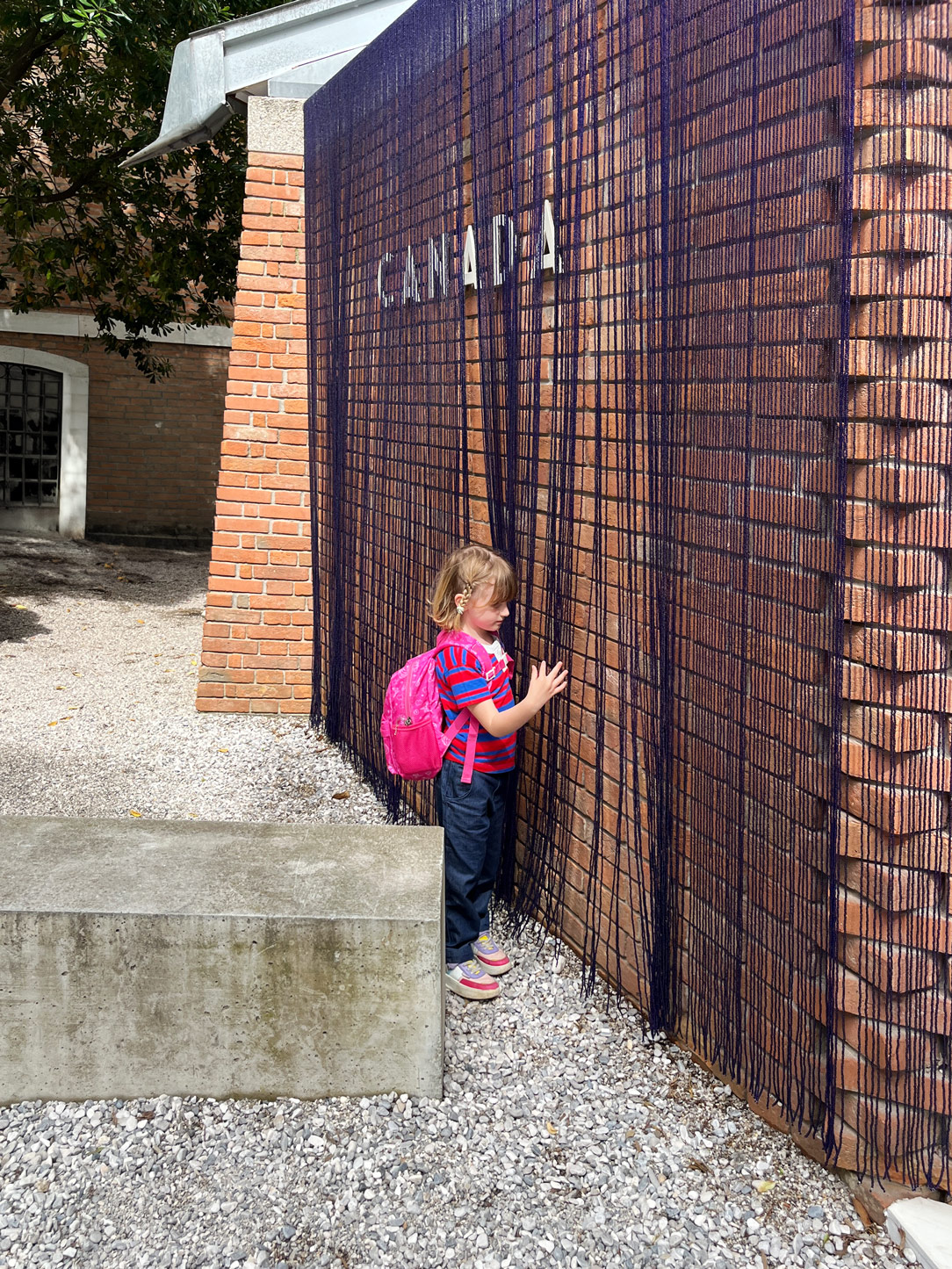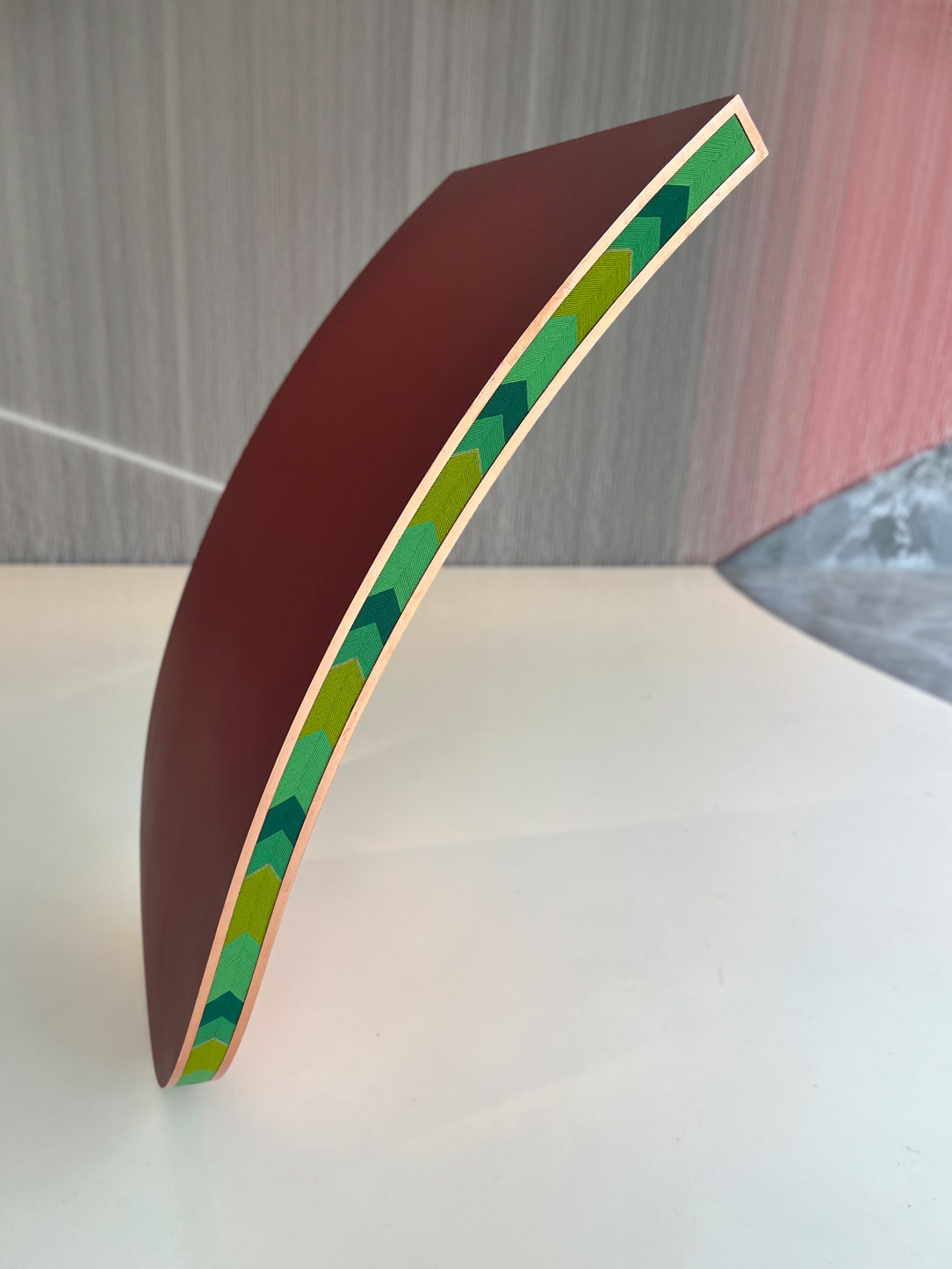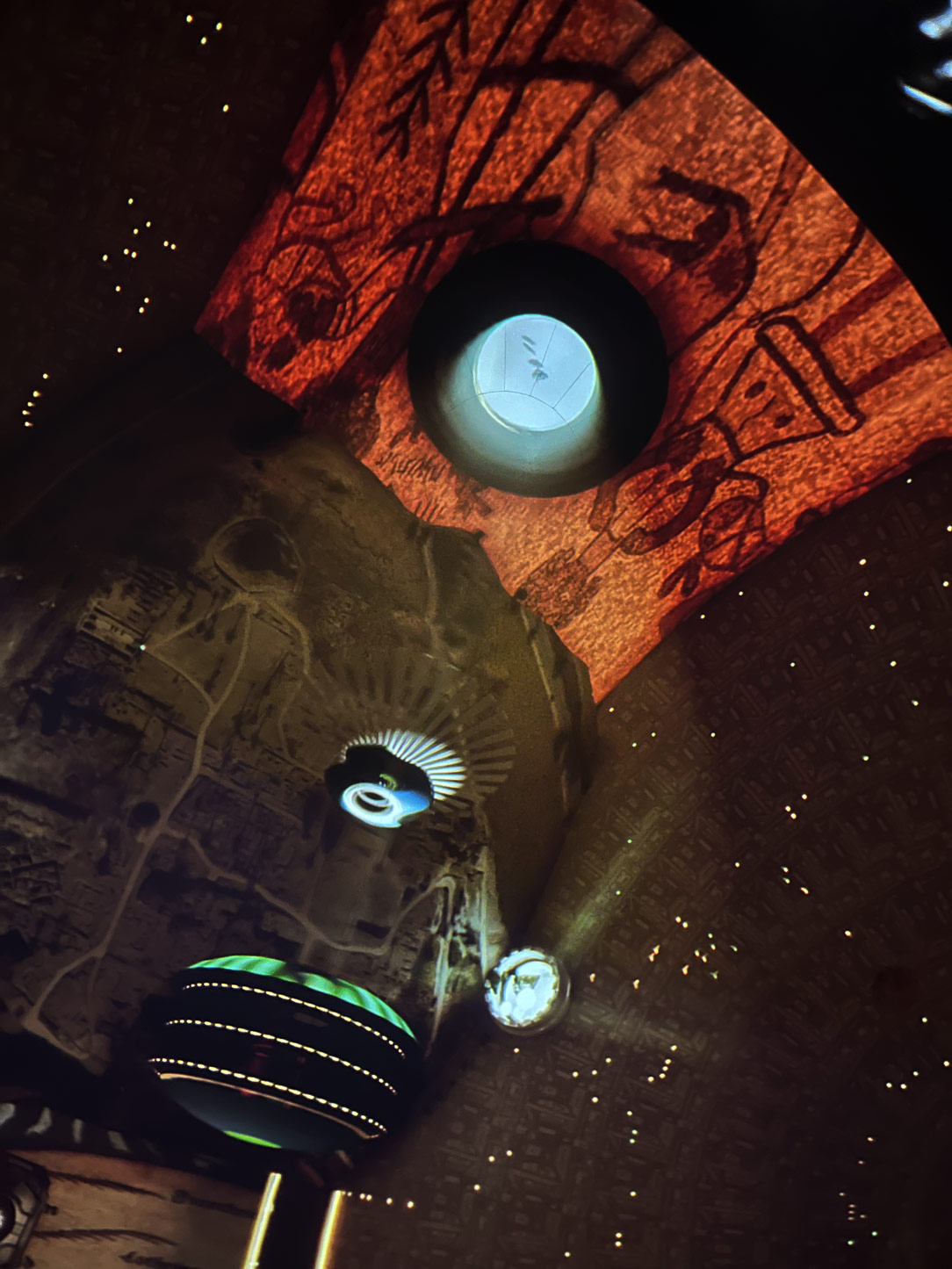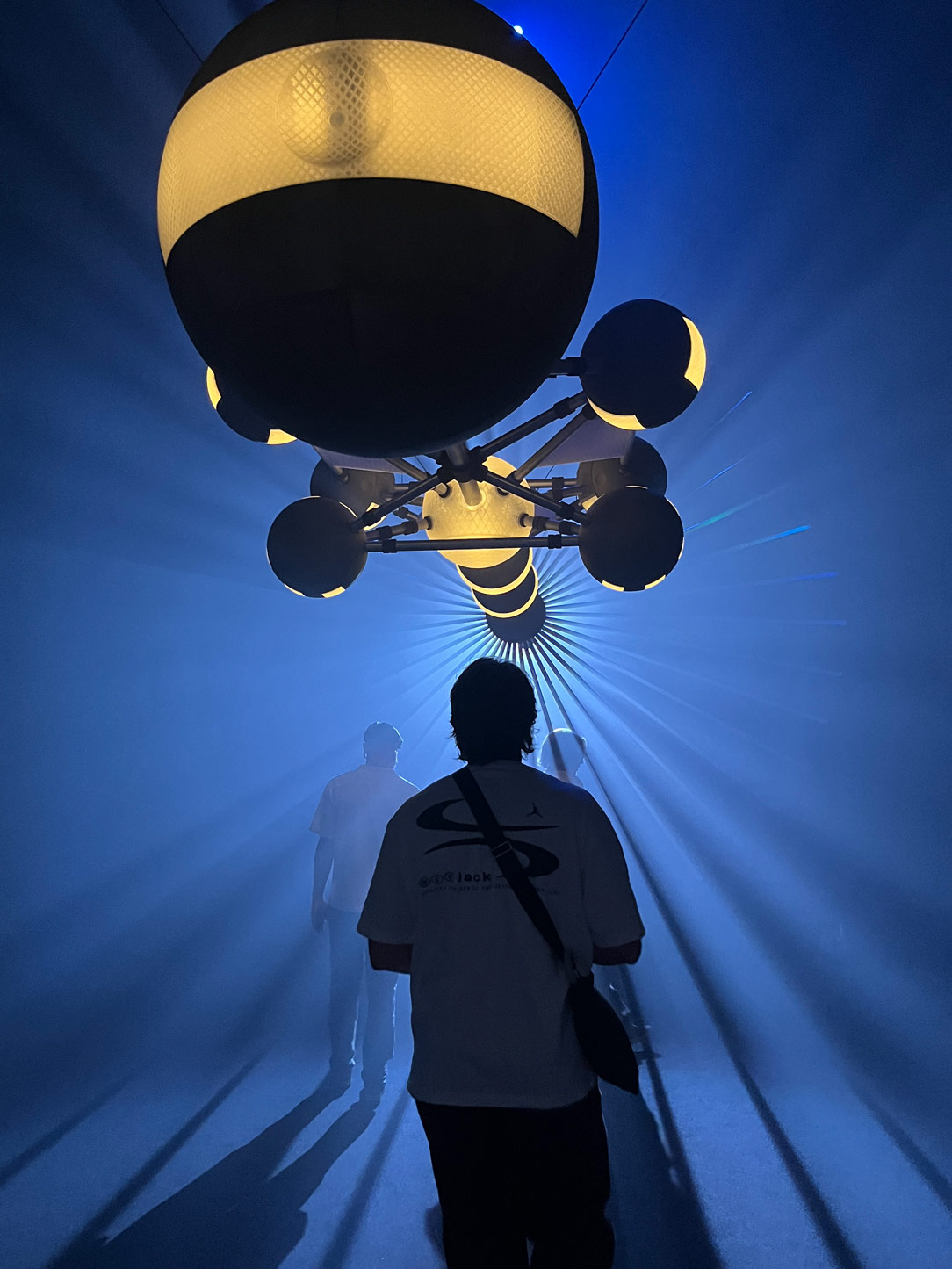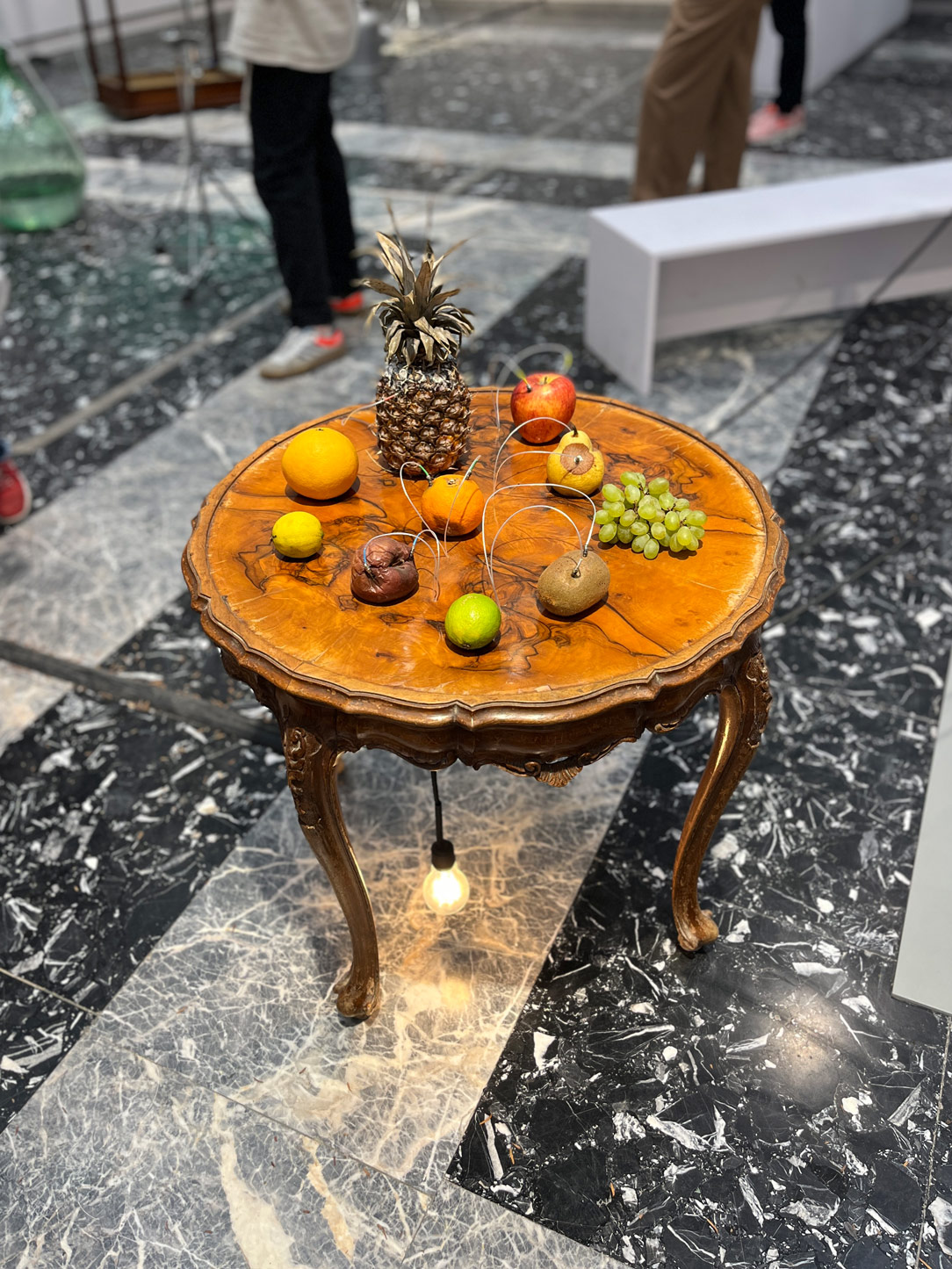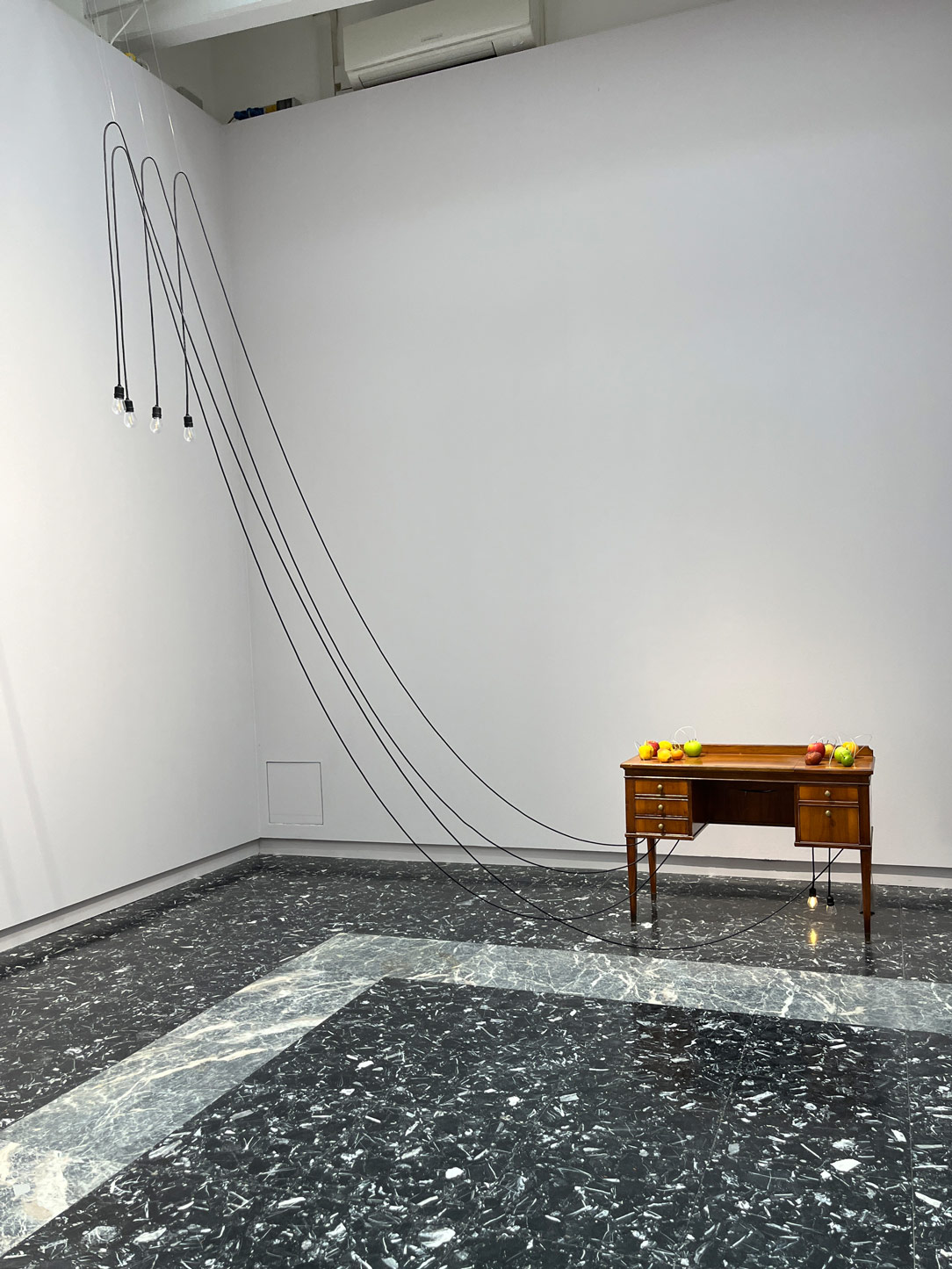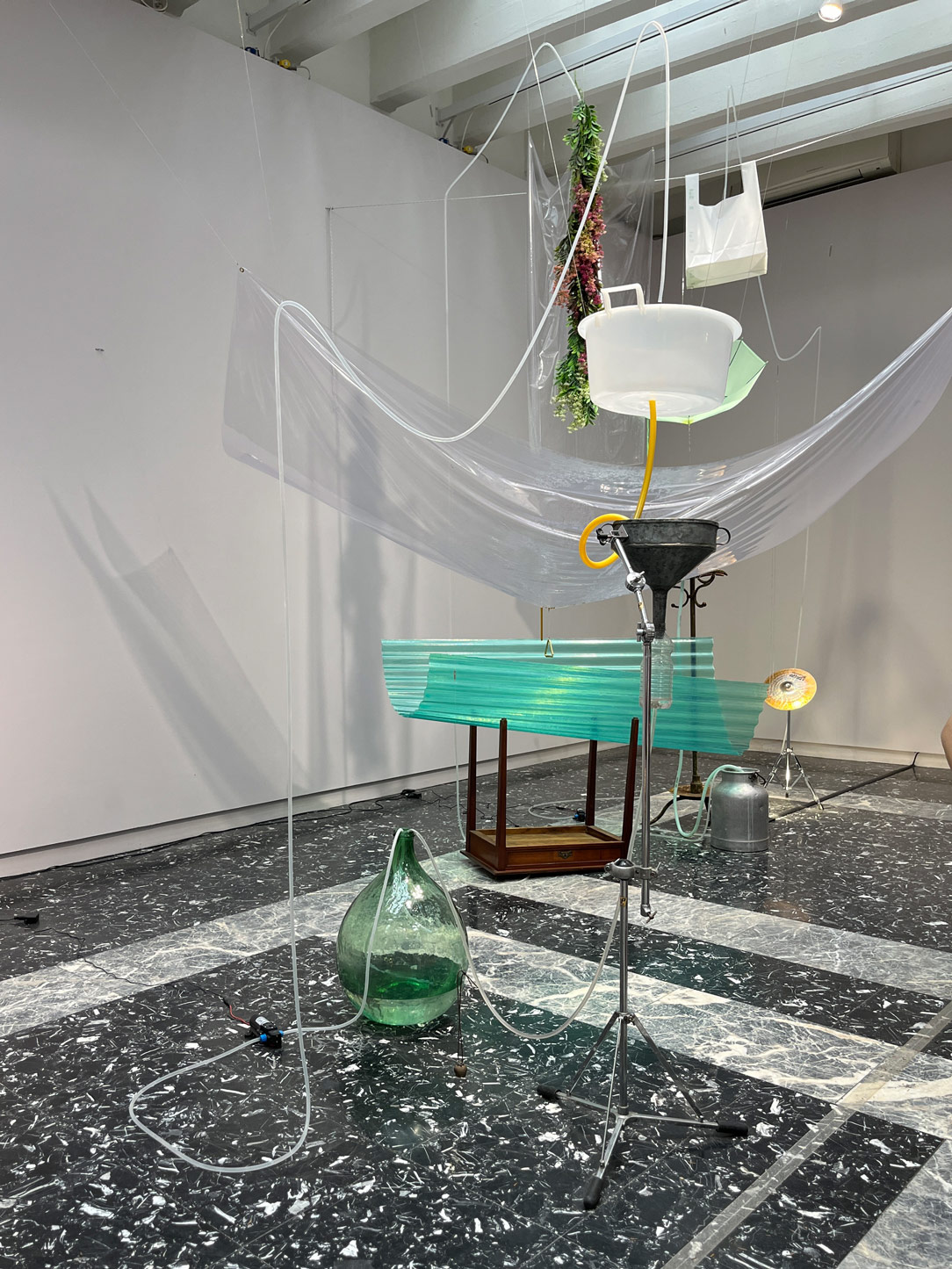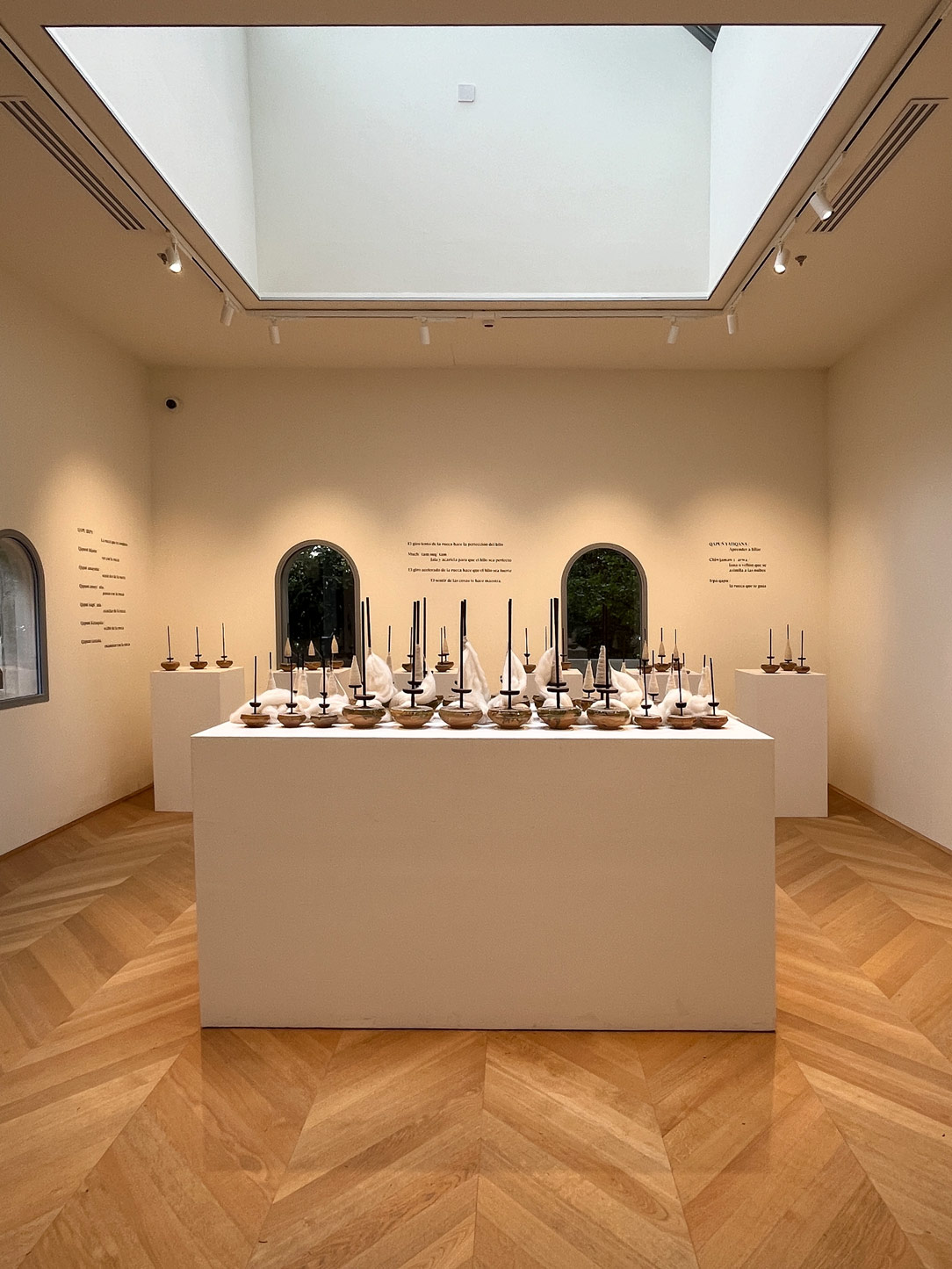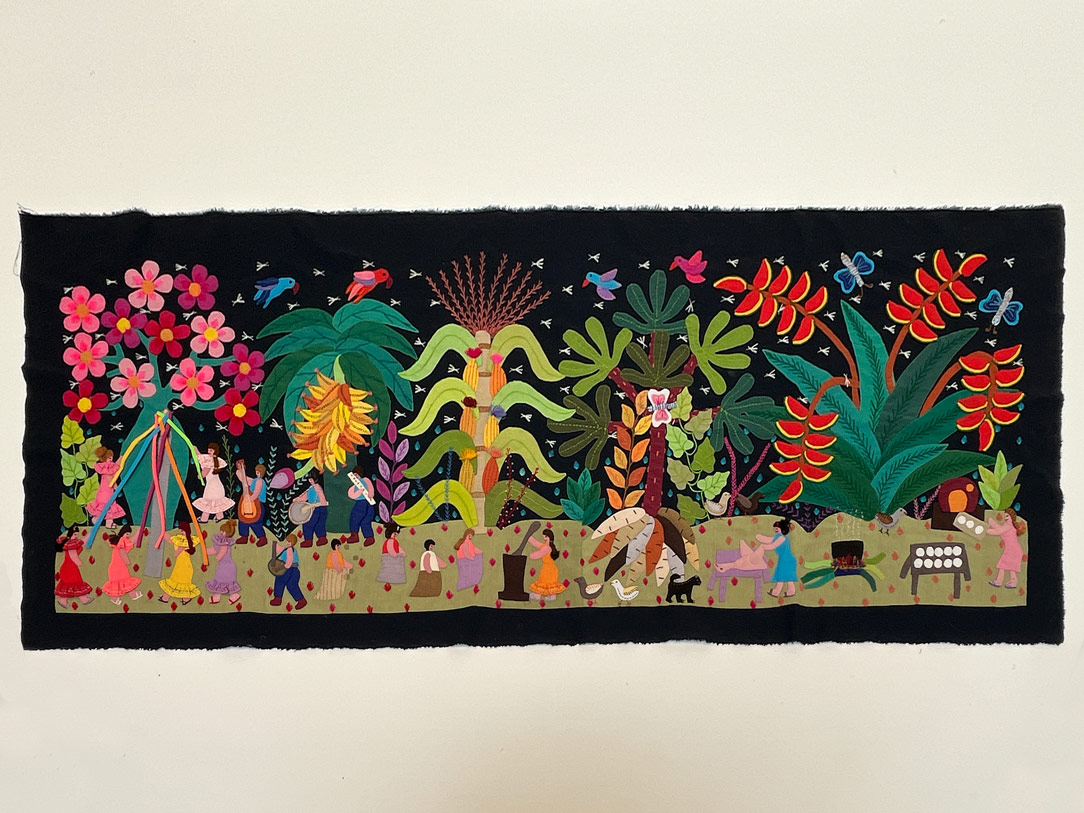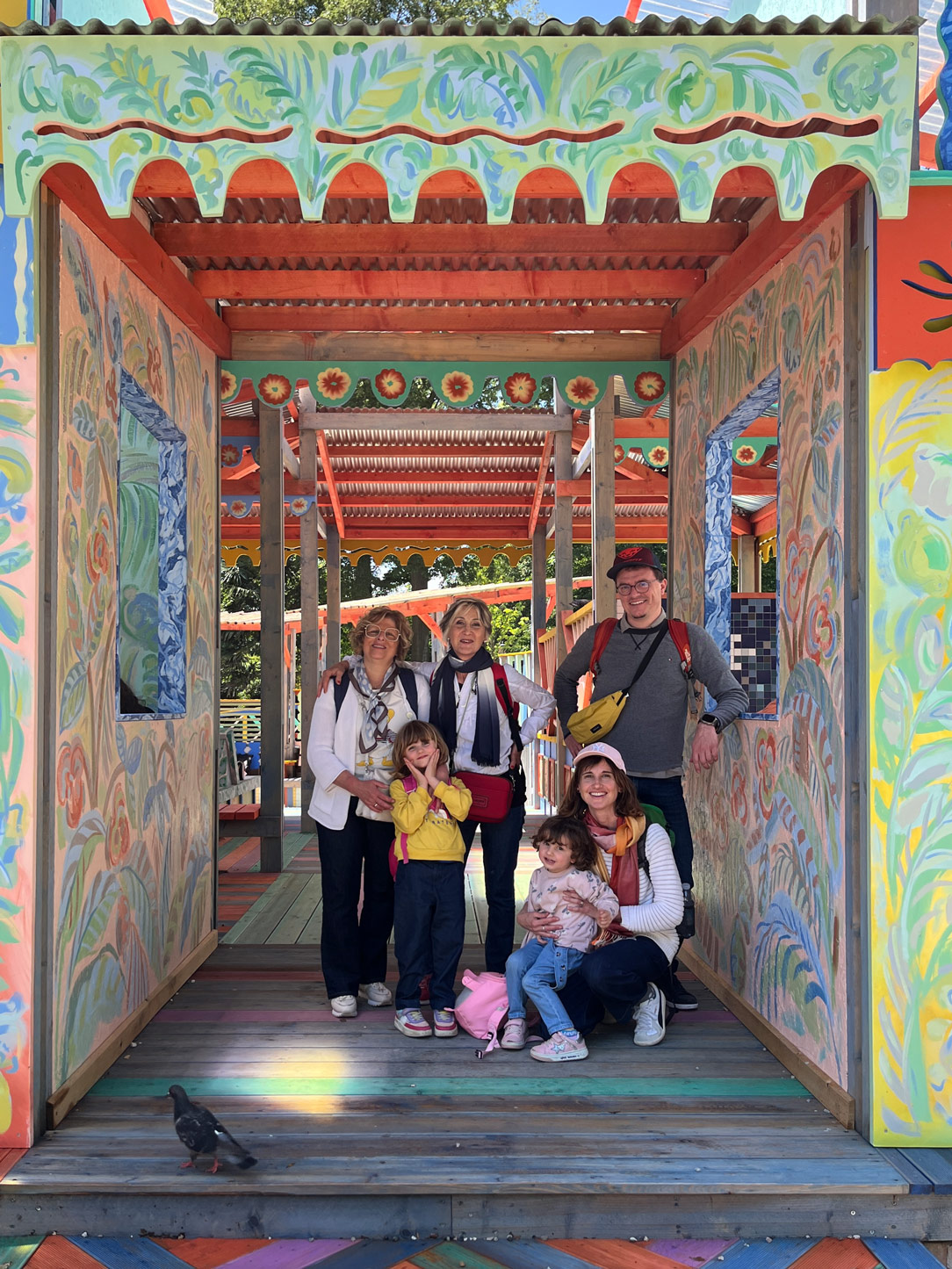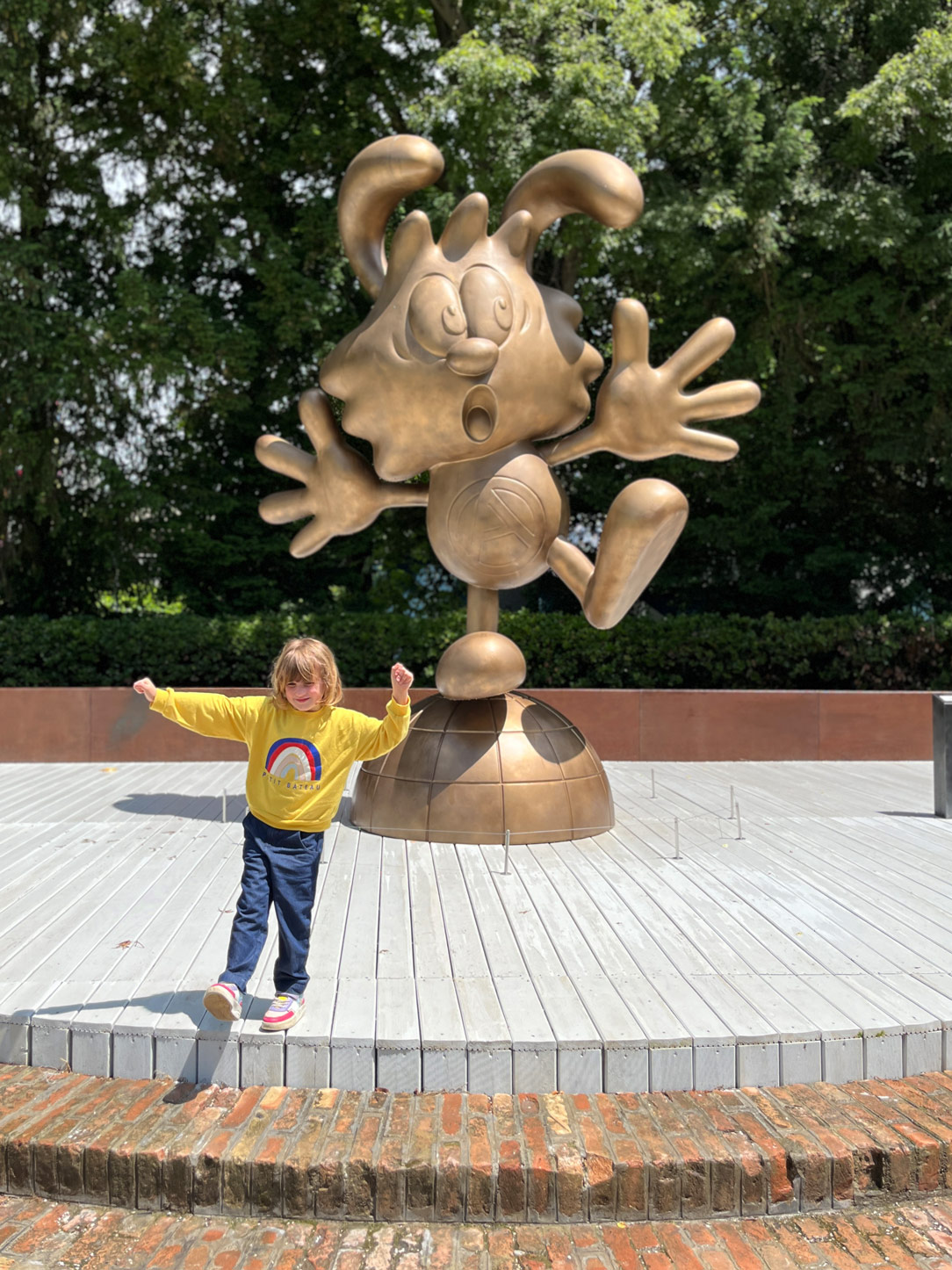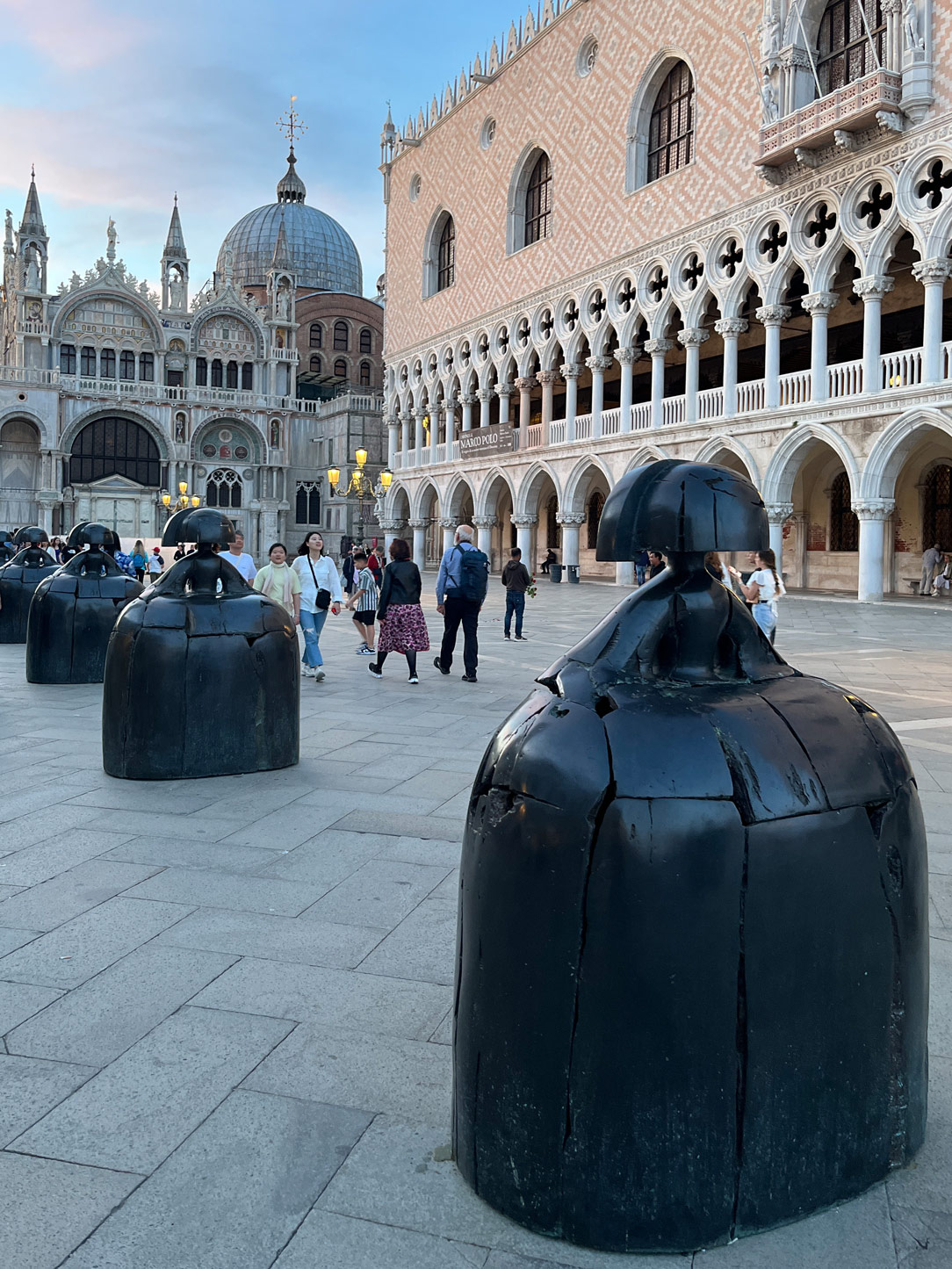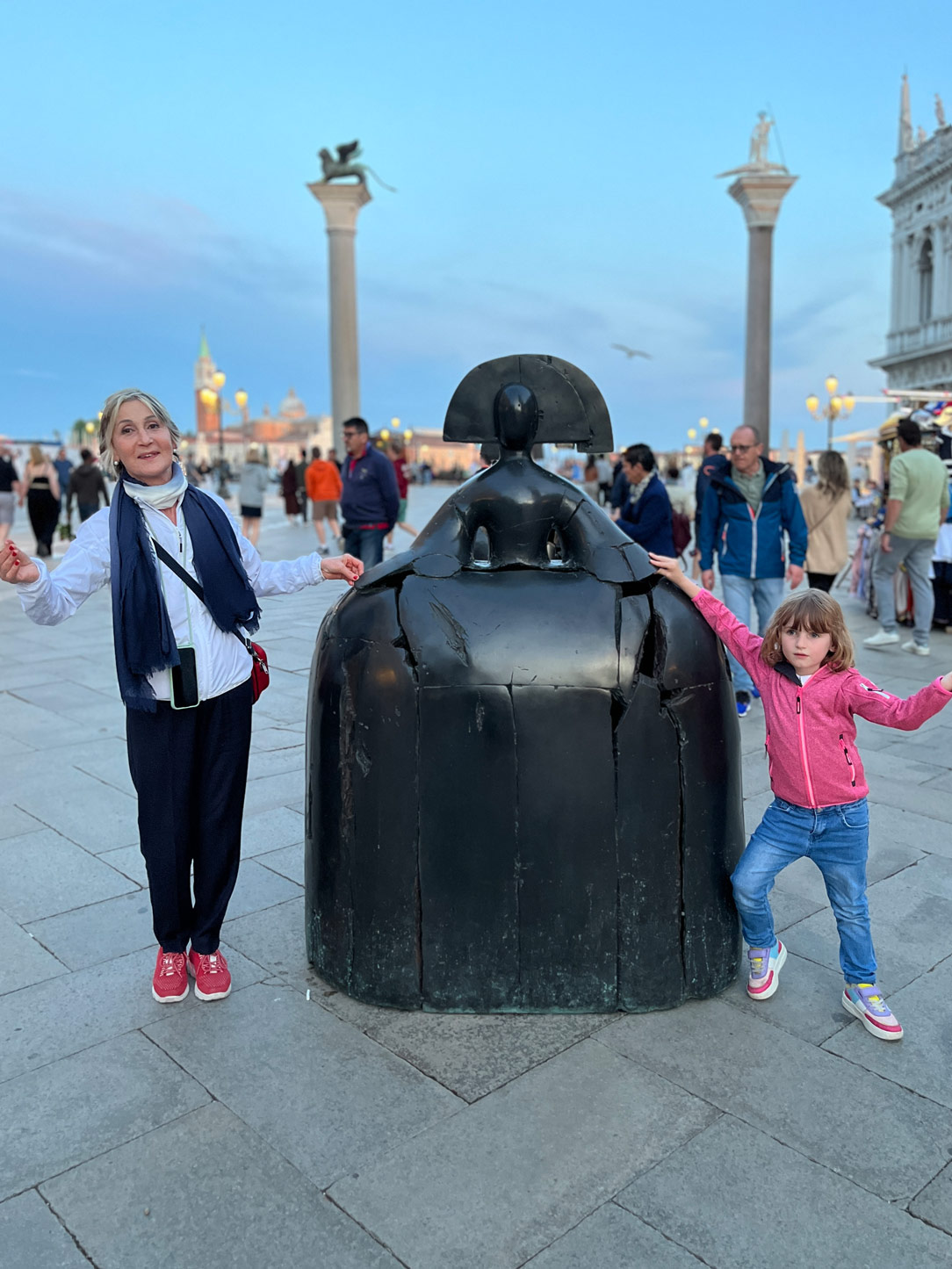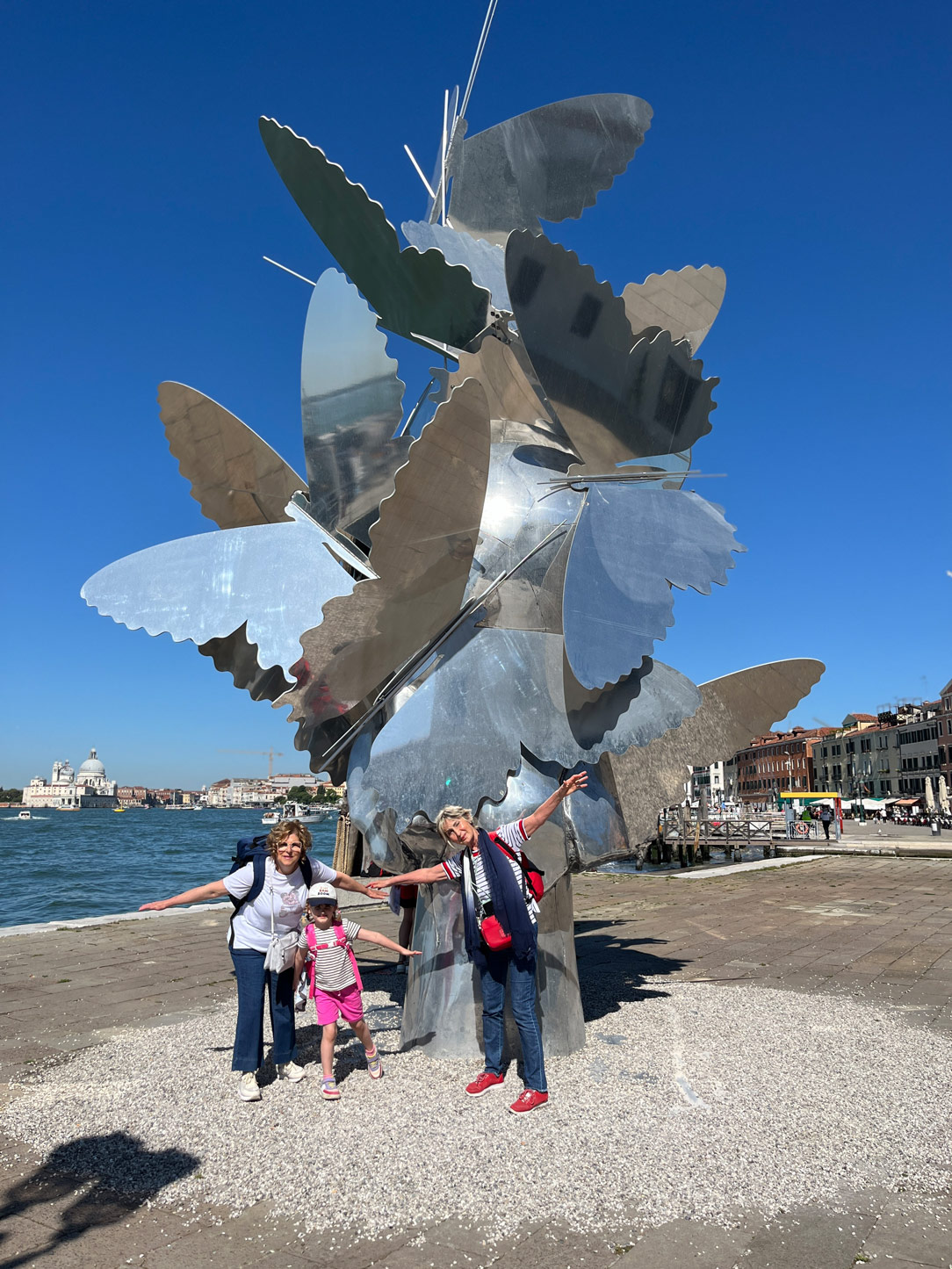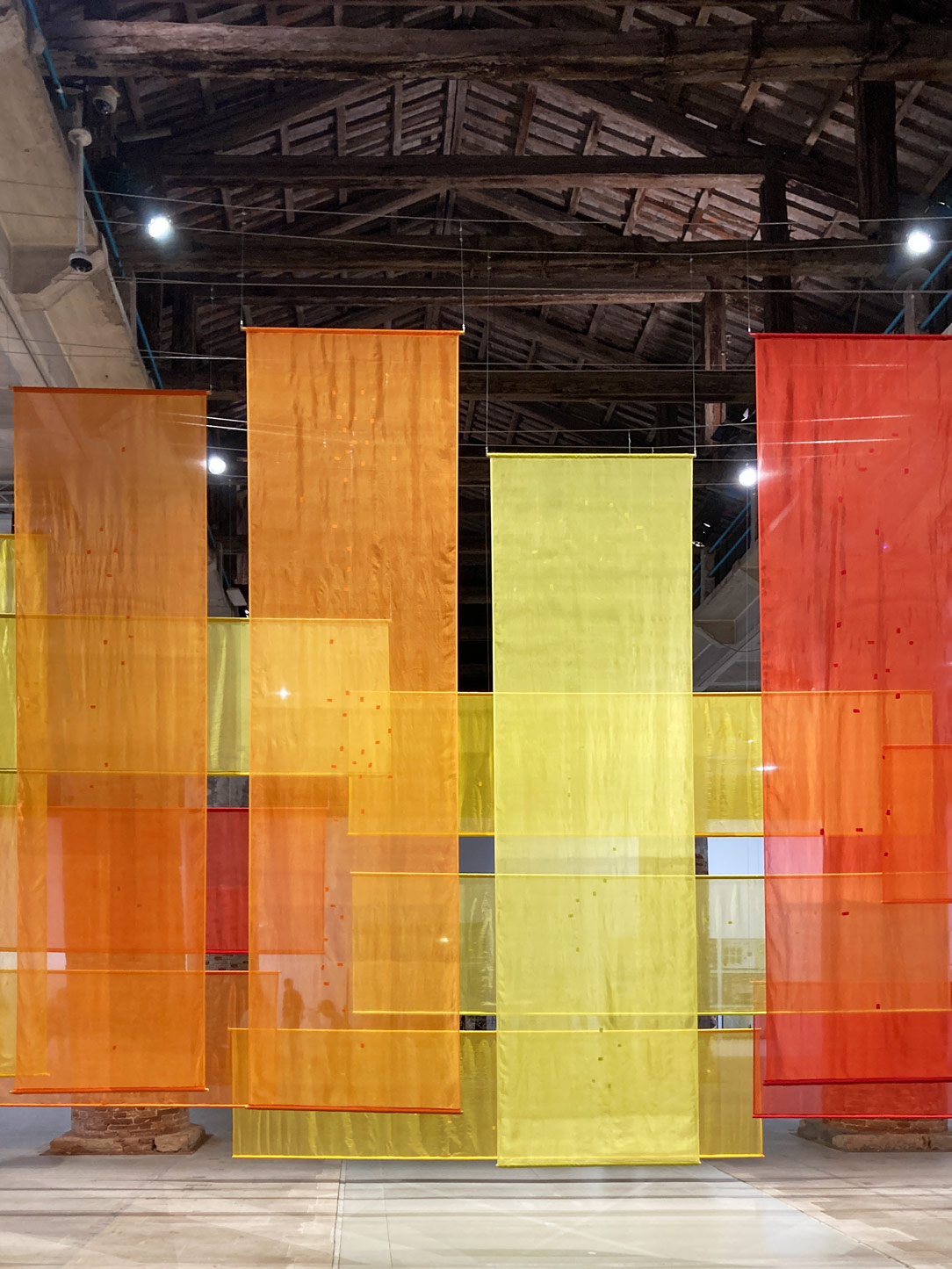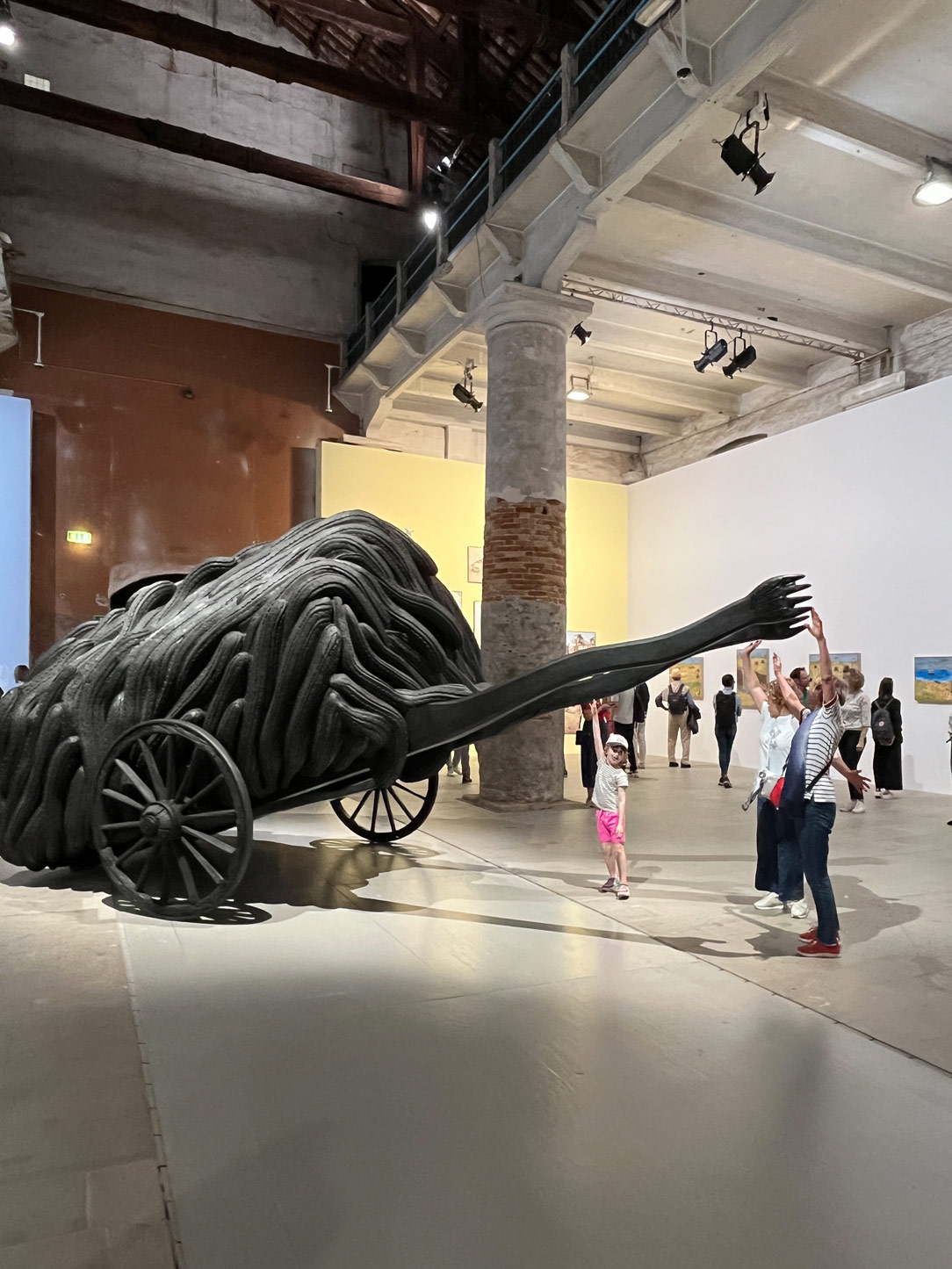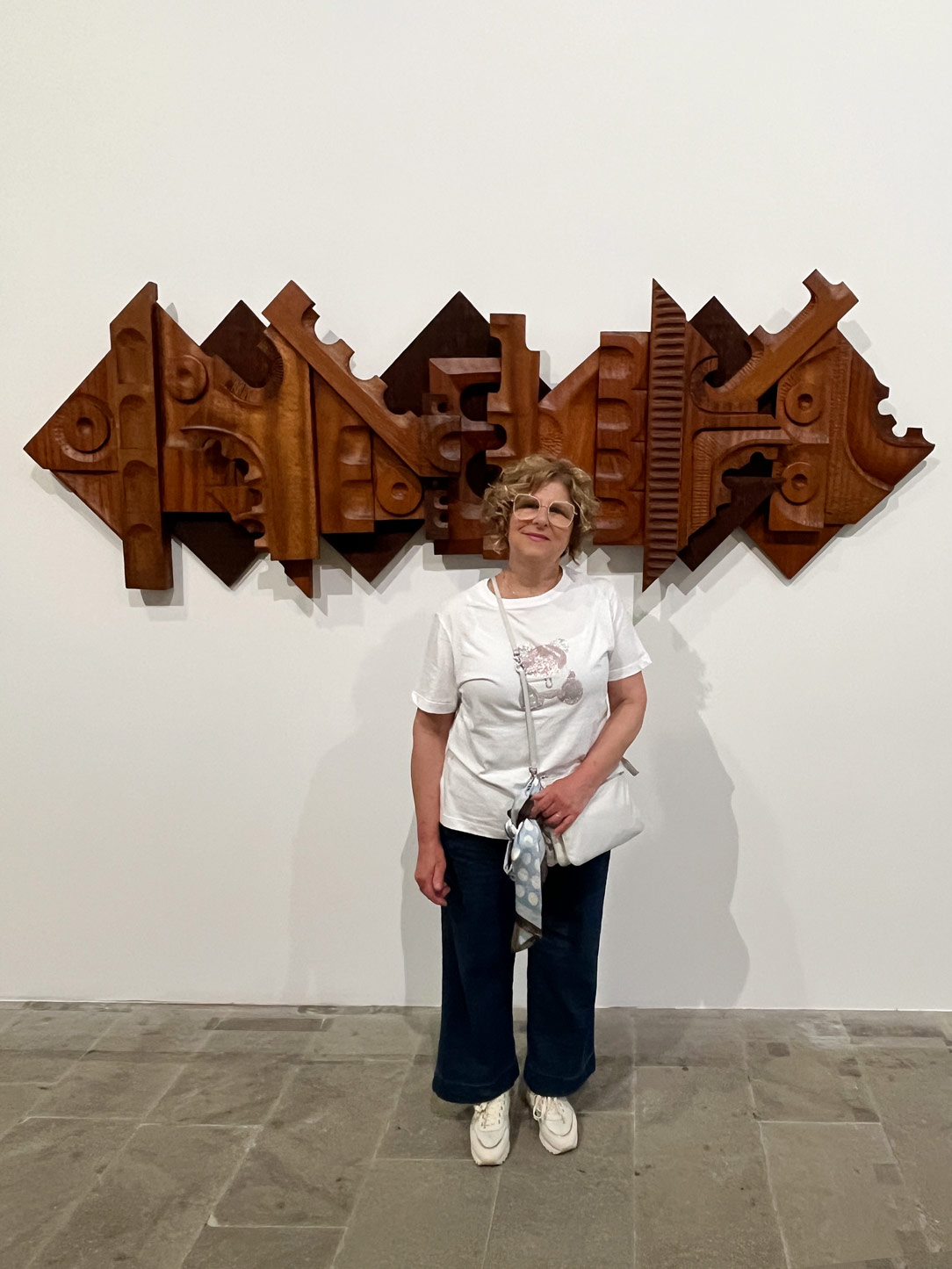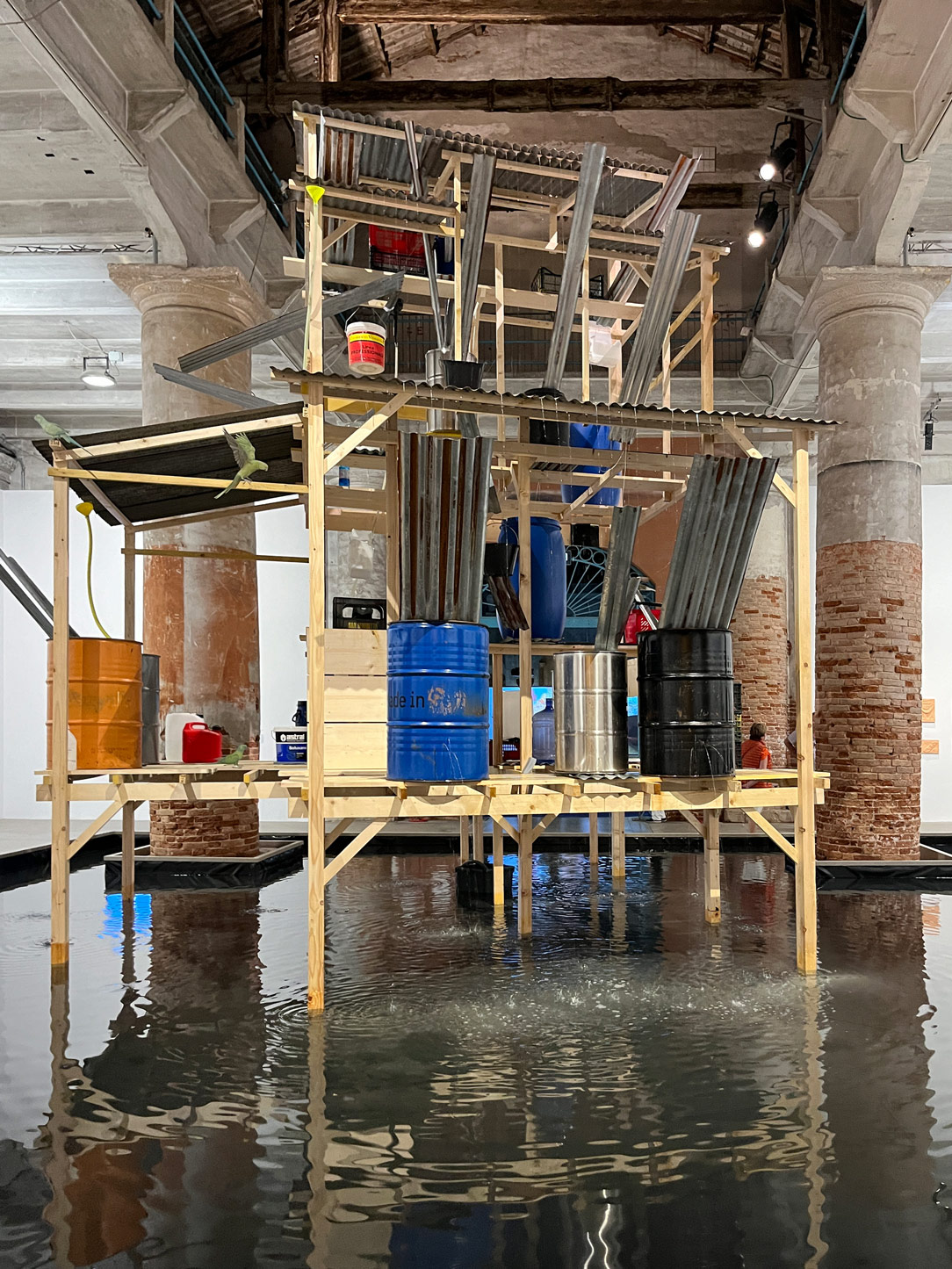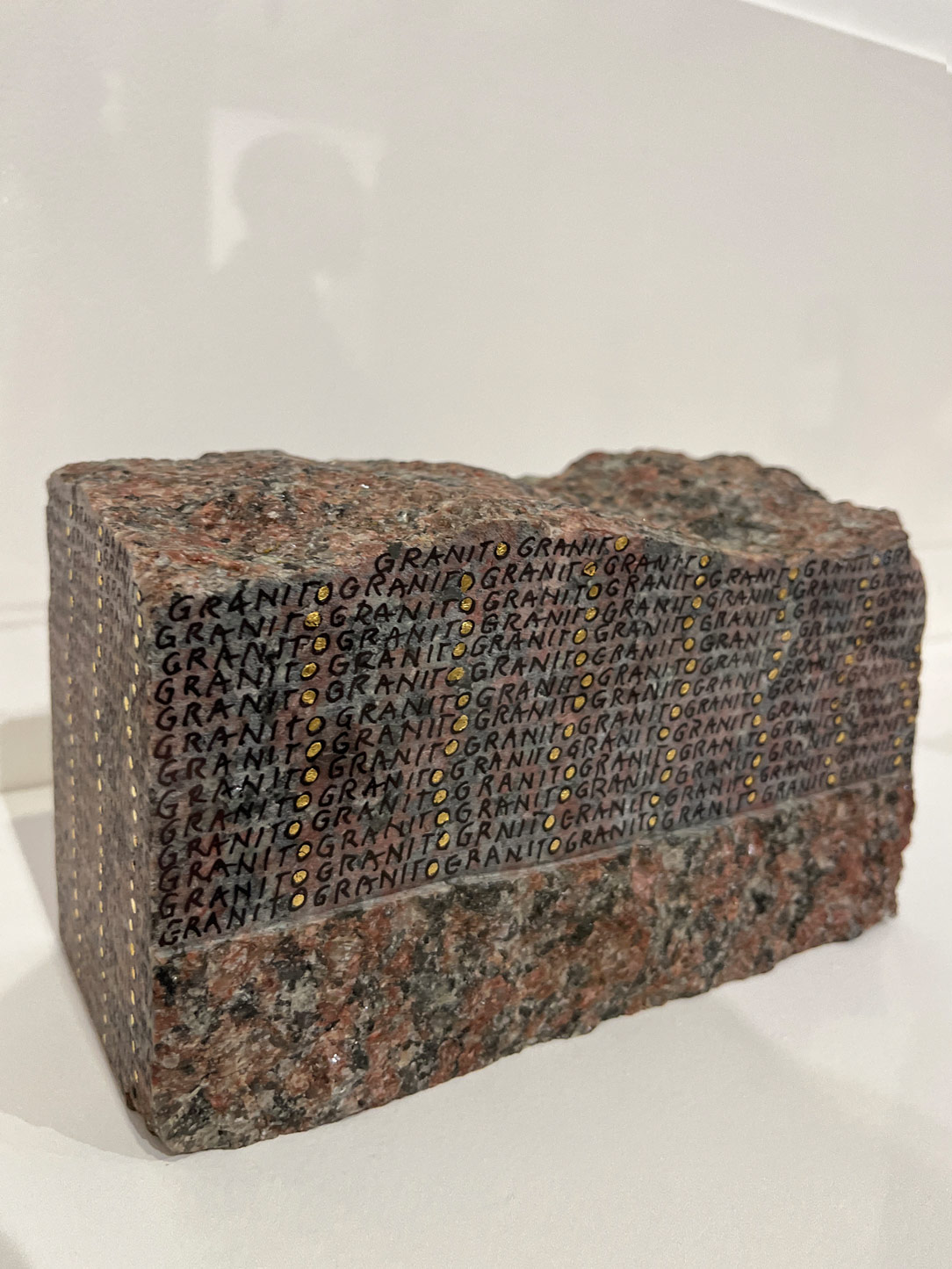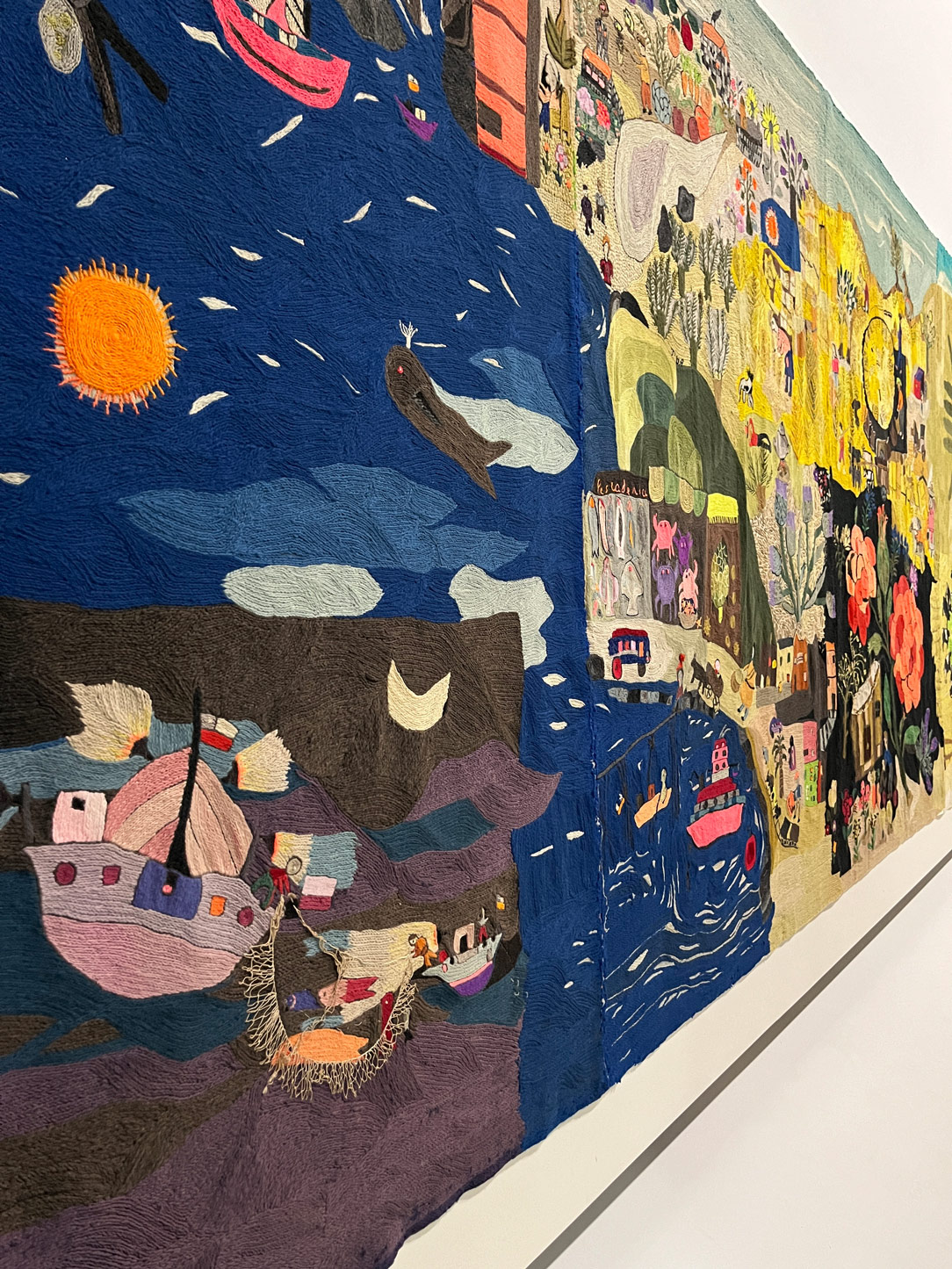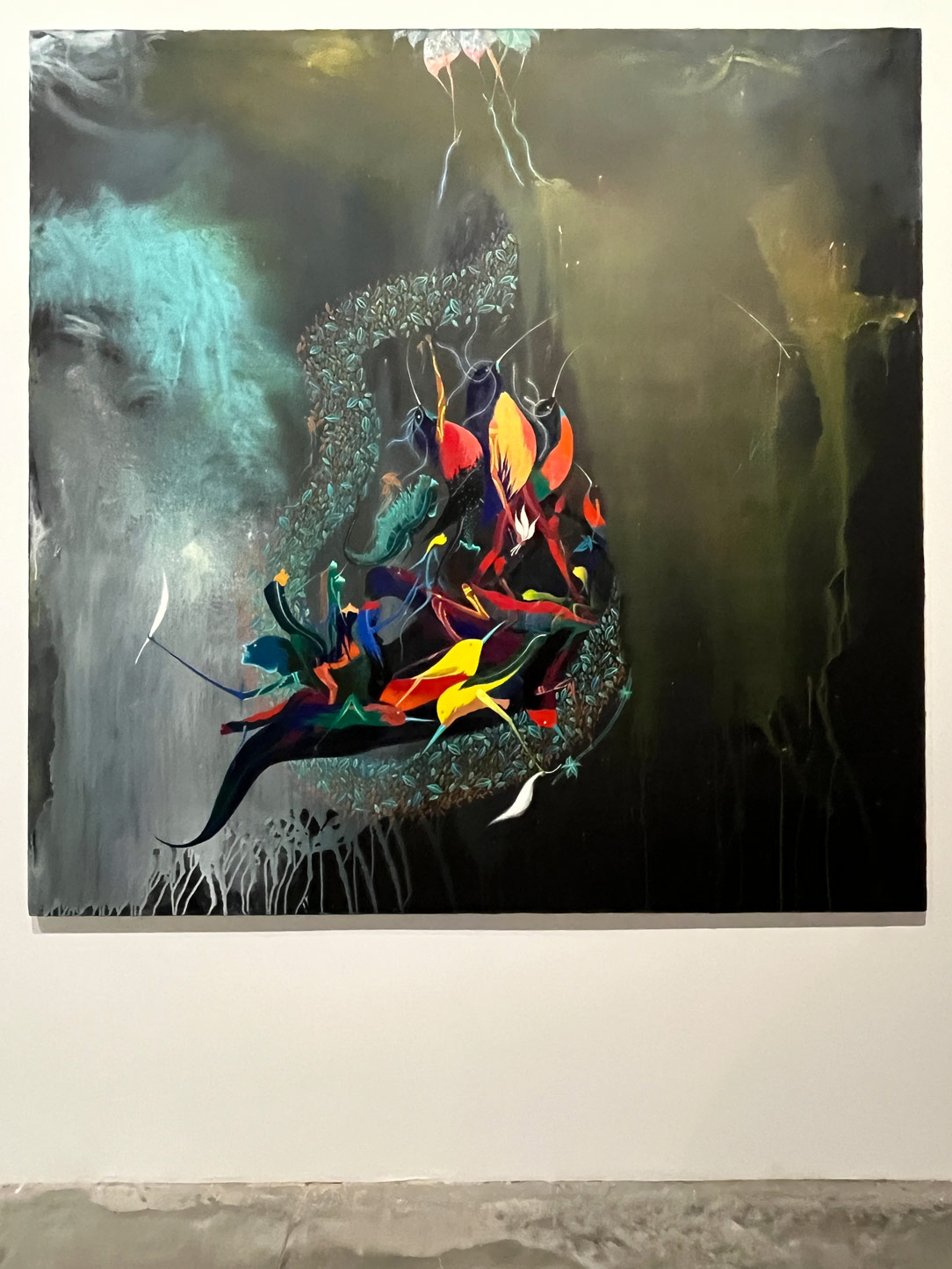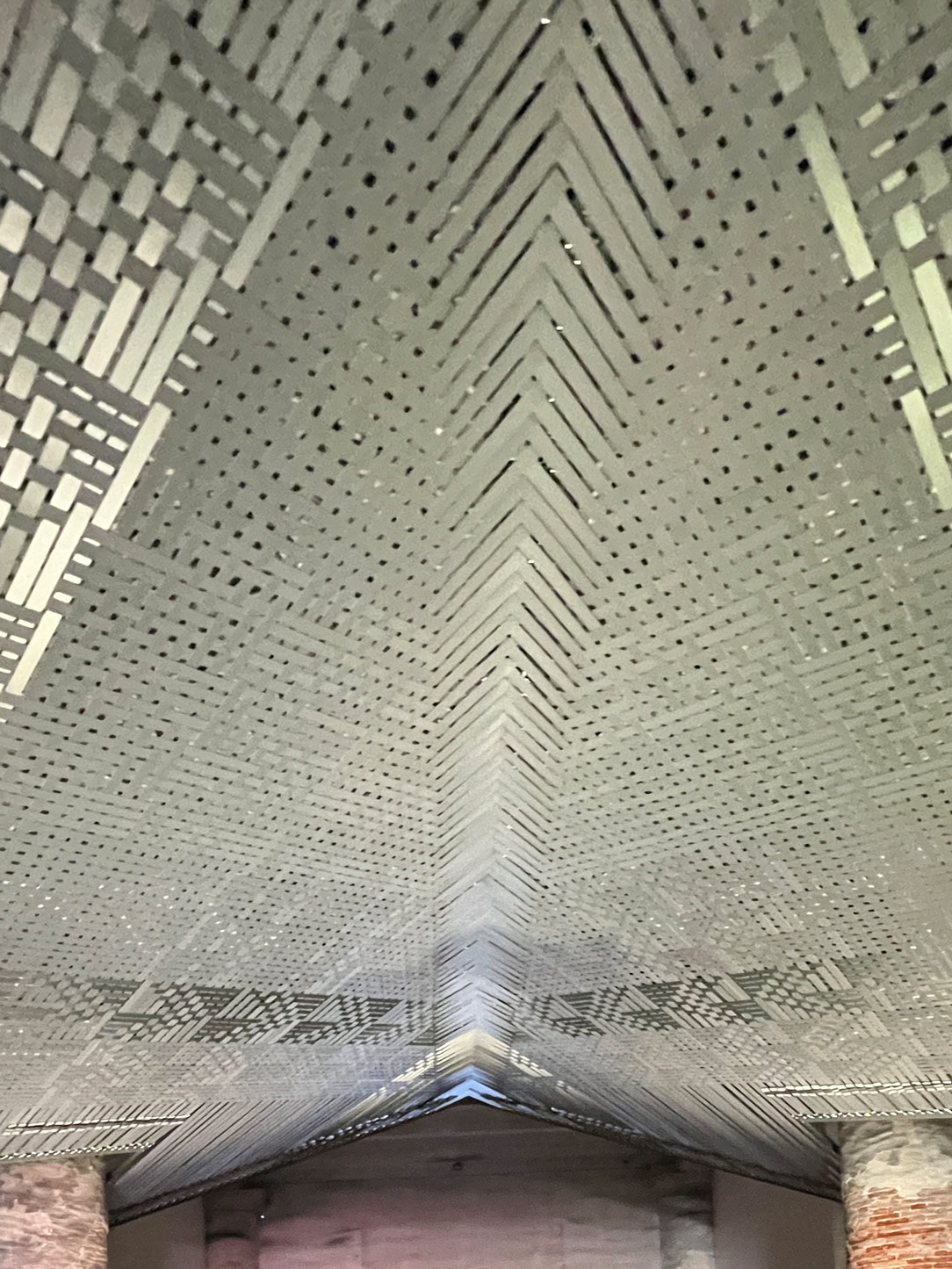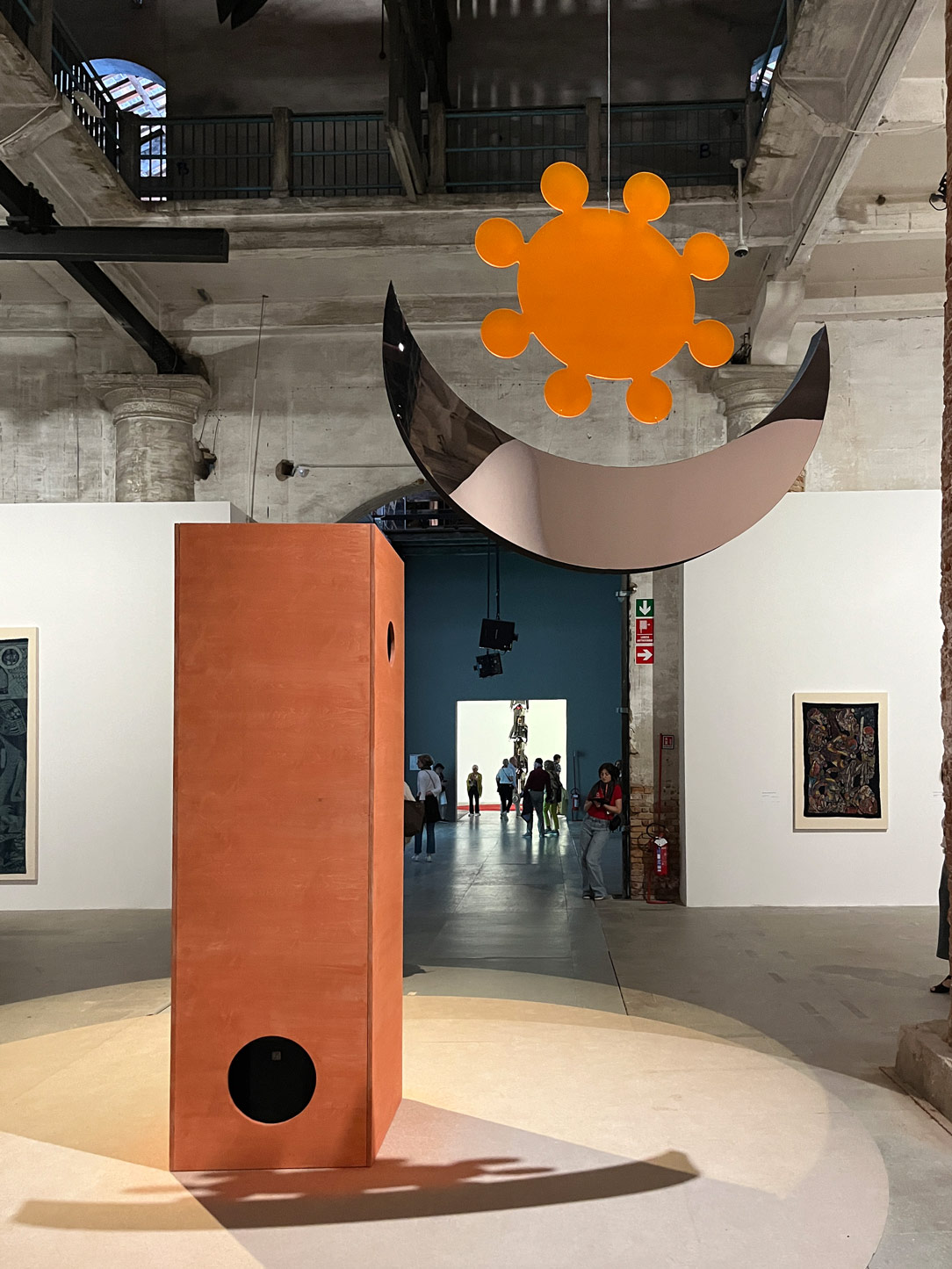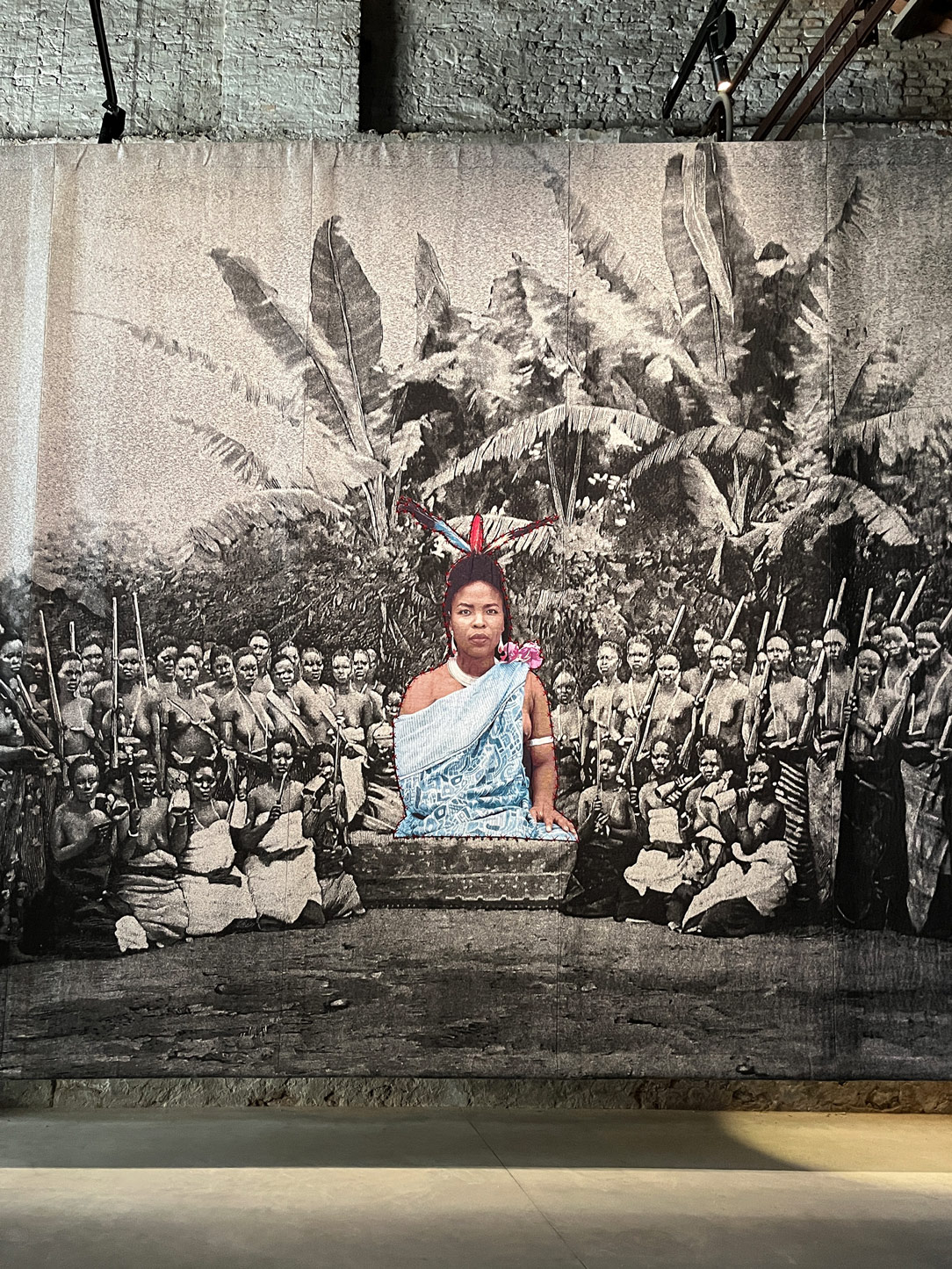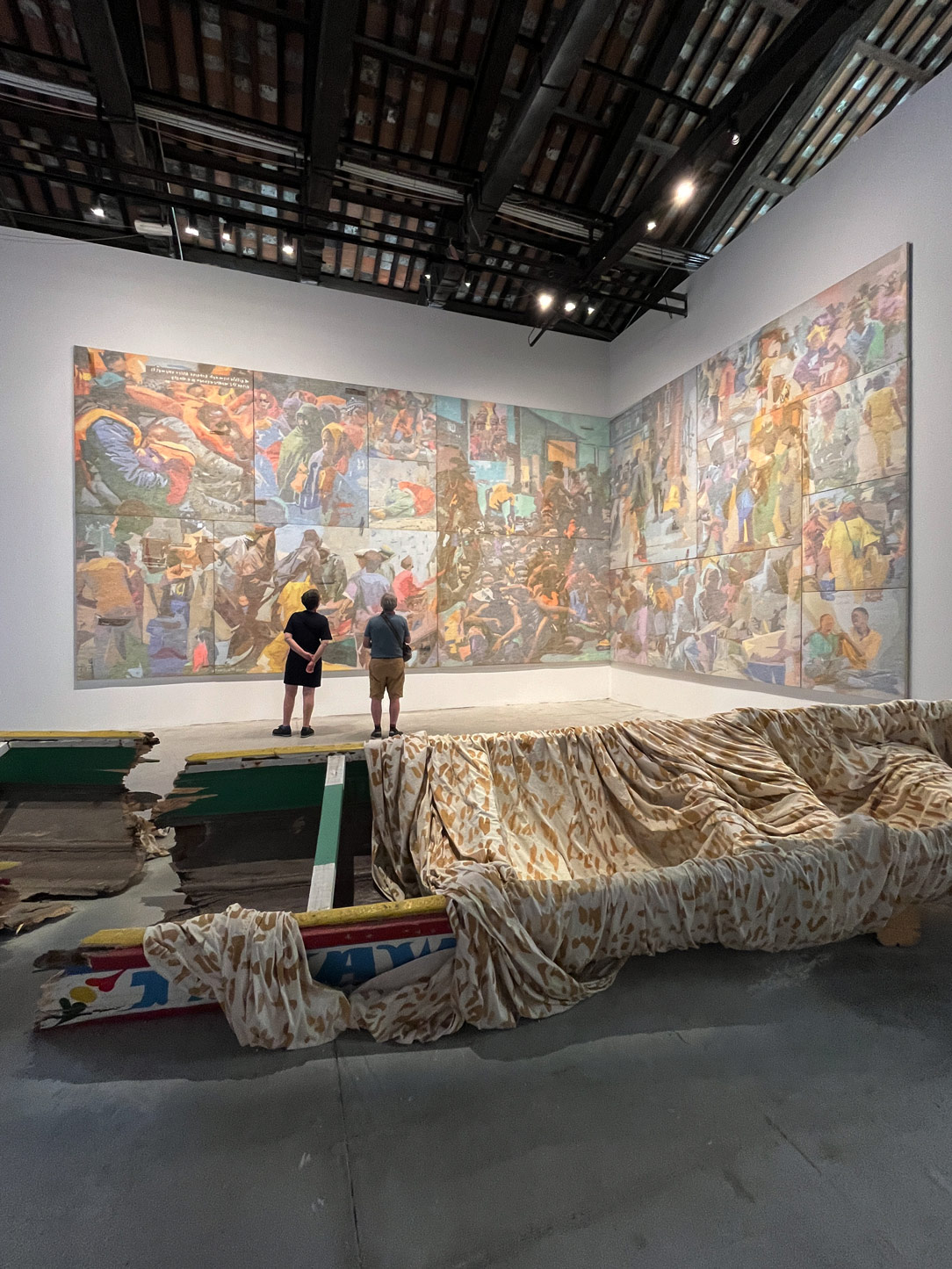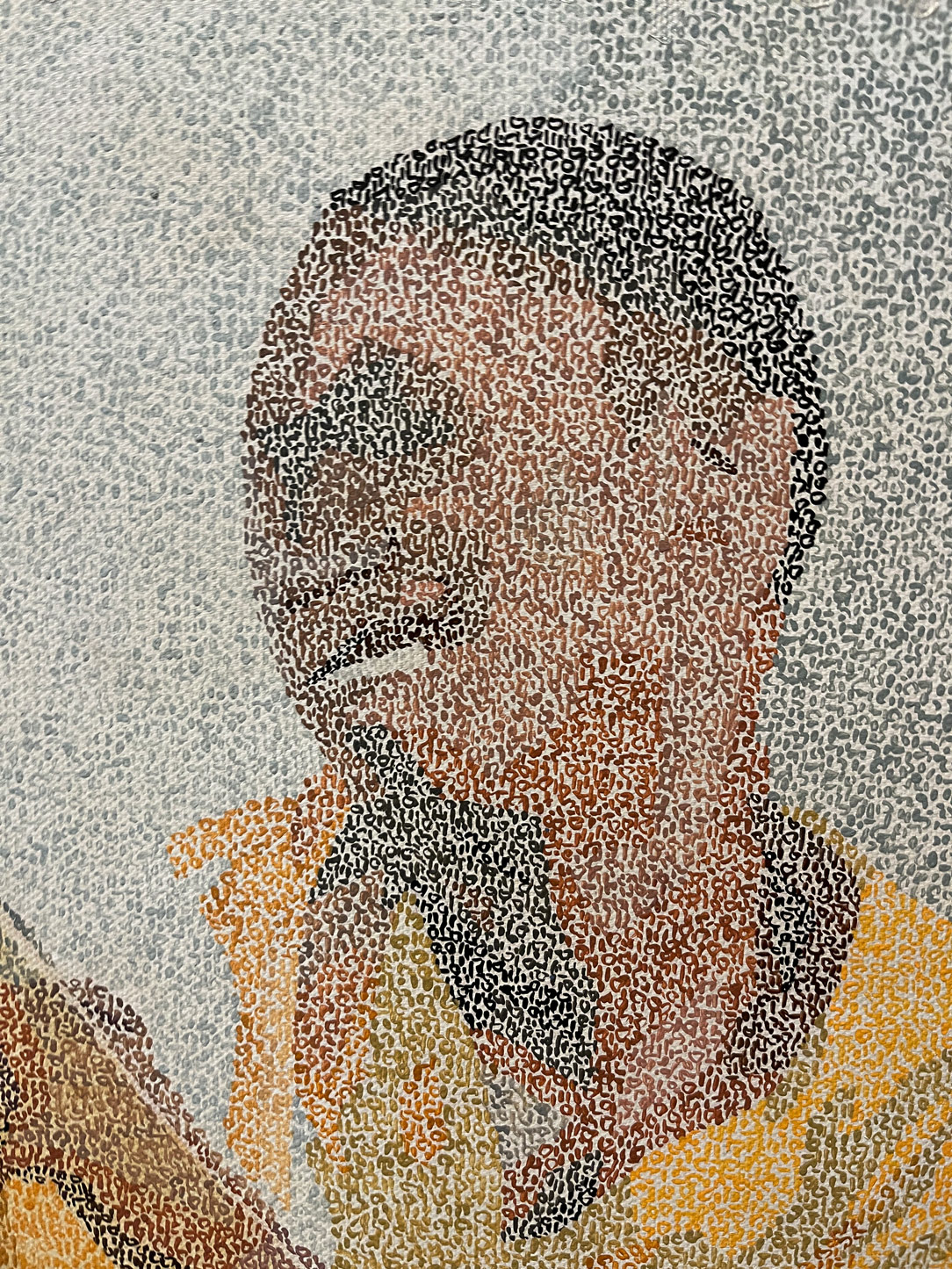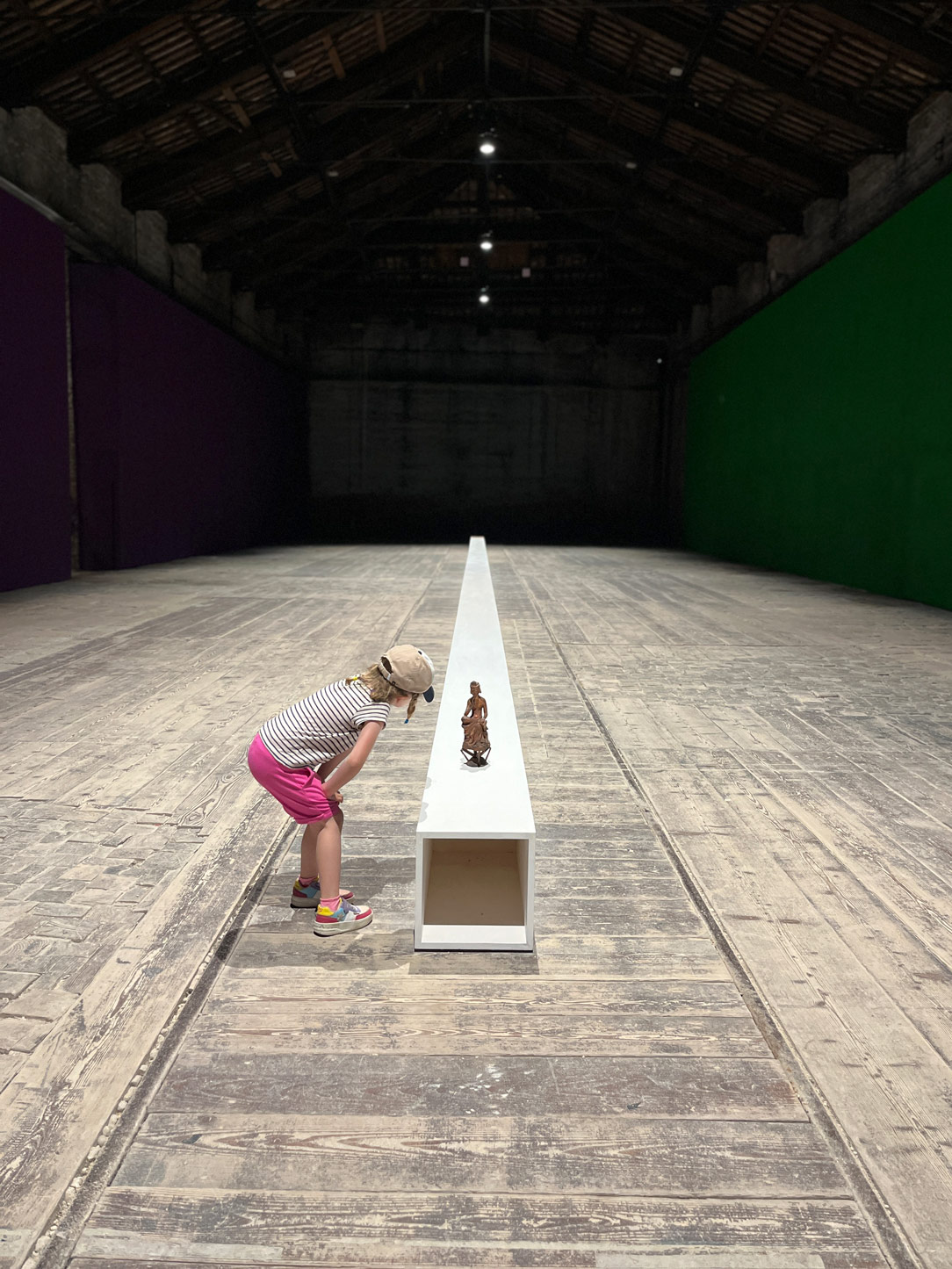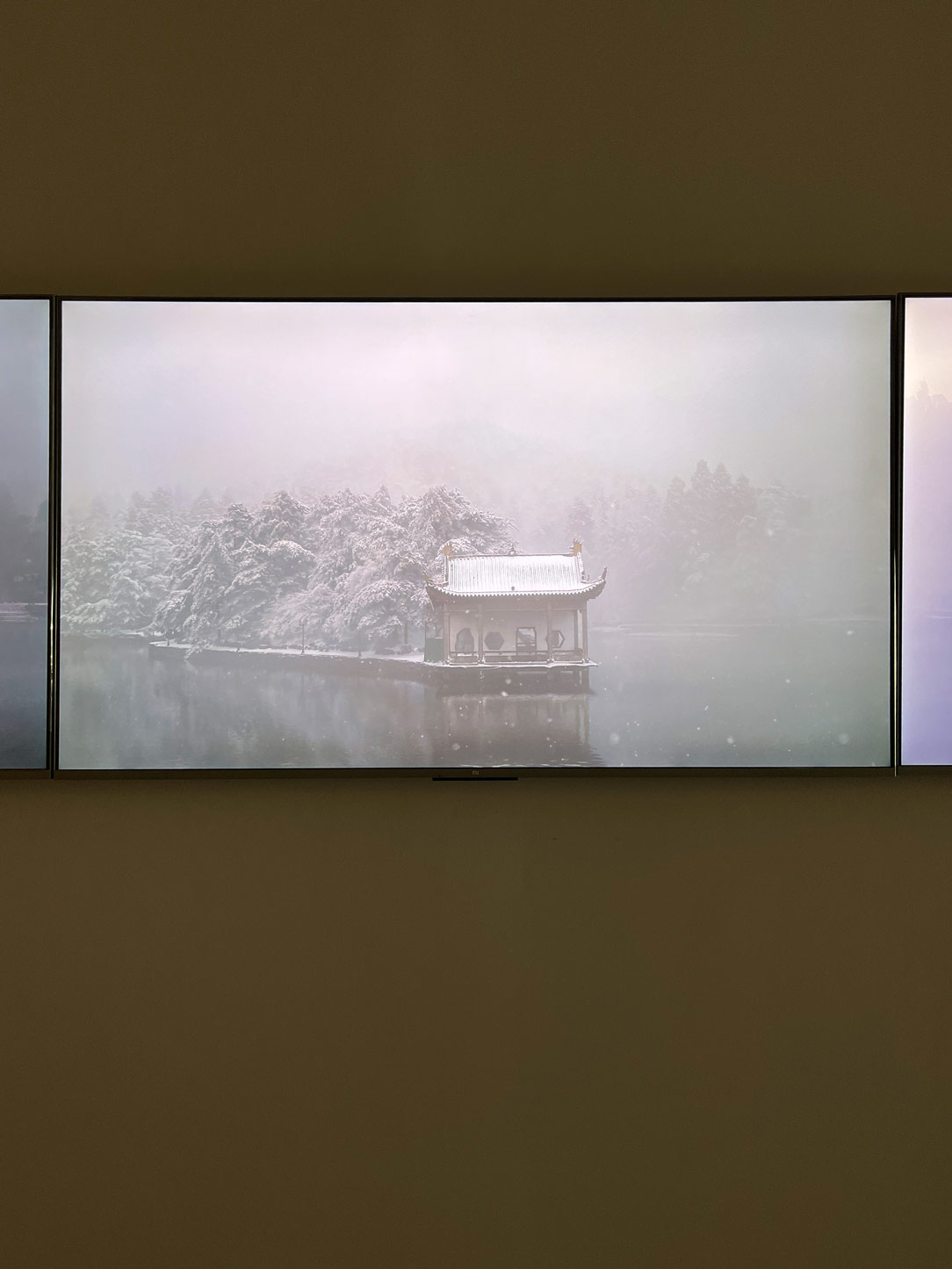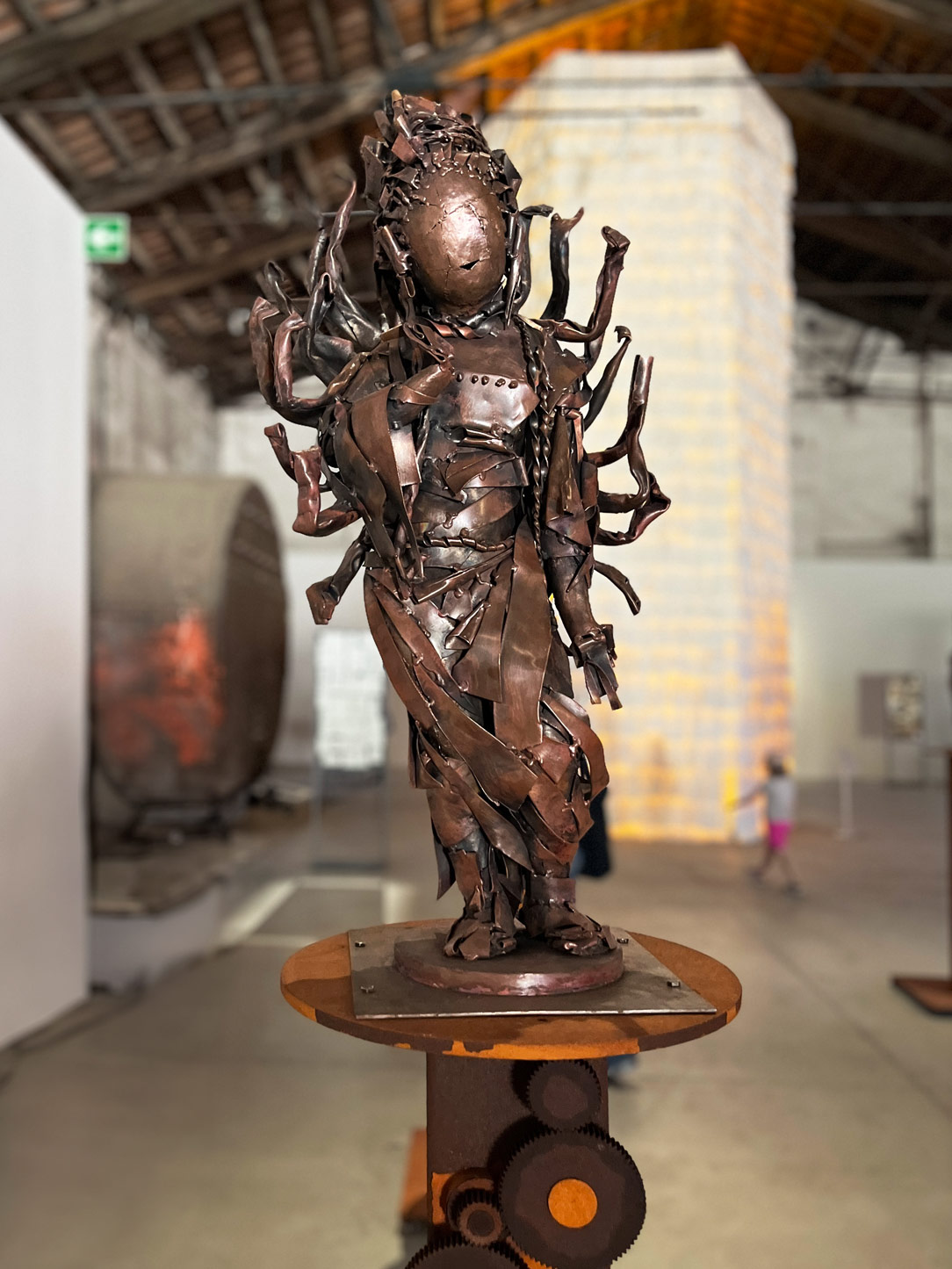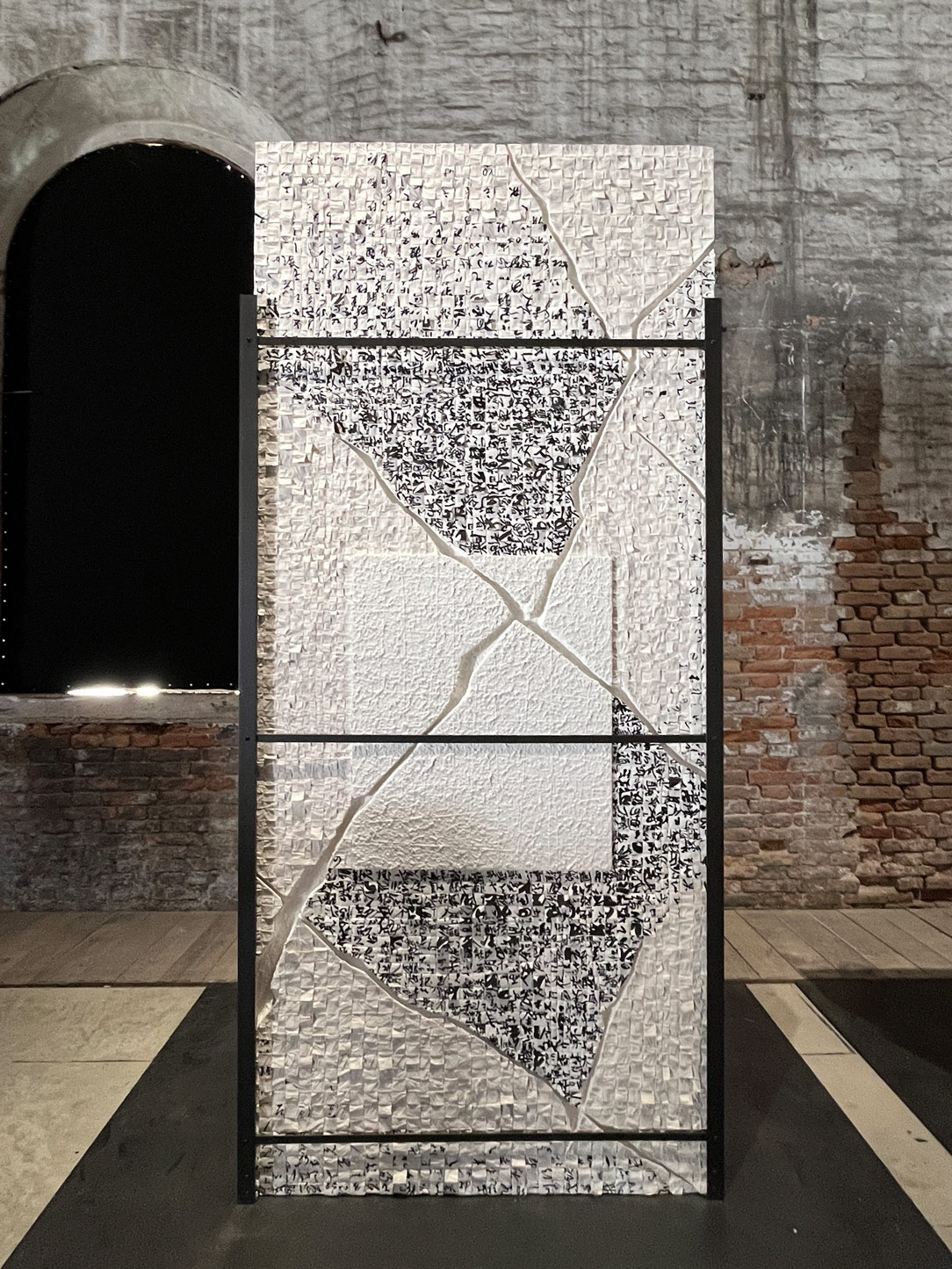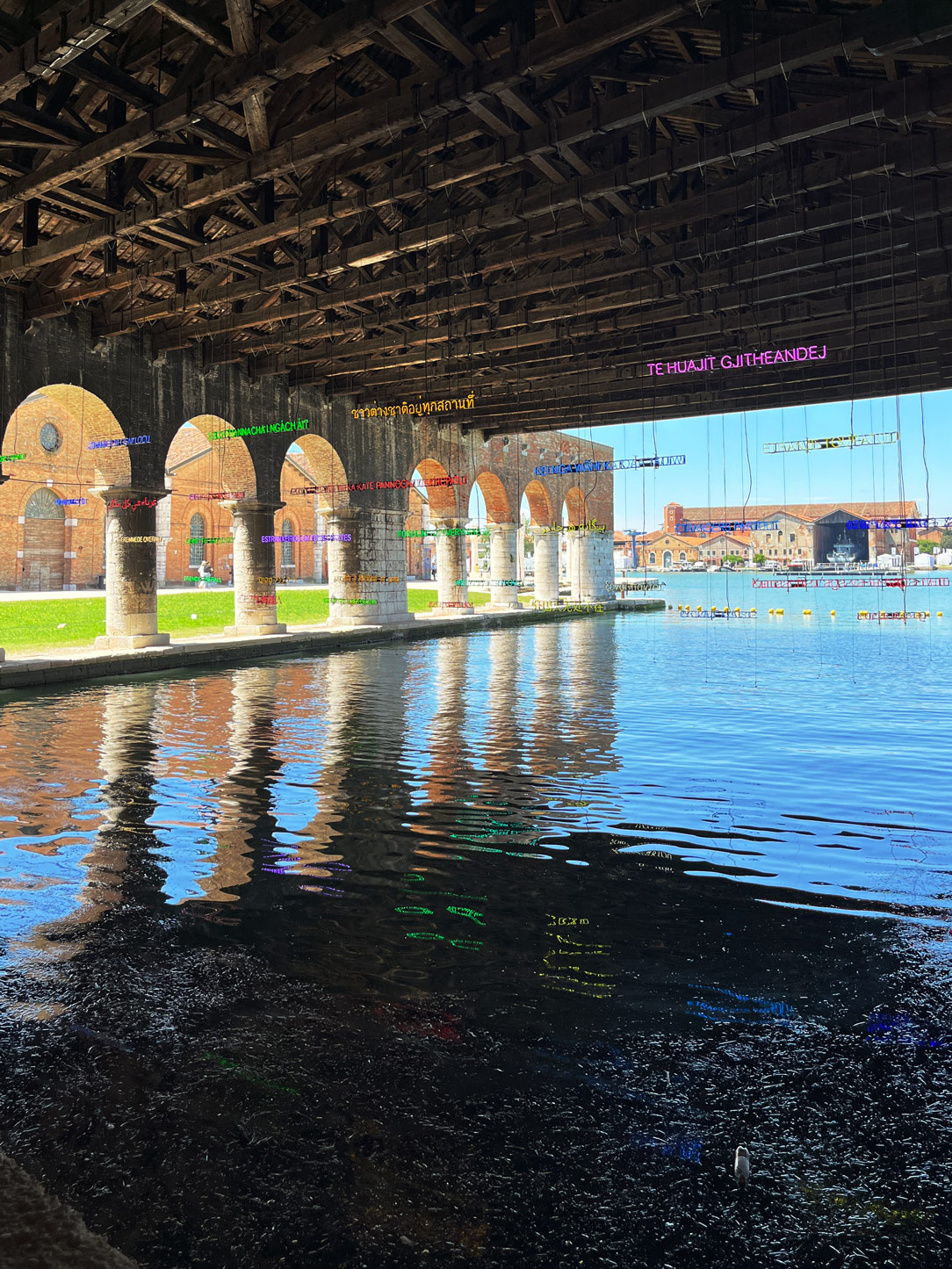Venice Biennale 2024 – 60 edition
VENICE ART BIENNALE 2024: Foreigns Everywhere
This year, I experienced the Venice Biennale in an entirely new way, accompanied by my little ones, Gaia and Emma, along with my mother Caroline, my long-time Biennale companion, and two other special companions: Fabio and Linda. It was surprising to see how much my 4- and 6-year-old girls enjoyed exploring the installations and visiting the numerous pavilions—29 at the Giardini and 1,800 square meters of exhibition space at the Arsenale. I’ve never missed an edition of the Biennale since I was born, and discovering that this passion now involves the new generations of my family was a moment of great joy.
“Foreigners Everywhere”: The Theme of the 60th International Art Exhibition
This year’s theme, Foreigners Everywhere, is inspired by a series of works by the collective Claire Fontaine, created since 2004, in which neon sculptures in various colors display the same phrase in different languages. This message, later echoed by numerous artists as a critique against racism and xenophobia in Italy, reflects a world marked by national borders and identities that often create disparities based on language, traditions, race, and gender. The word “foreigner” is etymologically linked to “strange,” suggesting something different and unknown. The expression “foreigners everywhere” implies not only that one encounters “foreigners” wherever they go, but also that each of us is a “foreigner” to someone else.
This theme is particularly significant in Venice, a city historically inhabited by refugees from various urban centers of the Roman Empire, which became an important center of commercial exchange in the Mediterranean and the capital of the Republic of Venice. Here, foreigners are a constant presence, reflecting the very cosmopolitan nature of the city. Similarly, many of the artists featured in this Biennale were chosen for their status as outsiders, often isolated or coming from indigenous cultures, occupying marginal positions in the contemporary art world.
Our First Day at the Giardini in Venice
As per tradition, we dedicated the first day to visiting the Pavilions at the Giardini, which host some of the most significant works of the exhibition. Here are some of our favorites…
1. Spain
The Spain Pavilion, featuring the installation Pinacoteca Migrante by artist Sandra Gamarra Heshiki, subverts the Western concept of a museum, highlighting often overlooked stories and narratives, particularly those of migrants, both human and vegetal, forced to travel between continents.
The installation is organized into five rooms, each dedicated to classical painting genres like landscape, still life, scientific illustration, and portraiture. These genres, usually perceived as neutral, are reinterpreted to show how they served to construct political narratives that legitimized colonization and Western cultural supremacy. The work highlights the devastating consequences of irresponsible resource management, contrasted with the sustainable practices of indigenous peoples.
A central element of the installation is the “Migrant Garden,” a space where visitors can walk among plexiglass figures and admire pairs of painted monuments that, while not located in Spain, are part of the heritage of the former Spanish colonies. This garden offers a “counter-narrative” that tells the stories of those who made these lands their home, emphasizing the cultural richness brought by migrations.
The thematic division of the rooms makes the visit engaging, offering a path that stimulates reflection on immigration, history, and identity. The artist’s meticulous historical research is reflected in the depth of the themes addressed, making the Spain Pavilion an educational and touching experience.
2. Belgium
The Belgium Pavilion presents an innovative installation by the artistic collective composed of Denicolai & Provoost, Antoinette Jattiot, Nord, and Speculoos. This group of artists merges art, architecture, typography, and cartography to create an exhibition that challenges traditional formats through a chapter-based narrative.
The main work, titled Petit Coat Government, brings together seven folkloric giants from various communities in the Basque Country, Belgium, France, and Spain. These giants are placed atop a large printing mechanism, symbolizing the power of their communities of origin and their cultural heritage. When activated, the printing mechanism produces bright fuchsia gazettes that disseminate the stories and knowledge of these communities, promoting empowerment and a sense of belonging.
The installation’s manifesto narrates that these giants participated in a festive picnic on Lake Resia, danced in the printing house of the Gazzetta di Padova, and will now remain at the Biennale for seven months and seven days before continuing their journey. This artistic project reflects on the theme of transcending physical and symbolic boundaries and questions the dynamics of collective artistic organizations, encouraging reflection on how these structures can be reimagined in a contemporary context.
3. Netherlands
The Netherlands Pavilion showcases the works of the Cercle d’Art des Travailleurs de Plantation Congolaise (Congolese Plantation Workers Art Circle), a group of Congolese artists working in Lusanga, in the Democratic Republic of Congo. This collective operates within a plantation owned by the multinational corporation Unilever, which has been accused of exploiting Congo’s natural and human resources, contributing to poverty and the destruction of local biodiversity.
For the Biennale, the group has created new works using materials like clay, palm oil, and cocoa, which are also the main products cultivated on the plantations. Their sculptures depict workers, animals, and cocoa plantations, symbolizing the connection between past and present and the complex relationship between exploitation and culture.
The aim of this exhibition is to envision a future where injustices are transformed into solutions. The artists hope that their work and the products of their plantations can help reclaim confiscated lands, promoting peaceful coexistence between humans and nature. This vision suggests a world where sustainable practices and respect for the environment lead to a more just and balanced society.
4. Italy
As in every Biennale, the Italy Pavilion hosts artists from all around the world, while the main Italian installation is located in the Arsenale pavilion. Here, in the central pavilion of the Giardini, which is adorned on the outside with colorful and multifaceted designs, we find some of these artists on display.
Nil Yalter
Immersed in activism and feminism from a young age, Nil Yalter is celebrated globally for her contributions to art. In the Contemporary Nucleus, two of her iconic works on the theme of migration are on display: Topak Ev, which references the tents of the Bektik nomadic community of Central Anatolia, and Exile is a Hard Job, inspired by Turkish poet Nâzım Hikmet. This piece includes videos and posters documenting the lives of immigrants and exiles. This year, Yalter was awarded the Golden Lion for Lifetime Achievement, marking her first appearance at the Venice Art Biennale.
Ione Saldanha
Renowned for her energetic and distinctive use of color, Ione Saldanha presents her Bambus from the 1960s, a work that challenges the boundaries between artistic languages. Through a lengthy process of preparing and coloring bamboo, these pieces invite us to experience color in a dynamic and playfully interactive way. The Bambus, suspended from the ceiling and in motion, combine sculpture and painting in an organic fusion.
Victor Fotso Nyie
Victor Fotso Nyie is a contemporary artist specializing in figurative sculptures that blend African tradition with elements of science fiction. His clay figures, subjected to complex firing processes, incorporate biographical and Pan-African cultural elements, resulting in works that oscillate between dreamlike and unsettling. His sculptures reflect the sense of uprootedness experienced by artists living in Europe.
Nedda Guidi
Nedda Guidi dedicates herself to alchemy in her art, creating delicate sculptures as thin as paper that evoke curved and bodily volumes. Emphasizing modularity and moving away from traditional glazes, Guidi explores the combination of natural oxides with clay to rediscover a lost innocence and the originality of the material.
5. Finland
The Finnish Pavilion presents The Pleasures We Choose, an exhibition featuring artists Pia Lindman, Vidha Saumya, and Jenni-Juulia Wallinheimo-Heimonen. The works by these artists reflect their personal experiences and address issues related to environmental and social imbalances. The exhibition introduces a concept of “architecture of access,” aimed at making art accessible to all by considering various physical and sensory needs of visitors.
The artists use a range of materials and techniques, including embroidery, to create multisensory works. One of the most intriguing installations is a sculpture resembling a giant anteater, inside which visitors can shout and listen, providing a unique and immersive experience.
6. Hungary
Márton Nemes, representing the Hungarian Pavilion, draws inspiration from the techno subculture for his works. His paintings and installations, characterized by explosions of color and abstract elements, evoke the psychedelic atmosphere of nightclub lights. Nemes combines pictorial and sculptural elements to create a hypnotic visual experience that transports the viewer from a harsh reality to a world of vibrant and fluorescent colors.
The Tecno Zen project presents itself as an immersive environment reflecting on contemporary social polarizations, suggesting the need to find balance and serenity in a frantic world. His works invite the audience to escape oppressive situations through visual expressions, transforming the vibrations of techno music into an experience of calm and Zen introspection.
7. Brazil
The Brazilian Pavilion presents Ka’a Pûera, an installation that explores the duality of the term, which means both “cultivation field” and “bird camouflaged in nature.” This duality is essential to understanding the concept of Hãhãwpuá (broad ancestral territory), a theme that connects indigenous culture with the struggle for resistance in Brazil. The works by Glicéria Tupinambá, Olinda Tupinambá, Ziel Karapotó, and the Tupinambá community of Serra do Padeiro and Olivença in Bahia narrate stories of resistance and identity.
The installation includes a combination of bullets and maracas, symbolizing the tension between violence and indigenous culture. It represents the resistance of Brazilian indigenous peoples, who, like the Ka’a Pûera, continue to fight for their land and traditions, walking through the rejuvenating forests.
10. Egypt
Wael Shawky, representing the Egyptian Pavilion, explores themes of national and religious identity through various media, including film, sculpture, performance, and drawing. His work is deeply rooted in a profound engagement with Arab history and cultural heritage, offering a critical reinterpretation of historical events. Drama 1882 is an installation that reflects on the 1882 Egyptian revolt against British imperial rule.
Set in a legendary Alexandria theater with a stage reminiscent of Dadaism, this epic musical in eight acts uses actors to recount the dramatic events leading up to the historic battle of that summer. Shawky employs this narrative to provoke critical reflection on historical revisionism and the futility of war, providing a fresh perspective on a pivotal period in Egyptian history.
11. Venice Pavilion
The Venice Pavilion offers an exploration that is not geographical, linguistic, or social, but rather emotional and sentimental, focusing on the search for oneself and emotional completeness. The exhibition centers on the feeling of being at home, a concept that transcends physical space and embraces the places where we feel free to be ourselves. Sestante Domestico is an installation that serves as a tool for exploration through maps of the sky, earth, history, nature, and love. The work suggests that with love, any place can be transformed into a home, no matter where it is.
13. Australia
Archie Moore, representing the Australian Pavilion, presents kith and kin, a work that both honors and serves as a reminder of the reality faced by Australia’s First Nations peoples, among the world’s oldest living cultures. The piece is a vast genealogical tree that unfolds across the internal walls of the pavilion, tracing the artist’s personal history from close relatives to distant connections, and also addressing general and racist expressions. This family tree spans over 65,000 years of history and interconnections. At the center of the pavilion, a contemplative pool occupies the space, surrounded by a void of black ink, serving as a memorial for the hundreds of First Nations Australians who died in state custody. This installation not only celebrates the long history of Australia’s First Peoples but also reflects on their ongoing struggle and resilience.
15. United States
The United States Pavilion, with its installation The Space in Which to Place Me, transforms into a vibrant and colorful world that conveys a deeply inclusive vision for the future. This space centers Indigenous art and a wide array of cultural expressions and identities at the heart of the human experience. Interdisciplinary artist Jeffrey Gibson employs a hybrid visual language that draws from American, Indigenous, and queer histories, incorporating references to popular subcultures, literature, and global artistic traditions. Gibson illustrates how taste, notions of authenticity, and persistent stereotypes are used to delegitimize cultural expressions outside of the dominant culture. The use of fabrics, beads, and geometric and abstract textures evokes Indigenous traditions, creating a rich and engaging visual experience.
16. Nordic Countries
The Altersea Opera is an audiovisual installation that delves into the existential implications of displacement and belonging through an epic maritime quest. Set in a vast ocean under a gray sky, an aquatic and terrestrial creature prays to the sea goddess Ma-Zhou and accidentally summons a dragon boat, leading it on a journey beyond time and space. Created by artist Lap-See Lam in collaboration with experimental composer Tze Yeung Ho and textile artist Kholod Hawash, this work both claims and complicates the notion of cultural heritage. The installation blends storytelling, music, and textile art to craft an immersive experience that encourages the audience to reflect on their own identity and sense of belonging in an ever-changing world.
17. Czech Republic
The exhibition The Heart of Agra Effe traces the history of the giraffe Lenka, captured in Kenya in 1954 and brought to Prague Zoo, where she lived only two years before dying in captivity. After her death, Lenka’s body was donated to the national museum, where it was displayed until 2000, when her internal organs were disposed of in the public sewer system, and only her skin was preserved. This collaborative project reimagines Lenka’s story as a poetic and corporeal encounter between the public, the artists, and the institutions, critiquing the violent and hierarchical practices with which we treat animals. The installation offers various modes of engagement, where care, imagination, and emotion are as important as historical narrative. It includes various models of the giraffe’s body parts and large tubes that allow visitors to explore the interior of Lenka’s body. This space invites reflection on our relationship with the natural world, challenging preconceived notions of identity, borders, and nations.
19. United Kingdom
The UK Pavilion made a strong impression, encapsulated by the phrase: “I have a water that sleeps at the bottom of every memory.” John Akomfrah, artist and filmmaker, explores themes such as memory, racial injustice, diaspora experiences, and climate change. His installation, titled Listening All Night to the Rain, transforms the building’s architecture to subvert and interrogate the relics and monuments of colonial history. The work reflects his interest in post-colonialism, ecology, and the politics of aesthetics, emphasizing listening as a form of activism.
Akomfrah uses water as a central theme, creating a connective fabric of visual and auditory narratives. Through representations of mist, haze, still and flowing water, streams, rivers, and rain, water becomes an omnipresent symbol. The exhibition explores non-linear historical narratives and collage, reflecting on how these stories connect and influence experiences in the UK.
20. Canada
Kapwani Kiwanga, a multidisciplinary artist, delves into various forms of power and how hidden histories influence everyday life. Under her intervention, the Canadian Pavilion becomes a transformative experience both inside and outside the building.
The installation primarily uses glass beads, historically employed as objects of exchange, to decorate and transform the space. These beads serve as testimonies to past transitions that have profoundly altered the socio-economic landscape. As visitors move through the pavilion’s spiraling architecture, they encounter multiple perspectives, with the glass beads evoking historical memory and change.
21. Germany
The German Pavilion presents a sci-fi vision of the present with an installation by Tear Sales that portrays the present as a transient and unstable place. For individuals whose lives are defined by migration, the present is seen as a threshold between the past and the future, featuring a strong spatial and physical component that reflects their multiple affiliations.
The German contribution explores this complex relationship between history and the future through three distinct scenarios: aCatastrophic Present: An environment that represents the sense of precariousness and uncertainty that defines our times, depicted as dark and oppressive. ATheatrical Cosmos: A fragmented narrative through performance and architecture that opens windows onto past decades, creating a dialogue between history and the future. ABridge to Another Place: Symbolically extends beyond the Biennale Gardens, suggesting a connection between the present and spaces and times outside the immediate context.
The works contrast with the monumental nature of the German Pavilion, highlighting the concept of passage and threshold. This approach emphasizes the importance of understanding the present not as an isolated moment but as a point of intersection between multiple temporalities and spaces.
22. Japan
The Japanese Pavilion at the Biennale explores the fragility and interconnectedness of life through Mohri’s installations, which utilize sounds, lights, movements, and scents to create an immersive and multisensory experience. Inspired by the phrase “Sunday We Will Evaporate Together,” the exhibition presents two ecosystems: one based on artificial water losses repaired with household objects, and the other on sounds and lights generated by the moisture from fruits that eventually wither, emitting the scent of decay. These works reflect the life cycle and the importance of human creativity in the face of global challenges, suggesting that even small gestures can lead to innovative solutions.
23. Russia – Bolivia
Historically friendly relations between Russia and Bolivia, with numerous past commercial and industrial projects, have led to the Russian Pavilion, which was closed at the previous Biennale, making way for Bolivian artists this year.
The exhibition, titled Qhip Nayra Uñtasis Sarnaqapxañani, is an expression of the Aymara people: “Looking to the Future Past, We Walk Forward.”
The idea is to explore the common origins with other Latin American countries and the shared aspirations through art, highlighting the concept of a plurinational state and its core values. The exhibition’s title reflects a sage view of time, where past and future are interconnected and enrich each other. The philosophy underlying the exhibition emphasizes that the keys to an emancipated and free future lie in the lessons of history and the memory passed down through generations, inviting viewers to keep an eye on the past while moving toward the future. The concept revolves around the circularity and harmony of existence, where all elements are interconnected.
We conclude today’s visit with Sol Calero’s site-specific installation, located at the heart of the Biennale Gardens. Embracing the concept of a national pavilion, Calero has cheerfully reinvented and presented her own, featuring a kaleidoscope of shapes and colors, with painted walls, geometric designs, sloping roofs, and curvilinear columns and terraces.
This work explores the representation of identity through immersive environments filled with colorful patterns and fabrics. Although she lives in Europe, Calero spent her childhood in Venezuela, and this background profoundly influences her work. The artist is particularly interested in exploring and analyzing the facets of Latin American culture and identity.
In front of Sol Calero’s installation is Verdy’s piece for Swatch. Originating from Japan, Verdy is recognized for his distinctive graphic work in Tokyo’s street scene. This creative force showcases his versatility with Vick Bronze, a 4-meter tall bronze-colored representation of his iconic panda-rabbit character, Vick. An Art Special Swatch watch recreates this artwork to wear on your wrist at all times
Here others installation that we met in Venice
Manolo Valdés – Las Meninas a San Marco
Manolo Valdés – Mariposas
ARSENALE
The following day was entirely dedicated to the spaces of the Arsenale. Compared to the previous edition, where the works were organized thematically, this year’s free arrangement of the installations created some confusion. The lack of a clear thematic coherence made it harder to grasp the overarching thread of the exhibition. Despite this, some works managed to stand out. Here are a few images of those that impressed us the most:
Dana Awartani, a Palestinian-Saudi artist, presents Come, let me heal your wounds. Let me mend your broken bones, a requiem dedicated to the historical and cultural sites destroyed in the Arab world due to wars and terrorism. The installation, consisting of orange canvases, expands on the documentation of each interaction. Awartani creates holes in meters of silk, marking each site with a tear, which she then tenderly mends as a gesture of healing.
Brett Graham, with his sculpture Wasteland, evokes notions of mobility and separation from the homeland. The architectural structure, built on stilts and inspired by the traditional Māori pataka used for food storage, is covered in eels, symbolizing reverence for the natural world of his people.
Fred Graham presents Whiti Te Ra, a wooden sculpture with simplified and fluid forms, inspired by traditional Māori carvings. The work reflects on mythological concepts and interactions with the natural world, creatively shaping the fluid signs of the pastel
Altrato, designed by Daniel Otero Torres, is a structure created to collect rainwater and provide residents with unpolluted water. Paradoxically, despite living in one of the regions with the highest rainfall, locals face severe difficulties in obtaining clean water due to extensive pollution caused by legal gold mining. Open to the world’s gaze, this work reveals the journey of water and its multiple meanings.
Greta Schödl presents a series of works featuring inscriptions on marble, Serra Chica red granite, and low-calcium marble. The writing, hand-repeated on these stones chosen for their tactile quality, covers the curved and flat surfaces of the objects, highlighting their material composition and shaping her words in a distinctive manner.
Ahmed Umar, a Sudanese artist living in Norway, explores queer stories of Muslim migration with Talitin, The Third (2023). This work stages a Sudanese wedding dance, with Umar performing as the bride, showcasing his beauty and richness. “Talitin” means “third” in Arabic and refers to a local insult directed at boys interested in feminine activities. Umar reclaims his family’s feminine practices, creating a performance that includes costumes, fabrics, and braids, celebrating his newfound vitality through songs that praise the bride’s family.
Bordadoras De Isla Negra was a group of self-taught women who embroidered woolen fabrics to depict daily life in the coastal Chilean village of Isla Negra between 1967 and 1980. Their embroideries, characterized by polyhedral perspectives and vibrant colors, include real figures such as Pablo Neruda hunting butterflies, reflecting an expressive strength and freedom within the context of local craftsmanship.
WangShui presents an installation featuring colored LEDs, exploring the transnational interpolation of form and blurring the boundary between mind and machine. The multichannel video sculpture, assembled with interwoven LED screens, disorients and captivates viewers, warning that consciousness forms in latent spaces.
Rember Yahuarcani, with delicate traces and vivid colors, invites viewers to immerse themselves in the thoughts and daily life of the U Toto people. His work depicts interconnected animals, plants, spirits, and humans from the Amazon rainforest.
The Mataaho Collective, active for a decade, presents Takapau, a fiber installation that explores Māori life and knowledge systems. The takapau is a woven mat used in ceremonies, particularly during childbirth, marking the transition between light and darkness. The installation incorporates selected materials that emphasize interdependence and celebrate a heritage often overlooked.
Evan Ifekoya, with The Central Sun, creates an immersive sound installation that compresses the movement of an entire day into one hour, promoting cellular transformation through sensory engagement. The work, characterized by the solar disk and the crescent moon, symbolizes balance and harmony, challenging the implicit hierarchies within public and social spaces.
Benin Pavilion
Everything Precious is Fragile stems from a profound exploration of Yoruba cultures. The pavilion invites the audience to discover the resilience and wisdom that are foundational elements of Beninese culture, imagining a compassionate future.
Italy Pavilion
The Italy Pavilion at the Venice Biennale continues to represent an event of great significance in the cultural world, aligning with Gabriele D’Annunzio’s vision, who, at the close of the first edition, described the exhibition as an unmissable event. This year, the pavilion is curated by Luca Kuri and presents the project Due qui/To Hear by Massimo Bartolini, which integrates interventions from various creatives in a collaborative and multidisciplinary practice. The project’s title emphasizes the importance of encounter and active listening as tools for developing a greater awareness of the diversity and complexity of the world around us, thus promoting Italian creativity on the international stage.
People’s Republic of China
The exhibition at the Pavilion of the People’s Republic of China employs two characters meaning to gather, converge, and collect to emphasize the concept of integration, inviting absorption, acceptance, and mutual dialogue. These characters can also be translated as Atlas, symbolizing the essence of intercommunication and the formation of a sense of community. The exhibition is divided into two sections: Gather and Translate.
The Gather section documents 100 Chinese paintings preserved abroad, sourced from a digital archive. This section traces the journey from physical loss to digital recovery, highlighting the process of collecting. The Translate section emphasizes the concepts of inheriting and disseminating, featuring artists who display works that seek to balance tradition with contemporary issues and regional dimensions with global perspectives.
The goal of the exhibition is to promote a paradigm shift from difference to coexistence, reactivating and spreading wisdom rooted in traditional Chinese culture that supports harmony in diversity and shared beauty.
Closing with the work of the Claire Fontaine Collective, exhibited in the Gaggiandre of the Arsenale, beneath the two imposing water roofs once used to shelter row galleys, which I consider the most fascinating part of the entire complex. This covered and evocative space has been transformed into an immersive environment filled with a series of neon sculptures displaying the phrase “Straniero Ovunque” (“Foreigner Everywhere”) in multiple languages. The installation evokes the palpable sense of alienation experienced by individuals trying to navigate a globalized society, a feeling that closely affects migrants and other marginalized groups. It includes over 50 languages, including several indigenous tongues, some of which are now extinct.
Founded in Paris in 2004 by the Italo-British duo Fulvia Carnevale and James Thornhill, the Claire Fontaine Collective, based in Palermo, addresses themes of political impotence and the crisis of individuality in contemporary art. Utilizing a broad range of media, from neon to video to sculpture, the collective rejects the commodification of art and embraces a collective practice of resistance, promoting experimental approaches through the sharing of creativity and knowledge. Writing plays a fundamental role in establishing a consolidated hierarchy between visual and verbal expression.
And with this final photo, we bid you farewell and look forward to seeing you at the next Venice Biennale of Art!
We also leave you with a brief summary video of the event, so we can relive together the most significant moments. See you soon!

